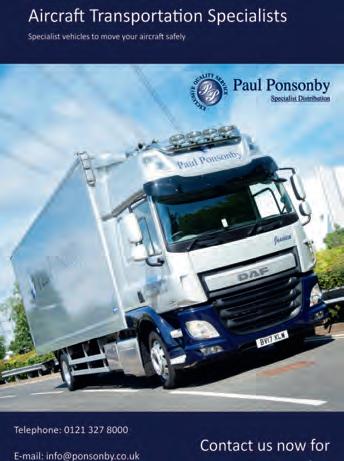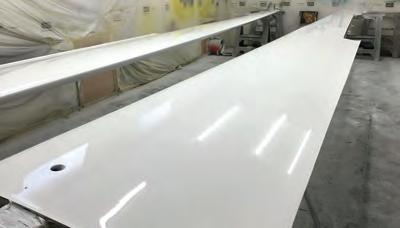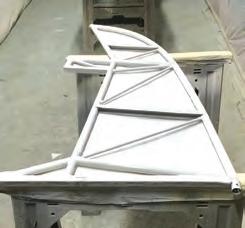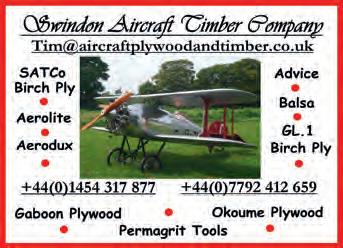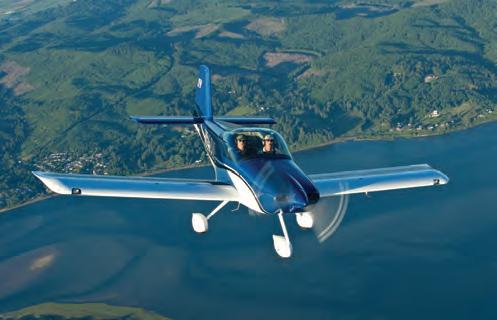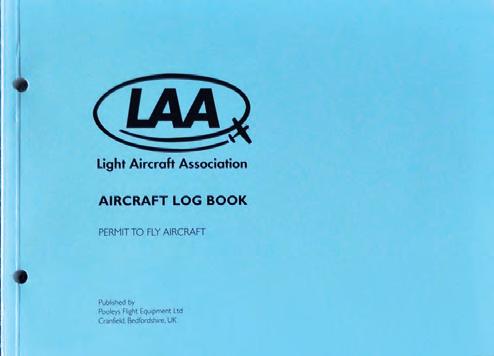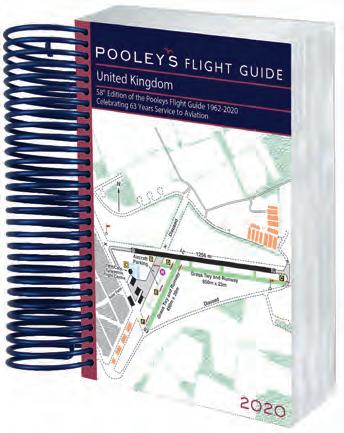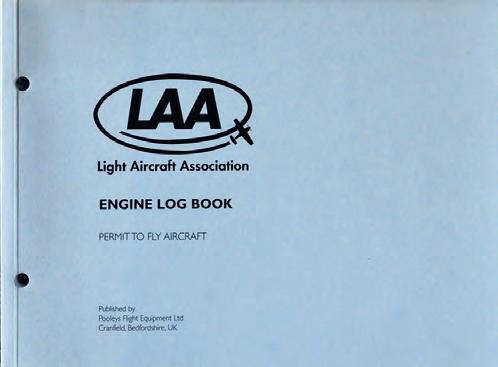

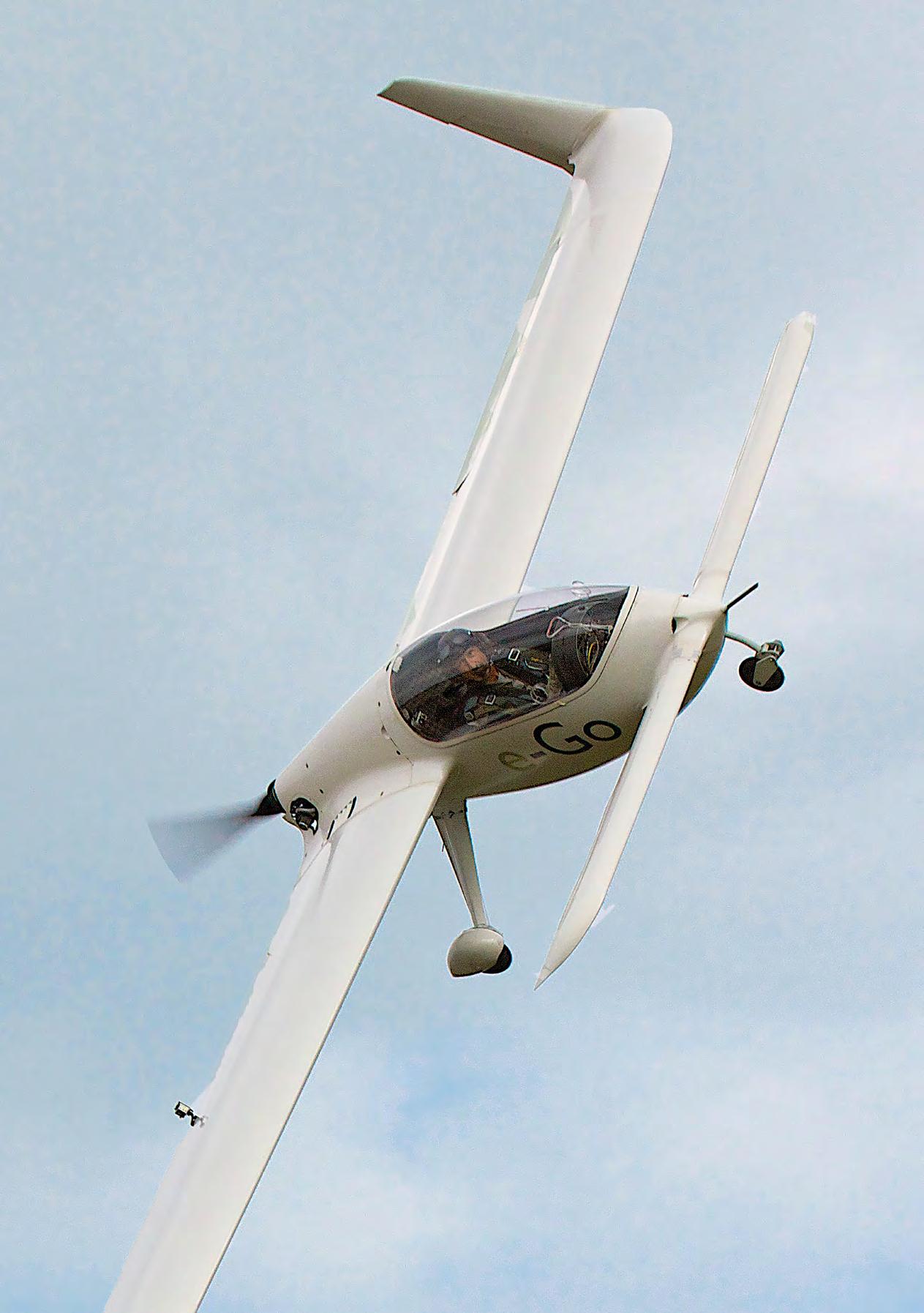



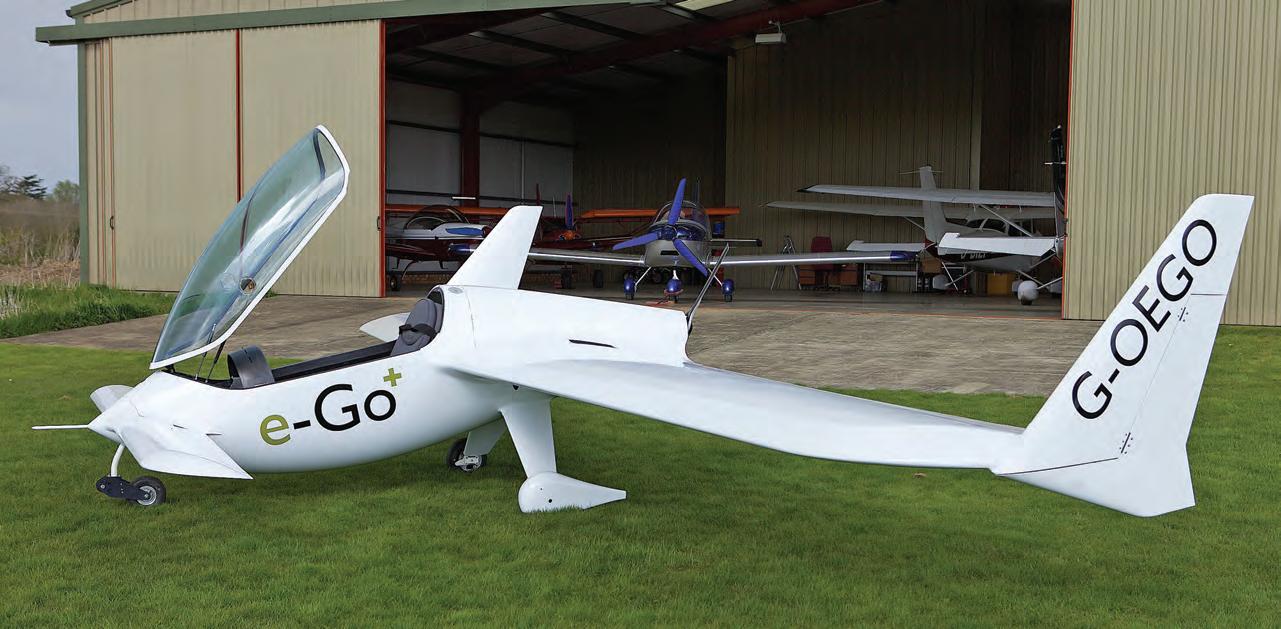








Well, although the weather is about to start picking up, Covid-19 has certainly thrown a spanner in the works as far as the 2020 flying season is concerned. With so many events already off, and more cancellations occurring daily, we have reluctantly decided to cut Where to Go and our Landing Voucher columns, plus the list of events in Struts4U for this month, and will review the situation on a monthly basis.
Clearly there’s little point in advertising events that are almost certainly going to be cancelled as government advice seemingly speeds ever more quickly towards what they call ‘lockdown’. I know that for many of us it is going to be more like ‘lockup’, but I refuse to be uptight about it; there are events in life that simply can’t be helped, and this is one of them. We must all be sensible, pull together, and look out for each other.
What can be helped however, is the EU behaving like spoiled kids and blocking the renewal of the derogation that allows UK pilots to fly UK registered EASA aeroplanes in UK airspace on a Self-Declared Medical. That’s a totally avoidable paperwork exercise that is as easy to do as it is to undo. They ought to be ashamed of themselves. One can only hope that if they learn anything from Covid-19 it is that life is too short and too precious to be so damn petty.
Our cover feature this month is the e-Go, an aircraft that sprang from the Association’s 2007 SSDR design competition. Rather than a very basic minimalist machine, which is what many feel the SSDR category embraces, designer Giotto Castelli and
experienced homebuilder Tony Bishop envisaged a state-of-the-art machine capable of serious cross-country flying.
Their e-Go adventure sadly faltered just as the first production prototype was completed, but it may yet rise from the ashes, as Giotto looks to cut production costs and re-introduce the aircraft to the marketplace.
I’d like us all to welcome the winners of this year’s Armstrong Isaacs Bursaries, each of whom is featured this month (P28) as they not only receive £1,500 worth of flying training, they are also now members of the LAA. The fact that we had more than 60 applications for the bursaries highlights the fact that there’s a healthy number of youngsters currently learning to fly, and that has to be a positive situation as we look to the future of our hobby. Good luck to them all as their training progresses and we look forward to hearing how they get on.
Incidentally, if you are stuck at home why not consider submitting an article for the mag? I am always on the lookout for good copy. Ahh, that’s the doorbell, must go, could be my toilet paper delivery. I hope the driver’s got a forklift…
Be safe, be kind and be happy. Brian
 By Brian Hope
By Brian Hope
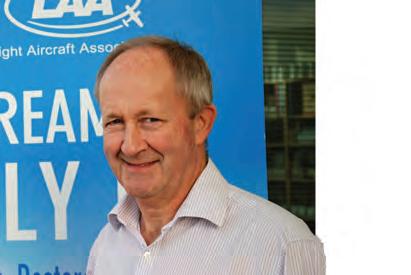
Just when you thought that we were reaching the final stages of the truly ghastly winter weather we have been having, along comes this ‘other thing’ (I refuse to give any more exposure to that word than I have to…) set to test our patience and resilience right at the start of our flying season.
Steve tells me that we have had to cancel and postpone a number of events in accordance with government guidance, so we are all bitterly disappointed that we are not starting the season on the right foot. Despite this, I hope that you and your families are able to navigate your way through safely, and our collective best wishes go out to you all.
This current set of circumstances is unprecedented in modern memory for one reason, and that is that at a time when we should be able to rely on our community coming together, we are encouraged to split up and not meet, not even to share a glass or two. For civil aviation generally, this will go down as a seminal moment in our lifetime, with talk of airline collapses and even airport closures. And yet, there is something unarguably attractive in the resurgence that will surely come in our type of flying.
Fun, affordable flying never looked so good and, when you add in our separation from EASA and potential wider use of Permit aircraft, imagine the possibilities from a sector that could react swiftly to any uptick.
But then, I wonder if we sell our flying as well as we might. I’ve had conversations recently – you know BC –when quite sensible pilots more used to certificated aircraft, have expressed a jaw-dropping lack of appreciation for
what you can currently do in a Permit aircraft, including flying abroad –amazing. I think their concept of a Permit aircraft still involves wicker seats, so maybe we should put more effort into our publicity, eh Steve?
At the time of writing this article, there was ever more pressure from the Government to cut oneself off from the world and stay at home, most unlike are usual desire to mix with friends and fellow aviators and get out and about to enjoy our splendid isle from on high. What to do?
Well, here’s what I’m going to get stuck into:
■ I’m going to revisit my checklists and make sure that the sequence of checks makes sense, and accentuate the areas where important checks can easily be missed.
■ Read my POH (do you have one?) again and make sure all the vital bits of information are readily referenced.
■ Plan my top 10 destinations and routings using manual charts, pilot logs etc., ‘the old-fashioned way’, to keep my skills fresh just in case someone turns off the GPS signal. And I’m going to do this through Farnborough’s new airspace to get an appreciation before I do it for real.
■ Get out to the aircraft if I can and at least keep it clean and well maintained, ready for the off when weather and the restrictions permit.
There’s bound to be more we can do, I think you might be hearing from Francis soon on that one.
Last but not least, don’t forget that LAA members can achieve satisfactory social distancing by engaging throttle and joystick – good luck.
06 NEWS
EASA flying with UK PPL, NPPL and Self-declaration. LAA/BMAA merger talks suspended
09 LETTERS
How can we deter Rotax engine thieves? Transponders must be on!
10 STARTER’S ORDERS
Prop swinging is a skill that demands great care and good technique, says Steve Slater…
14 PROJECT NEWS
Electric Zenith CH 750, Fairchild 24W-41A, New Projects and Cleared to Fly…
20 FLYING ADVENTURE
In a bid to recapture the thrill of flying for one pilot who had lost his ‘mojo’, Martin Ferid sets off with him to Kortrijk, Belgium
26 COACHING CORNER
COVID-19 and the PCS. Beware of the cockpit ‘silent killer’, says David Cockburn, PCS Head of Training
28 AND THE WINNERS ARE…
LAA proudly introduces the winners of the 2020 Armstrong Isaacs Bursary awards
31 AIR COURTAGE
The future of aviation insurance
32 FLIGHT TEST
Francis Donaldson flies the eGo
38 FIBREGLASS REVISION
A trio of friends, who met at their local Strut many years ago, have a bonding experience, as Phil Hall reports
42 BLOOD, SWEAT AND TEARS
An update on the Mark Manwaring’s Flight of the Navigator Project
46 STRUTS4U
Anne Hughes profiles the activities of the Struts, plus a note on cancelled events
50 SAFETY SPOT
A flying wire failure during aeros, perished fuel hose and FOD. Plus be alert to Alerts
56 MEET THE MEMBERS
We meet Binder Smaragd co-owners and Bristol Strut stalwarts Mary Leader and Trevor Wilcock
60 CEO THOUGHTS
There are challenging times ahead with COVID-19 and EASA licences and self-declaration


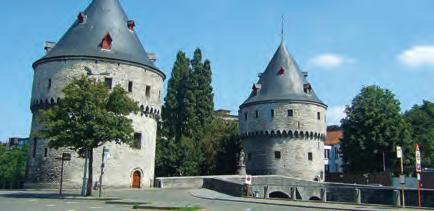
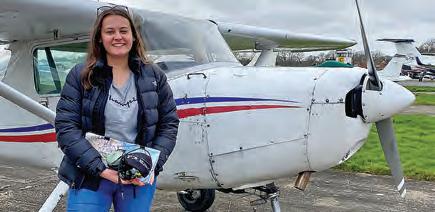
On Friday 20 March, the LAA Board wrote to the BMAA to say that they had decided, regretfully, to suspend the merger discussions between the two associations. The LAA Board anticipates that there will be a continuation of collaborative effort underpinning the mutual passion for aviation and wishes to signal their readiness to enter into further
discussions as and when a unanimous BMAA Council position has been established on the subject.
Steve Slater, LAA CEO commented: “It’s disappointing, because there has been a great deal of work done by volunteers from both organisations and I personally feel it is a huge opportunity being missed. Together, we have demonstrated that a future single
Amid so much gloomy news, let’s all look forward to later in the year when, hopefully, the world will have turned the corner and life will be returning to normality. With that in mind, planning for this year’s LAA Rally, due to be held at Sywell on 4-6 September, which has been underway for some time, is continuing.
The format will continue the successful partnership between the LAA and Sywell Aerodrome and bring together exhibitors, builders, flyers and enthusiasts to what is widely recognised as the pre-eminent fly-in event in Europe.
Our featured aircraft theme this year will be ‘Radial Roundup’, those aircraft with wonderful round engines, large and small – the Pratt and Whitney Wasp of the Harvard to the diminutive Pobjoy Cataract of the BA Swallow.
In addition to exhibitors’ stands, we aim to expand our programme of informative talks and presentations in Speaker’s Corner and hold another keynote presentation on the Saturday evening following the success of
organisation can be viable, would be a powerful voice for sport flying, and our Board and the wider LAA membership believe in principle it is a good thing. Sadly, we haven’t had similar reassurances from the BMAA Council and their members, so we’ll focus on the LAA’s future but keep working together in areas where BMAA and LAA can jointly promote our mutual passion for flying for fun.”

Ivan Shaw’s talk last year. There are also plans to enhance the members and Struts’ Pilots Lounge and repeat the evening social event for Strut members with a Hog Roast on the Campsite, together with the usual entertainment and bar in Hangar One.
We have been working closely with Sywell and the CAA to secure an increase in arrival slot numbers and the ability to offer ‘on the
Once the COVID ‘lockdown’ comes to an end, the LAA has come up with a new initiative to encourage younger visitors to airfields (not to mention their mums, dads and grandparents).
The An Airfield Adventure colouring book, produced by the LAA in association
with leading children’s illustrator Ursula Hurst, is aimed at ‘little aviators and big aviator helpers’ and its 16 pages are filled with puzzles, drawing and other activities covering all aspects of life
day’ slots arising from cancellations once again, and are optimistic that we will soon have good news on this front.
September may be a long way off, but we remain hopeful the Rally will be able to go ahead and offer some light at the end of what is going to be an extremely challenging summer for everyone. We will continue to provide updates as the summer progresses.
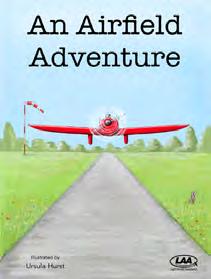
on an airfield – leading to an ‘LAA Airfield Adventurer’s Licence’. Copies of the book will be sold for £1 by LAA Struts to raise local funds, or copies can be bought from the LAA Shop for £2, including postage.
We cannot ignore the impact of the Coronavirus or COVID-19, on all our lives. In the past weeks we’ve been making sure that the LAA HQ team has resilient back-up systems to ensure we can handle permit administration, engineering support and enquiries, even if we have to reduce office staffing to the minimum.
You should have received in recent weeks, emails keeping you up to date on the situation; if you haven’t, it could be that we don’t hold your correct email address. If that is the case, simply drop us an e-mail to office@laa.uk.com with your name, preferred email address and membership number and we’ll make sure you receive any urgent messages from us.
Basically, we made plans based on three contingency levels: normal service, reduced staffing, and a full closure of our offices. In mid-March, in line with Government advice, we moved to ‘Level 2’, with fewer members of staff in the office and others working from home on rotation. We still have the option to activate ‘Level 3’, with the office effectively closed and all the HQ team working from their homes.
Fortunately, part of our IT investment in recent years has enabled our records and databases to be stored outside our offices ‘in
the Cloud’, which will allow members of staff to work from home and ‘self-isolate’ if required. Even if things escalate to a stage where we are forced to close the office completely, while there will inevitably be some disruption, we are still in a position to issue permit renewals and modification approvals online.
Clearly though, ‘home working’ or having a restricted office presence means we will not be as readily available by telephone. If you have an enquiry, please help us to help you by emailing rather than phoning; either to office@laa.uk.com or engineering@laa.uk. com. Please avoid using personal email addresses too, indirect messages will get logged into the system by the admin team –and in these coming months as the virus takes effect, it will be particularly important not to assume that individuals are at their usual desks.
At the time of going to press, there haven’t been any restrictions placed on private flying. We are in daily contact with the CAA and DfT on this and have made the case against any prevention of GA flying, unless
there is clear and pressing evidence of a health or safety case.
There is minimal likely risk to a pilot flying solo, providing pre- and post-flight social contact is minimised. There is clearly a greater risk of virus transmission if two or more people share a cockpit, but this risk is no greater than if they were sharing a car.
In contrast, there are a number of potentially adverse aviation safety implications of stopping flying. It would restrict pilot currency and continuity flying, creating risks which would outweigh any theoretical benefits to public health as things stand at the moment.
We’re currently discussing with the CAA, mitigating any difficulties which might arise from flying clubs, schools restricting dual instruction training, which may have a future impact on PPL revalidation and licence renewal flights. We would also advise owners whose aircraft may shortly require a CofV renewal check flight, to consider carrying out such a flight sooner rather than later, in case increased COVID precautions do restrict flying in the future.
In the meantime, please monitor our website on www.lightaircraftassociation. co.uk and our Facebook page for the latest information.
The Flying Yesterday and Tomorrow concept proved a challenge for many of our young artists, but over 70 imaginative entries for the UK national segment of the FAI International Art Competition were received at LAA headquarters by the end of January. This is the third year that the LAA, under the stewardship of Anne Hughes, has facilitated the contest for the UK.
In February we asked the editor of Pilot, Philip Whiteman, Chairman of the Guild of Aviation Artists Andrew Latham, and artist Eugenio Facci, to join Steve Slater (LAA CEO) to select the UK prize winners. After much discussion, three entries were chosen from each age group with a flight in a light aircraft, funded by the LAA, offered as the
first prize in each category. The winning entries will now be sent to the FAI in Switzerland for international judging.
Sincere thanks to all who spent time and energy at airshows, events, youth groups and schools encouraging young people to send entries for the competition. A new title for the 2021 competition will be announced in a few weeks’ time with details on our at www.lightaircraftassociation.co.uk/art
Congratulations to our winners, who are: Junior group: Henry Bean, Fleur Bouchaud and Daisy Harris
Intermediate group: Charlie Wilson, Bonnie Salter and Nathan Cox
Senior group: Callum Doak, Millie Bailey and Ben Berry.
It is sad, but perhaps inevitable in the current circumstances, that we have been forced to postpone the planned 2020 LAA Scottish Tour, which was scheduled for late May and which attracted more than 90 expressions of interest. We are so grateful to all parties engaged in the
organisation, including the Scottish Aero Club at Perth, the local Struts, airfields both north of the border and en route through England, NATS and so many more who have been so helpful and enthusiastic about the tour. They have already expressed their enthusiasm to help with

the event in spring of 2021, the Association’s 75th Anniversary year.
Sadly the ‘Meet the LAA Days’ at Eshott on 23 May and at Perth on 30 May, marking the start and completion of the tour, have also had to be cancelled at the request of both airfields.
Inevitably, as the Covid issues have intensified, more and more events have had to be cancelled – to the point where information that appears in the magazine will very likely have changed by the time you read it. As of 23 March, some of the more imminent events that have been cancelled are AERO Friedrichshafen (initially postponed but now cancelled), the Ernie Horsfall 102nd Birthday fly-in at Blackpool on 18/19 April, the one-day Duxford General Aviation Expo on 25 April, the Popham Microlight Fair on 2/3 May as well as the majority of Strut and Club meetings for April and May. Aero Expo at Booker on 11/13 June has also now been cancelled. As and when the situation improves, and we can once again mingle, it will be advisable to check any advertised event to ensure it is in fact still going ahead.
We have been planning a return of an Introduction To The Jabiru Engine course to be presented by Jabiru expert Roger Lewis, but the proposed dates in May have had to be cancelled. However, we would like to gauge demand, so if you are interested in attending such a course, drop an email to the office@laa.uk com address so we can contact you when new dates have been arranged.
This one-day introductory course has been crafted to meet the needs of the Jabiru 2200 and 3300 owner who’d like to understand their engine a little better.
Though centred around ownermaintenance, Roger will guide the attendee into the deeper recesses of the engine’s construction, right down to the crankshaft. If your aircraft is powered by a Jabiru engine then this course will definitely be useful to you. The proposed course fee will be £120.
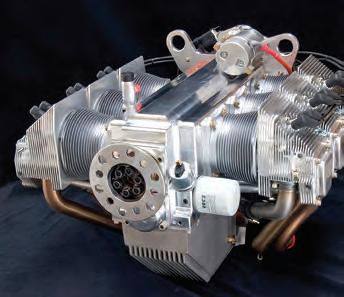
Below right TLAC will soon be marketing the Comco C42C in the UK
UK Comco agent The Light Aircraft Company Ltd., based at Little Snoring Airfield in Norfolk, will take delivery of the UK’s first C42C model, to use as their demonstrator, in May 2020.
Since the launch of the Rotax 912 powered factory built C42A in the mid-90s, the type has been popular with training schools and private owners, moving on to the improved C42B variant in 2002. Although the C42C ha been available in Europe for several years, it is only now after significant testing that it makes its UK debit at the current 472.5kg microlight weight (includes ballistic chute), with a future MTOW of 560kg in readiness for any new regulation changes concerning increased MTOW weight in the UK.
The C42C is not merely a facelift model, it has undergone significant upgrades and comes with aerodynamic enhancements including wing profile changes, composite wing tips with winglets and aerodynamic spades on the ailerons to further enhance its great handling characteristics.
With a typical cruising speed of 115mph and an average fuel burn of 10 to 13 litres per hour, the C42C is a serious ‘go places’ aircraft. A wide range of exterior and interior options include personalised colour schemes and custom control panel layouts.
TLAC is able to offer a wide range of funding packages for both individuals, groups and flight training schools. Call to book your test flight. 01328 878809, email sales@g-tlac.com
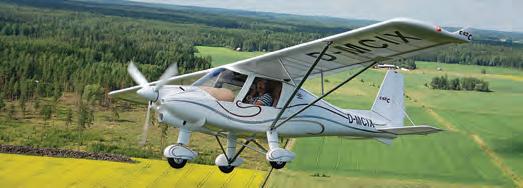
Pilots with an EASA Light Aircraft Pilot’s Licence (LAPL) or Private Pilot’s Licence (PPL) who are using a self-declared medical to fly an EASA certificated aircraft in the UK, will no longer be able to do so after 8 April. They will have to get a LAPL Medical Certificate or a Class 2 Medical with an Aero-Medical Examiner (AME) or a LAPL Medical Certificate with their NHS General Practitioner (subject to certain criteria).
And pilots currently using an NPPL or a UK PPL to fly an EASA aircraft in the UK will also no longer be able to do so after 8 April, they will need to obtain an EASA LAPL or PPL.
The exemption from EASA regulation that allows both of these privileges in the UK expires on Wednesday 8 April 2020. It can only be renewed if EASA extends its own derogation that permits National pilot licence holders to operate EASA certified aircraft.
Left We will soon be holding Jabiru engine courses. Let us know if you are interested.
EASA has not yet published a decision on extending its derogation, despite the efforts of the CAA and the DfT to resolve the issue, and are advising pilots who are likely to be affected to consider booking and completing a LAPL or Class 2 Medical to enable them to continue flying. Information about obtaining a GP-issued LAPL can be found here: https://tinyurl.com/rsx97nx
■ Pilots flying non-EASA certificated aircraft, such as LAA Permit types, with a NPPLs, UK PPLs and/or medical self-declaration in the UK are not affected.
Thank you to those who have offered support and kind comments to myself and others who have recently had their engines stolen. I appreciate that the police have difficulty in resolving this issue as it would appear that they treat it as a local issue and perhaps fail to appreciate the value of the total losses incurred – the theft of Rotax 912 will cause an insurance claim in the order of £28,000!
Even before my loss, I was talking to another Europa owner, who had a similar loss late last year, about security in rural locations. He and I are now independently working towards anti-theft measures but have yet to find a solution. I have been looking at vehicle tracking devices but have not been able to find anything suitable.
My aircraft (at least what is left of it) is in
I think that our association is best placed to investigate preventative strategies, there must surely be some security expertise among our membership who can help identify solutions.
Steve Slater is happy to coordinate responses and host a working group if required, so in the spirit of self-help for which our members are noted, any ideas on how we can make life far more difficult for the perpetrators of these crimes will be most welcome. In the first instance, please write to office@laa.uk.com
Just to close, my only workable (maybe) idea so far is to put a form of car alarm on the aircraft to go off if the cowling is removed but of course, this will only work if you have people close enough to hear it.
Regards, Tim Houlihan, G-RIXS“Any ideas on how we can make life far more difficult for the perpetrators of these crimes will be most welcome”
just cause the thieves to scarper. Better to notify the police, who may be in a position to catch them red-handed.
Does anything like this exist? If not, do we have any techies among our members who would be up for putting something together?
Kind regards, Brian Mellor, LAA Coach.
Good Morning Brian. Just got my LAA mag and a line in your Weather Warning (Editor’s Desk) caught my eye. (see, you are read!)
“Please note that not using your correctly functioning transponder is illegal”. This is surely incorrect. Not using your transponder may be inadvisable, but I never thought it to be illegal. Kind Regards, John.
I’ll spare John his blushes by not using his surname but in case others are unaware, European Standardised European Rules of the Air (SERA) 13001: Operation of an SSR transponder came into force in the UK in 2017. It states
(a) When an aircraft carries a serviceable SSR transponder, the pilot shall operate the transponder at all times during flight, regardless of whether the aircraft is within or outside airspace where SSR is used for ATS purposes.
(b) Pilots shall not operate the IDENT feature unless requested by ATS.
a hangar that is part of a farm complex. It has several occupied houses within 50 or so metres, the nearest one owned by the airstrip operator. It has WiFi but the signal does not reach the hangar, and there is also electricity in parts of the hangar.
I am getting the feeling that working individually will lead to, at best, duplication of ideas and more likely, third rate partial solutions devised by pilots who are not security experts. I therefore contacted LAA HQ as I think a good number of LAA members are in the same situation as those who have joined the ‘stolen engine’ club in that most permit aircraft live in a rural location that is difficult to secure. As my friend found out, even a steel hangar and a sturdy lock is not sufficient. Apart from Rotax engine thefts, I know that members have suffered unwelcome intrusion, damage and fuel thefts, so these are by no means isolated incidents.
…and again
Just started to read the current LAA magazine, and like everyone else I was horrified to read about the Rotax engine thefts. It got me thinking that with today’s technology, surely there must be a way to help prevent or at least reduce these occurrences. Perhaps something along the following lines.
Nearly everyone has a smartphone, and probably at least one older phone that is no longer in use.
■ Use this old phone, with a cheap sim card (like giffgaff) and a bespoke app.
■ A microswitch (or other type of sensor) could detect the removal of the cowling, and signal the smartphone.
■ The phone would then call the owner’s phone (and/or send a text message) who would decide on what action to take.
Personally, I would prefer this notification rather than sounding an alarm, which could
(c) Except for flight in airspace designated by the competent authority for mandatory operation of transponder, aircraft without sufficient electrical power supply are exempted from the requirement to operate the transponder at all times. Ed.
Dear Brian, avidly reading like I do, your magazine, there appears to be a slight error in the Rotax course article (page 42, top right) where the author has, ironically, confused the terms slipper clutch and sprag clutch while stating these items should not be confused….! It should have read:
He explained that most Rotax engines have a slipper clutch which wears out over time and needs to be checked. This is done by locking the gearbox with a special Rotax locking pin…..
The slipper clutch should not be confused with the sprag clutch, which also wears over time and is much more complicated to replace and is attached to the starter motor.’
Regards, Jerry ■

Prop swinging is a skill that demands great care and good technique, says Steve Slater…
It’s the time of year when (we hope) the weather will allow airfields to dry out and aircraft to re-emerge, blinking, into the sunshine. Some of those aircraft may be a bit recalcitrant to instantly spring into life. A pilot’s starting techniques may also be a bit rusty and this is particularly important if the aircraft has to be handswung, or started by the ‘Armstrong method’.
There is, sadly, a steady stream of one or two incidents each year which continue to demonstrate that while prop-swinging can be carried out safely by following the right procedures, it is like many things in flying, inherently unforgiving of inattention or a lapse of the correct practices.
There has been no shortage of advice and information on prop-swinging down the years and I’m indebted in this article to among others LAA Safety Working Group colleagues Mark Wakem and John Marriott, Head of Coaching David Cockburn and Vintage Aircraft Club stalwart John Broad for their input and comments, which have allowed me to cover a wide range of different types, engines and techniques.
Main Starting the 230hp Bentley Rotary (BR-2) engined TVAL replica Sopwith Snipe ZK-SNI looks like it could be a bit of a challenge. Someone in the cockpit, a person on each wingtip and a fire extinguisher show that the Shuttleworth crew appreciate the potential risks.
Photo: Alan WilsonWe’re not even talking of the exotica of vintage rotaries and radials here. There is a world of difference for example, in swinging the propeller of a Gipsy Major on the front of a Tiger Moth or Auster, a Continental or Lycoming on say, a Cub or Pietenpol, or swinging a propeller attached to a VW-based aero-engine. I regard the latter as similar to baiting a Jack Russell terrier. It will go from silent indifference to attempting to bite you in a fraction of a second…
However, the most important thing is that anyone swinging a propeller, whether working in conjunction with a pilot in the cockpit or with the aeroplane suitably chocked, and in many cases with the tail tied down too, swinging solo you MUST have a standard set of procedures and stick to them – without interruption or distraction.
Position
Look at where the aircraft is parked before even considering trying to start the engine.
It should be located so that when it does start the propeller wash does not blow into an open hangar or

into the front of a building where the doors or windows may be open or opened. Also ensure that no other aircraft is parked behind which may be moved or damaged by the propeller wash on starting.
If the aircraft is parked on grass then consider the surface where the person starting will stand. Is it uneven or covered in stones or other loose material? That can be potentially damaging to the aircraft if it is caught in the propwash and if the surface is wet or damp, would that cause a slip hazard? It is not worth taking a chance, the risk of slipping, damage to the propeller, or injury to the prop-swinger is too great. Move the machine to a more suitable location.
Remember that if you are starting an aircraft on tarmac, the opportunity for the machine to roll forward is increased. Also, chocks may not grip the surface and should be checked for their ability to restrain the aircraft. Curved chocks will work better than triangular unless the base of the chock has some form of tooth to dig into the surface.
You’ll notice I’m not even mentioning brakes here. Many vintage types of course don’t have them anyway, relying on the chocks while starting and the drag of a tailskid for braking while taxying. However, even if an aircraft is fitted with a parking brake, I wouldn’t trust it, particularly if starting solo. I prefer to have chocks in place as an added insurance that the aircraft won’t move forward unexpectedly.
The person starting should check their own clothing to ensure that jackets are securely buttoned, zipped or removed, and scarves or any other loose items are either tucked securely in or removed to a safe
Above Thumbs up – Switches ON. Starting the BE2 replica. Having a knowledgeable occupant in the cockpit while prop swinging is always the best option.
distance. If wearing a cap ensure it is secure or again remove it and place it at a safe distance. A cap blowing off in the wind could distract the person just as the engine fires, putting them in a dangerous position.
Remove rings from fingers as these may not only cause injury but can damage the propeller, especially if it is wood or laminate. Footwear can be important as sandals, flip-flops or even shoes with loose laces can constitute a hazard. It is recommended that shoes should be worn which provide good support and grip and are securely attached to your feet.
It is also important to recognise the stature of the person willing to swing the propeller relative to the aircraft propeller. A machine such as the Tiger Moth may have the blade in a position too high for a shorter person to comfortably reach, which would put them off balance during the operation. Equally a tall person attempting to start something like a Jodel Bébé, may be off balance and, by leaning forward, could place their head in line with the prop blades as the engine starts. If you are in any doubt about your balance and ability to move clear at the end of the swing, do not even think of attempting it, your life is worth more than the risk.
If a person is to operate the controls from within the cockpit, the person starting the machine must remind them that as they are working at the dangerous end –the starter person is in charge.
When prop swinging was the norm, set procedures were developed, primarily by the military, to ensure the person in the cockpit and the person swinging the
propeller had complete understanding of who was doing what and when. Member Nick Radford recently sent us a note outlining the procedure from his late father’s training notes when he was a fitter in the Fleet Air Arm just after the war, and those procedures are as relevant today as they were then. Let’s call the person in the cockpit ‘Cockpit’ and the person swinging the prop ‘Swinger’. The recommended procedure is:
■ Cockpit turns on the fuel, closes the throttle and ensures the switches are OFF. He then gives a thumbs down signal to Swinger and calls out, ‘Switches off, fuel on, throttle closed, suck in’.
■ Swinger responds with a thumbs down and calls, ‘Switches off, fuel on, throttle closed, suck in’ and then turns the prop through to suck fuel through and stands clear. He then gives a thumbs up sign and calls, ‘Throttle set, switches on’.
■ Cockpit sets the throttle and turns the switches ON, makes a thumbs up sign and calls, ‘Switches on, throttle set Contact’.
■ Swinger steps forward and swings the propeller. If the engine fails to start and the prop has stopped against the next compression, Swinger will be able to approach again for another attempt. If the prop is in the wrong position, he will make a thumbs down sign and call, ‘Switches off’.
■ Cockpit will turn the switches OFF, make a thumbs down sign and call, ‘Switches off’.
■ Swinger will reposition the prop, stand back, make the thumbs up sign and call, ‘Switches on’.
“The risk of the propeller kicking back is one of the reasons you shouldn’t wrap your fingers over the trailing edge of the propeller”
Below A useful technique when extra grunt is required. Note the prop swingers’ trajectory is forward and away from the propeller.
If the engine fails to start and it becomes necessary to blow out excess fuel:
■ Swinger will make the thumbs down sign and call, ‘Switches off, throttle open, blow out’.
■ Cockpit will turn the switches OFF, open the throttle fully, make the thumbs down sign and call, ‘Switches off, throttle open, blow out’.
■ Swinger will turn the propeller backwards about six blades to clear the cylinders, and then the start procedure will begin again. It is vital that the throttle is closed and reset to the start position . This is one of the more common ‘gotchas’ so both parties should be absolutely sure that the throttle has been correctly set for starting.
Every type, and even individual aeroplanes, have their own starting techniques. For example, the process outlined in the Tiger Moth Pilots Notes, dates back to the 1930s when for a cold start, the Claudel Hobson carburettor requires a button to be pressed to ‘flood’ the float chamber and allow extra fuel to be introduced to the cylinders. The ubiquitous Continental and Lycoming engines usually use a primer or an accelerator pump on the throttle to pump the extra fuel into the cylinders, while automotivederived engines often use a choke to provide the rich mixture.
Setting the throttle of course is particularly critical. Too high a throttle setting will introduce excess air into the cylinders, increasing the risk of the propeller ‘kicking back’ due to a lean mixture. Of course, if it does fire, it will be at high revs, increasing the risk of


jumping the chocks, or even raising the tail on a taildragger, even if the stick is being held or tied back. Some pilots mark their preferred throttle setting on the quadrant or throttle control so they can have a smooth and stable start. Go beyond it, and things can get exciting very quickly!
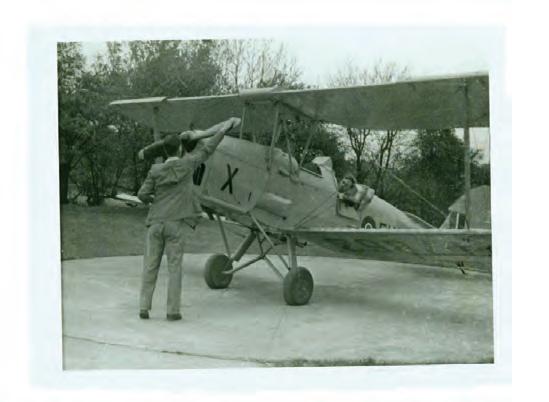
The risk of the propeller kicking back is one of the reasons you shouldn’t wrap your fingers over the trailing edge of the propeller – if it kicks back you could receive severe bruising or worse. The military for many years briefed their prop-swingers to use just their right arm, holding their left arm behind their back. However, I find that this encourages me to loop my fingers over the prop.
I prefer to use both hands with the fingers on the front face of the prop only. It does of course mean that you are placing your head and body closer to the prop as you swing, but I mitigate that by taking a step backwards as I swing. The important thing is to, initially, have some instruction by someone with experience, and to listen to their advice.
Some people with aircraft such as Cubs and Tiger Moths, swing the propellers from behind, allowing them to quickly reach the mag switches or throttle if something untoward happens. Again, it is all about developing the best and safest procedure, then sticking to it.
This specifically applies when things are not going to plan, such as a recalcitrant engine. As anyone who has tried to start an engine, whether a Gipsy Major, Continental, Lycoming or VW, when they are in that ‘not quite hot, but not quite cold’ scenario, one is never entirely sure whether you have got the starting mixture too rich or too lean. The important thing here is again, to stick to a standard procedure. Decide in advance that after so many swings of the propeller, you will turn off the magnetos, open the throttle and

turn the propeller backwards to blow out excess fuel. And having done so, you will of course remember to close the throttle won’t you?
Top left A runaway at Barton in 2006 –the aircraft was unmanned and was started without chocks after the engine stopped at the runway hold. The consequences could have been much worse. Photo: Alan Mosiezny
Top right Though switches are off when pulling through to prime the engine, the prop should always be treated as live. It would be better not to wrap one’s hand around the prop. Some pilots wear gloves when prop swinging for added protection.
Above A lovely period shot taken at Panshanger in 1948. Surprisingly no chocks are in place, but it does appear that the tailskid may be tied down – a recommended action if the aircraft has no brakes or is unmanned.
If you are getting hot and bothered after swinging the propeller fruitlessly for a while, stop. Turn off the switches, close the throttle and walk away for a few minutes. Even have a cuppa, to let the engine get sufficiently cool to allow you to return refreshed and use your proven cold-start procedure.
The chances are that any excess fuel that has pooled in the inlet system will have by then turned into a nice cloud of vapour that will give you just the right mixture to start anyway. Equally important, you might just break the potentially dangerous cycle of swinging the propeller expecting it not to start, then being taken by surprise when it suddenly bursts into life in front of you!
Another important thing is to not be afraid to ask for help. If there is someone suitably qualified around, don’t be afraid to ask them to ‘cover the throttle for you’ or assist in a suitable manner. Do, of course, ensure that they are properly briefed and know where the magneto switches are. I know of at least one quirky French aeroplane where the magneto switch operation (and placarding) took a group of us some time to translate!
I would be very cautious of trying to ‘swing’ an engine which is not normally hand started. It’s almost certain that the propeller is not in the right position for safely swinging, and when it comes to geared propellers, such as on a Rotax, just say no.
My final comment on propellers is, whether they are hand swung or electrically started, always regard them as potentially live. I was certainly glad that I did a couple of years ago when, after checking ‘switches off’ with a pilot in the cockpit, I was pulling through the propeller to suck mixture into cylinders when the engine suddenly fired. It turned out the pilot had accidentally flicked the switches on with his elbow while he was adjusting his seat belts. I certainly learned about flying from that… ■

Isuppose I should consider myself very lucky that in early March I was able to take the mower out of hibernation, fill it with dinosaur juice, pull it through a dozen times and coax it into life and cut the lawn. Following the record rainfall of February, there must be many grass strip flyers that would have loved that chore, along with the possibility of flying.
Only two projects this month received their Permit to Test, but a very healthy number have been commenced. I was surprised to see two Sling 4 TSi builds listed, but on looking back through last year, there are at least six ahead of them. It’s an impressive aircraft with its very capable Rotax 915iS, have a look on the internet if you have a spare browsing moment, African aviation does seem to be blossoming.
Andy Best has been working upon his own design ‘Blue Two’ for a few years now and I think it’s fair to say that he is approaching the home straight. I know that many readers are following this project, and I’m always keen to see how he is getting on. A warning though, one of his pictures does contain sunshine and a blue sky, remember those?
Tony Whitehead, who you may recall restored a beautiful and rare Morane Saulnier MS.317, has recently imported his latest project, a lovely radial powered Fairchild, which has been permitted to come onto the LAA register – he makes the process sound straightforward but I’m sure its smooth success is down to his experience and diligence. As I’m sometimes reminded, we make our own good luck!
When it comes to a stimulating topic of conversation now that the ‘B’ word is out of the way, then the death of the internal combustion engine and the electrification of transport is guaranteed to provide opinionated debate.
I imagine that when Orville and Wilbur made their first flight of some 120ft at Kitty Hawk, the detractors ‘poo pooed’ such an invention as worthless, perhaps claiming a bicycle would travel further and more cheaply. Still, less than 66 years later, mankind flew a quarter-of-a-million miles and set foot upon the moon. Relatively speaking, electric flight within our sport is probably only a little further down the road than the Wright Flyer, but things are changing quickly with technology migrating from that ever so very slightly less conservative industry, the automobile engineering.
Our sized electric flight does exist, but is still in the margin s
with the forthcoming Air Race E competition, Red Bull style competitive sprints and the likes of Rolls-Royce trying to take the electric flight speed record from Siemens with a custom-built airframe and powertrain.
Commercially, Wright Electric (imaginative name) has partnered with easyJet and is developing a pure electric A320 sized, 1,000 mile range passenger aircraft with proposed entry into service this decade.
More down to Earth and practical is Pipistrel, with their Alpha Electro training aircraft that has been in production for a while now, in fact they have recently increased their production from four to six aircraft per month – so someone is buying these six-figure microlights.
With the increasingly vocal ‘green’ agenda, I can imagine that in the near future, a flying school utilising electric training aircraft could attract more new students because of its perceived environmentally friendly credentials, even if those students still drive to their lessons in their internal combustion engined car!
Interestingly, some of the above electrified examples employ modular battery swap out as a means of rapid refuelling, which the Wright Electric passenger aircraft also proposes. However, I recently heard through casual but informed conversation that Pipistrel were considering moving away from this model as a result of damage to the storage modules from the repeated handling.
I can think of only one electrically powered LAA aircraft that has been featured in Project News in the last three or four years, so I was excited to learn of Tim Bridge’s current Zenith CH 750 build. Tim, an engineer working on large solar farm projects for many years, has set about building a CH 750 with a difference – it will be purely electric powered – but that’s not the whole story, see what he is up to below.
So, am I off to purchase a Lithium Iron powered lawn mower? I guess so when the current Victorian tech one decided to pack up, especially as I can use my current range of monster power tool batteries in one – but what will I then do with the stale fuel drained from my aircraft…?
To get in touch with Project News , and tell your story, report a milestone or just to send a picture, email: projectnews@laaarchive.org.uk
Please share your story!
Nuncats is a registered Community Interest Company (CIC) established to change the shape of E-Mobility in developing countries. They have the blessing of, and indeed have partnered with, the Zenith Aircraft Company to develop an electric power system for an otherwise almost standard Zenith CH 750, plus an off-grid charging station to suit. Their goal is that the whole system could be used to provide really useful rural transport and medical supplies in areas where fuel, roads and infrastructure are a problem in general. The airframe is under construction now and they have just started on the first of the power system elements.
The key aim of the project is to demonstrate the viability and utility of electric powered flight, using cost effective and existing technology. Subsequently, supplying the home market on a commercial basis would then allow charitable organisations to be supplied at cost.
There are NGOs in Africa working on health and conservation projects on tight budgets and in very remote locations, using light aircraft as flying jeeps. Totally ‘off grid’, the supply of fuel can be a challenge, and these aircraft need to be cheap, rugged and easily maintainable. In this environment, some of our Permit to Fly types could be made perfectly suitable.
Rural solar generation is not uncommon in much of Africa and, by tapping into that existing infrastructure, an energy source is potentially available to fuel such an aircraft – after all, sunshine is far more widely available than avgas in the bush.
There are many projects underway by big names in the aerospace world to produce fast, efficient, loadcarrying prototype electric aircraft, stretching the limits of current knowhow to eke out that last little bit of performance. Nuncats’ approach is different. Why design a new aircraft when they can work with what currently exists, sacrificing leading edge performance for economy and quickly bringing it to market. We know it takes a long time for a new type to be developed, so what’s the point for a small gain in efficiency? Its premise is to use what’s already out there and that includes the airframe. As an aside, consider any airfield, many of the aircraft are decidedly vintage, these older craft are unlikely to be scrapped any time soon, so even some of these could be electrified.
For bush operation, an aircraft needs to be rugged and repairable, a delicate composite tadpole would probably not last past the first inevitable mishap – nuts, bolts, pop rivets, aluminium and straight lines make for a much more maintainable structure. The Zenith CH 750 and similar models are just the sort of ‘jeep’ that are needed, and there are a number in the theatre already.
The creative focus in this project is almost purely firewall forward, where an electric motor with sufficient power to replace a Rotax 912 is a tiny affair – imagine a stack of six to eight dinner plates and you just about have the shape and size. So, a new motor mount will be required, and this may well be longer than the original item, and as a result, new cowlings will need to be moulded. All of that space between the firewall and motor can then be filled with power electronics and some of the battery storage.

Meeting 100-hour services in the middle of nowhere also presents its challenges, so the almost total lack of a frequent maintenance requirement upon an electric motor, with perhaps two moving parts as opposed to hundreds within an internal combustion engine, also benefits remote aircraft operation.
Apart from building the airframe, they will create a total system where a practical and useful electric aircraft is the outcome of the project. It is a fact that today the energy density of petroleum spirit cannot be matched by batteries, and it possibly never will. Equally, the simplicity of refuelling by pouring that energy dense liquid into an aeroplane’s fuel tank will be hard to match.
So, their solution is for multiple yet manageable battery packs that are rapidly swapped at turnaround to provide a reasonable range. They even envisage the possibility of a partial battery load so that fuel can be traded for luggage as we would consider in current aircraft.
Solar powered charging stations will hold spare battery packs at the various stop off points along the regular route, with future plans to develop automatic reporting of their charge and availability status by radio or over the internet. Consequently, a modest range of 50 to 70 miles is perfectly adequate to fly a route that is effectively several hundred miles, but made up of multiple legs, as are the existing missions flown by charities. These outlying charging stations, a mesh network, can then take days or perhaps all week to replenish the packs deposited there. This might not be flight as we currently know it but it would enable off grid operations that can both save and improve lives. Closer to home, the endurance would be very suited to flying school one-hour training slots.
While the technology is being sourced and developed, Tim is getting on with the build of the airframe at a good rate of knots.
Started only in January, the fuselage has progressed to a rolling shell, ready for the work to commence firewall forward. He already has three airfields, two grass and one hard, who have agreed to site remote charging stations. Subject to maintaining progress, they hope to be doing ground power and taxi testing later this year, with a view to being on a permit next spring, flying short hops about the county proving that it can be done cheaply and in a way that is robust and sustainable.
You can follow Nuncats’ progress on Facebook, just search for Nuncats.
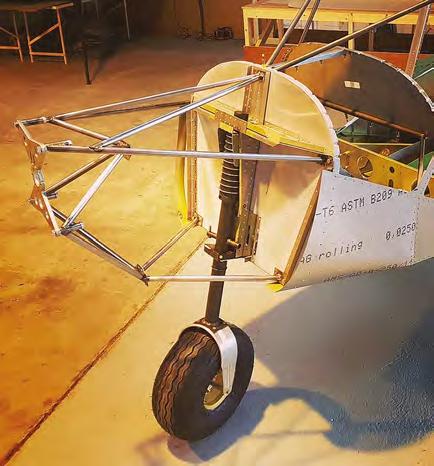
Ido feel a little embarrassed to admit that progress on building Blue Two has been rather slow of late. Like many things in life, the main problem is in your head – subconsciously, I was afraid of breaking the wings during load testing. It sounds a bit pathetic but when you’ve spent countless hours designing, calculating, foam cutting, assembling and doing lay-ups, trimming, sanding, filling, and yet more sanding, you just don’t want to risk wrecking it all. However, reading a few stories of in-flight break-ups puts things into perspective. It has to be done, so I must get on with it.
As a reminder, Blue Two is a 450kg microlight built to BCAR section ‘S’ but also uses some of the load requirements from CS VLA for good measure. Their control surface loading graphs are particularly useful and, as Francis says, they save endless amounts of ‘discussion’ about load levels.
The wing area is 113 sq ft and a Rotax 912S provides the power. The structure is from blue foam (Dow Chemical’s Floormate @ 34 kg/m³) sandwiched between
layers of carbon fibre, mainly 160 and 200 gm/sq m twill from R-G.de in Germany. The only fibreglass used is the UNI cloth in the main undercarriage legs, which gives them about three times the flexibility of equivalent carbon fibre parts.
The picture of the overall assembly shows where I have got to. All that’s required is to finish the wings, seats, canopy and the wiring, which unless I have a failure of the wings under test, should be completed by the end of the summer (I hope).
The engine bay is quite compact and was challenging to complete, but with the world’s most complicated engine installation ever invented by mankind, this was to be expected. In an attempt to reduce cooling drag, the radiator, which has a seven-row oil cooler fastened behind it, has its own airflow ducting. Time will tell whether I have got the duct sizes right. The stainless exhaust was bought as a kit of parts from Aeroweld Ltd., in the Czech Republic for €478. After cutting the tubes and clamping them together (with jubilee clips and metal

strips) the pipe assemblies were TIG welded by a local rally prep shop.
And so, onto the wiring. Solder or crimp, that is the question. I found convincing arguments for both, so in the end I decided to do both, initially soldering, then crimping over the soldered joint and the insulation and finally covering the connection with heat shrink sleeving.
After what seemed like years of sanding, it was quite a pleasure to do the wiring, but it does require some concentration and constant checking. As can be seen from the picture, it rapidly becomes chaotic looking. My advice now would be label everything and buy two to three times the amount of wire that you first think you need. The coloured aviation cable (not PVC) came from Parts4Aircraft. I have tried to keep all the electrical items which are normally found in the engine bay, inside the relatively cool and clean cockpit area. This is not normally a sensible thing to do, as access can be difficult, but because the instrument panel is integral with the canopy surround (like most gliders) and moves out of the way when the canopy opens, access here is OK.
The final picture shows the dreaded wing test rig. The wing is mounted upside down so that it can be loaded in the +ve ‘g’ sense. Loading it to just the limit load of 4g (i.e. the maximum load it would normally see in service) requires approximately 1.4 tonnes to be applied, so you can see why the test structure, which simulates the fuselage, is fairly hefty (and why I am nervous). I live in hope and vow to keep going.
Right This will be a tightly cowled engine, very neat. Photo:
Andy Best
Below right
Unusually, most electrical components are mounted on the ‘cool’ side of the firewall, but the panel has hinged up out of shot with the open canopy. Photo:
Andy BestBelow The wings mounted off aircraft so that they can be tested to maximum flight load. Photo:
Andy Best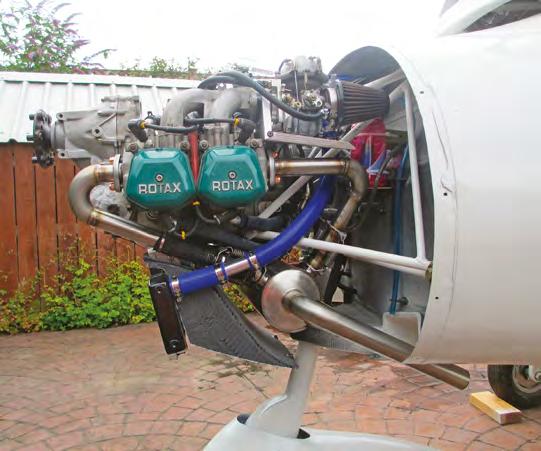

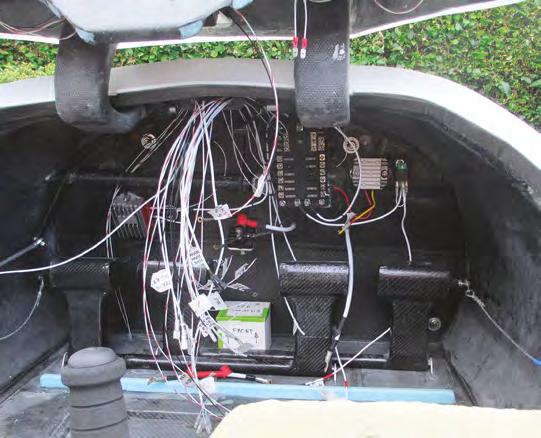
So, with my much loved and enjoyed Morane Saulnier MS.317 moving on to new owners, I had a think about what’s next, the restoration project in the workshop would be a while yet so I casually started looking with a small budget. Nothing much sparked my interest in Europe so the USA beckoned, also, it was going to be hard giving up that glorious Radial engine growl!
I had been keeping an eye on the Fairchild for a while and was surprised it had not sold. It turned out there was an interested party, who was dragging his heels. I left it for a while and conducted more research, finally getting the go ahead for an inspection some weeks later. This I had carried out for me by a local Florida firm, as it was much cheaper than flying out there myself. The inspection was encouraging and after much soul searching and acceptance by the LAA for this Fairchild, I negotiated a deal. Later that day the owner got in touch asking if I had second thoughts! Turns out the previously interested party made an offer
20 minutes after we agreed a deal! My offer and acceptance were honoured, thankfully.
Then the fun began. I had previously obtained quotes from Neel Aviation for shipping from his Lakeland base, but unfortunately the owner cancelled his insurance and was unable to deliver. Meanwhile, Hurricane Dorian threatened Florida and the owner was pushing for payment, needless to say that was delayed.
The ferry job from Indiantown to Lakeland was very kindly sorted by Charles Stence, the aircraft’s maintenance engineer. The price being fuel only, a welcome gesture, plus an insurance contribution. He used an EAA scheme, UK insurers wouldn’t touch it!
Dismantling and shipping went without a hitch. I requested delivery to Barton, my home field, with a crane equipped lorry, which added several hundred pounds to the cost but helped make the unloading relatively easy. The UK handling agents, Ligentia, were very helpful, including arranging the pre-payment of VAT etc. There is no duty to pay and only five per cent VAT
on an Antique. UK registration was straightforward, insurance cover from the LAA scheme very reasonable, and re-assembly was made straight forward by careful labelling of parts at the time of packing.
A major service and very detailed inspection were carried out, plus many small improvements and a general tidying up, and the task was pretty much complete. There were a couple of horrible jobs thrown in, the rubber fuel pipes connecting the fuselage to the wings were rock hard and required replacing. These had been removed for shipping and were labelled appropriately with the additional comment of ‘good luck’! It was a tortuous job.
Below Gently does it, modern containers are a great way to transport an aircraft.
Photo: Steve Grimshaw
Bottom The Fairchild in the hangar and ready for inspection and re-assembly.
Photo: Steve Grimshaw
A couple of flap cables were not up to scratch, again a time consuming and fiddly job. But overall, the aircraft and engine were found to be in extremely good condition, in fact better than expected condition if not cosmetically perfect, but I love the used original look.
Paperwork forms from engineering for the application were provided, then more forms for jobs done, history etc., enough to fill a small book. The Permit to Test arrived and was very welcome, and having flown now for a couple of hours, I am happy to report no snags and lots of fun. The Fairchild is showing huge potential, vintage aircraft really are incredible value for money.

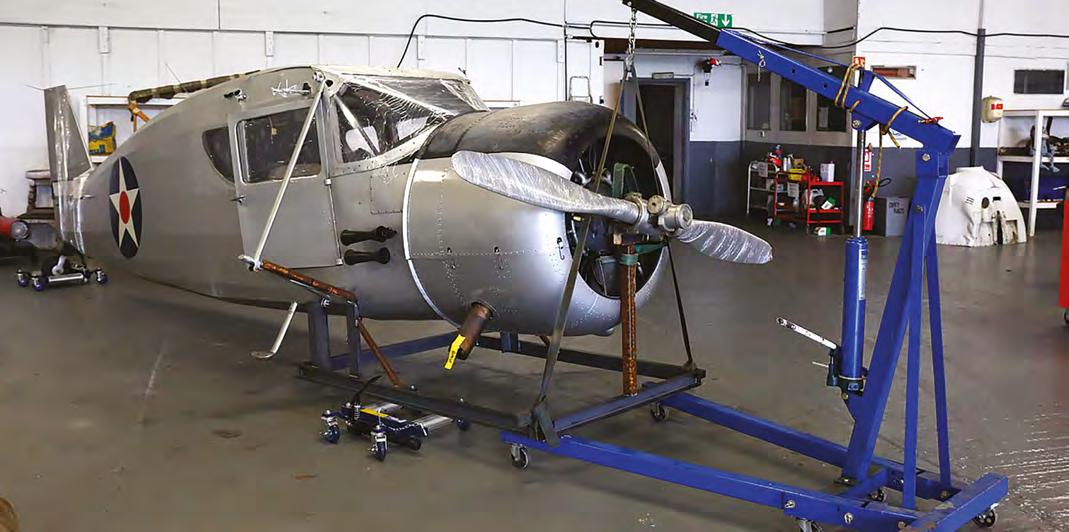
So, importing from the USA – having gone through the process twice now, I’d suggest that it’s not for the fainthearted. Reliable shippers etc. are very important, and Neel Aviation’s work was superb, absolutely no damage and very thorough. The advantages are vintage aircraft at a fair price.
In the UK, obviously early contact with LAA Engineering is critical, thank you Francis, and most important I think is your LAA Inspector. Those who know Nigel Jones will be aware as to why he is so highly respected, he was a huge help. Completion of testing is now at the whim of the weather.
For a little background, Fairchild Model UC-61, Serial No. 41-38806 W41A-252 was manufactured by the Fairchild
Engine and Airplane Corporation and delivered to the USAAF on 20 December, 1941.
Military service was mainly in Florida until September 1944, when it was dropped from the USAAF inventory and turned over to the Reconstruction Finance Corporation for disposition.
Accepted by the FAA for civilian use, the aircraft has had many subsequent owners in the US. In 1969 the Warner Scarab engine was removed, and the Jacobs R-755 engine and Hamilton Standard constant speed propeller installed. The total hours for the airframe are very low at less than 1,150.n

If your aircraft has been featured in the New Projects list, please let Project News know of your progress at: projectnews@laa-archive.org.uk
n Sling 4 TSi (LAA 400A-15693) 25/2/2020
Mr S A Lamb, Nettlestead Lodge, Maidstone Road, Paddock Wood, Kent, TN12 6DA
n Van's RV-8A (LAA 303-15692) 19/2/2020
Mr K Wingate, 16 Buckwell Road, Kingsbridge,
Below Back in her correct environment, the Fairchild on her first flight in the UK. A great looking aircraft now on the LAA register. Photo: Craig Duffy Cleared
If your aircraft has featured recently in the magazine and has subsequently completed its maiden flight, Project News would like to hear from you at: projectnews@laa-archive.org.uk
G-CLMZ Fairchild 24W-41A (s/n 252) 20/2/2020
Peter Whitehead. Address held by the LAA.
South Devon, TQ7 1NQ
n Eurofox 912(S) (LAA 376-15691) 18/2/2020
Mr J A Thomas, Rose Haven, Bourne Lane, Ham Street, Kent, TN26 2HH
n Bristell NG5 Speed Wing (LAA 38515690) 17/2/2020
Mr J C Simpson, Badgers, Bower Lane, West Chiltington, West Sussex, RH20 2RH
n Sling 4 TSi (LAA 400A-15689) 14/2/2020
Mr A Aliseril Thamarakshan, 6 Beverley Rise, Essex, Billericay, Essex, CM11 2HU
n Eurofox 912(S) (LAA 376-15688) 4/2/2020
Dr S Ledingham, Rose Cottage, Temple Sowerby, Penrith, Cumbria, CA10 1SD
n Van's RV-10 (LAA 339-15694) 27/2/2020
Name & Address held by LAA Engineering
n G-ERMN Staaken Z-21 Flitzer (PFA 223-14314) 19/2/2020
Name & Address held by LAA Engineering.
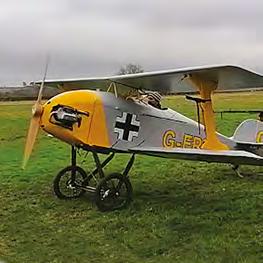

While the technology is being sourced and developed, Tim is getting on with the build of the airframe at a good rate of knots.
Started only in January, the fuselage has progressed to a rolling shell, ready for the work to commence frewall forward. He already has three airfelds, two grass and one hard, who have agreed to site remote charging stations. Subject to maintaining progress, they hope to be doing ground power and taxi testing later this year, with a view to being on a permit next spring, fying short hops about the county proving that it can be done cheaply and in a way that is robust and sustainable.
You can follow Nuncats’ progress on Facebook, just search for Nuncats.

Ido feel a little embarrassed to admit that progress on building Blue Two has been rather slow of late. Like many things in life, the main problem is in your head – subconsciously, I was afraid of breaking the wings during load testing. It sounds a bit pathetic but when you’ve spent countless hours designing, calculating, foam cutting, assembling and doing lay-ups, trimming, sanding, flling, and yet more sanding, you just don’t want to risk wrecking it all. However, reading a few stories of in-fight break-ups puts things into perspective. It has to be done, so I must get on with it.
As a reminder, Blue Two is a 450kg microlight built to BCAR section ‘S’ but also uses some of the load requirements from CS VLA for good measure. Their control surface loading graphs are particularly useful and, as Francis says, they save endless amounts of ‘discussion’ about load levels.
The wing area is 113 sq ft and a Rotax 912S provides the power. The structure is from blue foam (Dow Chemical’s Floormate @ 34 kg/m³) sandwiched between
Photo: Andy Bestlayers of carbon fbre, mainly 160 and 200 gm/sq m twill from R-G.de in Germany. The only fbreglass used is the UNI cloth in the main undercarriage legs, which gives them about three times the fexibility of equivalent carbon fbre parts.
The picture of the overall assembly shows where I have got to. All that’s required is to fnish the wings, seats, canopy and the wiring, which unless I have a failure of the wings under test, should be completed by the end of the summer (I hope).
The engine bay is quite compact and was challenging to complete, but with the world’s most complicated engine installation ever invented by mankind, this was to be expected. In an attempt to reduce cooling drag, the radiator, which has a seven-row oil cooler fastened behind it, has its own airfow ducting. Time will tell whether I have got the duct sizes right. The stainless exhaust was bought as a kit of parts from Aeroweld Ltd., in the Czech Republic for €478. After cutting the tubes and clamping them together (with jubilee clips and metal

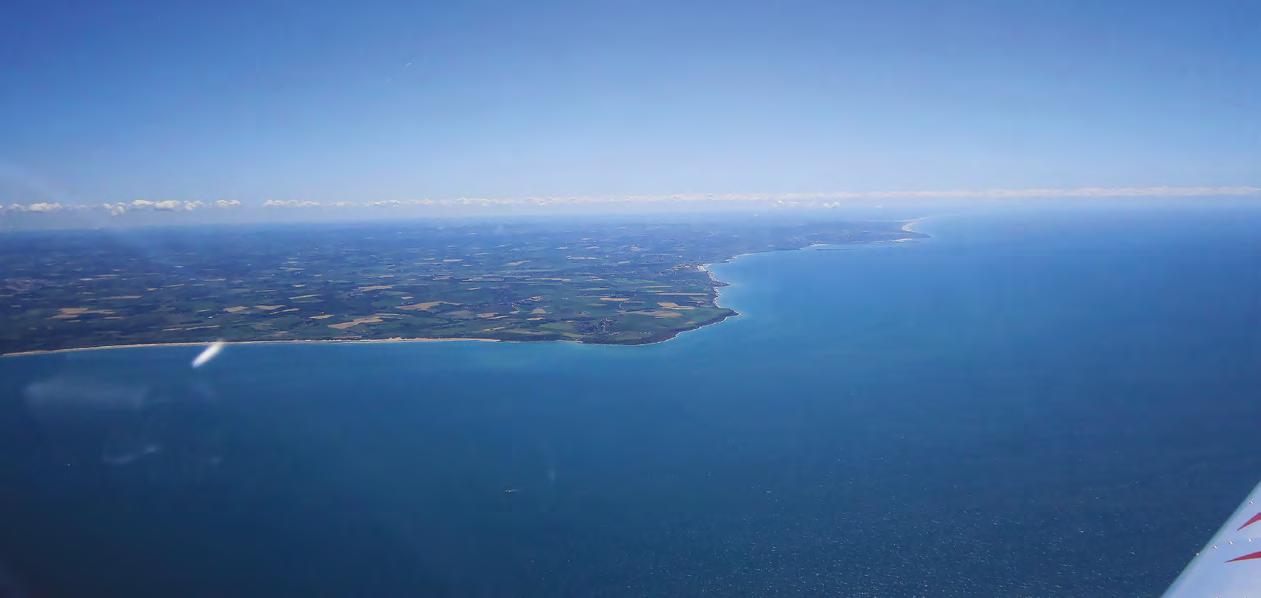
In a bid to recapture the thrill of flying for one pilot who had lost his ‘mojo’, Martin Ferid sets off with him to Kortrijk, Belgium…
Reading the Hilaire Belloc quote ‘I have wandered all my life, and I have also travelled; the difference between the two being this, that we wander for distraction, but we travel for fulfilment’ – I’m not exactly sure if either of the depictions are apt for our little jaunts, or if indeed they fit into any particular category.
A ‘wander’ suggests something without a predetermined destination and ‘travel’ intimates a much longer journey. It may be facultative, but I consider them ‘jaunts’, conjuring up images of a short visitation with an indulgence of some kind. Assuming the aeroplane is running well, runways are drying out and with the prospect of better weather ahead, it’s time to start spreading our wings and take our little machines into their natural environment.
The likelihood is that during the brumal conditions of the last few months, bits and pieces will have been taken off the aircraft, inspected, and repaired or replaced in preparation for the coming season. On occasions, it will have been possible for a local flight here or a lunch stop there, but to go international for a few days with a reasonable expectation of getting back is a touch optimistic for the basic VFR pilot.
People rave about the splendours of winter flying and how some of the best days are found when the axis of the Earth is oriented away from the sun. With, short days, low sun and soggy underfoot, unless it’s from a tarmac runway, give me mid-summer, a period of high
Main One of those perfect days when the Channel visibility is simply superb. Here we are approaching the French coast near Cap Gris Nez.
pressure and a destination 400nm or 500nm away every time.
A friend was telling me about a recent trip to Spain, IMC nearly all the way down and most of the way back. How exciting? If you haven’t flown in IMC for any length of time, it’s extremely tiring and well… very grey! And, of course, all the things we usually delight in looking at can’t be seen, and you are totally reliant on the instruments for navigation. Each to his own I suppose.
My first introduction to Kortrijk, Belgium – or to the airport at least – was fraught, dodging thunderstorms en route to the vintage fly-in at Schaffen-Diest, sneaking in as best I could.
Compared to today it was not an easy time, navigation was without GPS, weather forecasts were a form of educated guesswork, and added to the mix was a nervous, low-hours pilot filled with a desire. As time went by, GPS came along, the internet revolutionised weather access and the pilot gradually gained that hard-earned experience. And what of the desire? Well, that was further enhanced by every trip. In fact, it grew at a rate that could easily compete with that of the fastest-growing 45 genera bamboo.
Originally known as the airfield of Bissegem, Kortrijk airport was created by the Germans in 1916, with Jasta 6 moving in under the command of Staffelführer Oberleutnant Eduard Dostler a year later. By 1918 it had been taken over by the RFC, flying an array of aircraft from DH.9s, F.K.8s, RE.8s, Sopwith Camels and Snipes to S.E.5.As.

“People rave about the splendours of winter flying and how some of the best days are found when the axis of the Earth is oriented away from the sun”
Being one of only six Belgian Customs airfields, over the years it has been a transiting point, a lunch destination, as well a weekend stopover. My first weekend away with Sian included a night in Kortrijk.
However, my latest outing was with Dave Workman, a paramedic and all-round nice guy, in his Eurostar EV97. With the build finished four years previously, Dave had taken up friends and family, done all the usual stuff and, like many pilots, his flying had reached a plateau and become immotile. In joining our fly-out list he hoped to find new challenges, get across the Channel and maybe rediscover his mojo. Once a person’s flying stagnates, the excitement and thrills tend to diminish and can develop into a self-perpetuating downward spiral, often accompanied by insecurities that get swept ‘under the carpet’. At this stage, without some positive action and some restorative confidence-building, another pilot is at risk heading for a more ‘sedate’ pastime. Well, having met numerous pilots in his current predicament, I felt pretty sure that not only was the antidote close at hand, but we could also add a dimension to his flying that every pilot should try at least once.
Being based in the Midlands at Pound Green Airstrip, if Dave could get to Kent, we could pop to Belgium for a night and then nip into France for lunch before a leisurely return the following day. And by that, I don’t mean just a visit to the airfields, but into the towns themselves.
One of the pedagogical perks of instructing is being able to issue tasks for the ‘student’, such as checkingout the aeroplane or refuelling, while finishing off a cup of tea and biscuits. Well, on occasions, that complacency can backfire! Being very familiar with our
route to Kortrijk, I had tasked Dave to plan our trip and present it to me for checking. Unfortunately, or maybe fortunately, he discovered a problem I wasn’t aware of. Since my last visit, they had created a TMZ around the airfield and with us being ‘sans-transponder’ it created an issue. The despondency in Dave’s voice was hard to conceal and rather reminiscent of a youngster given a toy at Christmas without the batteries that were needed…
Trying my best to retain some semblance of professionalism and with the kind of quick thinking any politician would have been proud of, I suggested a call to ATC +32 56 36 20 40, as the red tape could be bypassed on their say so. Luckily, they were pretty chilled, unlike their counterparts at nearby Oostende, where you need a flight plan, 8.33 kHz radio, a transponder and a note from your mum – and that’s just for a local flight. The problem was averted, with nothing more than a little dented pride on my part.
Listening out on Headcorn’s frequency, I heard my ride call-up for landing and after a quick turnaround, an hour or so later we were mid-Channel with the White Cliffs behind us, en route to Belgium. From Dave’s perspective, it would be easy to think that the customs official and I were old pals by the greeting we got. Ivan Vanparys was the man on duty, and what a great advocate for the airport, Kortrijk and Belgium itself. When I explained that it was Dave’s first trip, he couldn’t have been more enthusiastic or helpful, much more like a welcoming host than an officious border guard. All I could say was a big thank you for the friendly manner, as opposed to the phlegmatic approach of so many people who are given a bit of authority.
I’m not sure how well it is known, but during WWII the Germans had built a bunker below the control tower that
has since been converted into a small museum. It was a place I had got to know quite intimately on a previous visit when weather had stopped play. Once mentioning that it would have been nice for Dave to have seen it, Ivan told us to wait while he went in search of the keys for our own private viewing. (http://fasinfo.be/)
Booking-in is a self-service affair in the main foyer these days, and fuel can be uplifted with a credit card, although oddly the landing fee still can’t be paid at the time and gets posted on.
If you go for lunch and plan to stay at the airfield, there are three options. Biggles is the formal restaurant (www.restaurantbiggles.be), the bar under the control tower serves simple things like croque Monsieur, and the bar/restaurant just before the exit offers a variety of fast-food type meals. For technophobes, this could well be interesting as meals are ordered on iPads and just appear at your table a while later, very likely the shape of the future. Sitting at the bar, the realisation was
beginning to dawn on Dave as he tried to comprehend just how the pile of bits he had assembled in his garage came to be parked in Belgium, having crossed the Channel and flown through France to get there. To say the man’s demeanour had changed does not do it justice as the ebullience which was effusing from one very happy paramedic, was refreshingly pleasing and infectious.
Getting into town couldn’t be easier. You can, of course, get a taxi, but once out of the airport, about 50 metres away on the other side of the road is the bus stop where the number 40 will get you into town in about 15 minutes.
To add to the day’s excitement our accommodation for the night could best be described using a vernacular from times gone by, when flares, kaftans and drooping moustaches were fashionable. Bootel Ahoi is a converted cargo ship moored on the River Leie that serves as a hotel/bar, not far from the centre of town. Although the rooms/cabins are small and functional, there is a certain fascination about lying on a bed, with

the water level lapping at a porthole above your head. They cost around €70 per night and the captain/owner, Stephan, is a larger than life character who could never be classified as one of life’s ‘also-rans’! Handelskaai 1, 8500 Kortrijk. (www.ahoi.be/kortrijk/ahoi).
Starting life as Cortoriacum this Gallo-Roman town was built on the River Leie (Lys) at the crossroads of two Roman roads and has known its fair share of conflict over the centuries. It has been fought over by the Vikings, Romans, Flemish, French, Portuguese, Spanish, Austrians and Germans, and was liberated in two World Wars by the Allies.
Philip, Count of Flanders, granted the town its city charter in 1190 and, due to good communications from both river and roads, the flax, wool, linen and the textile industry in general flourished.
Although once a walled city, the ongoing fisticuffs mean that the Broel Towers are all that remain of the fortifications today. As definitive symbols of the city, they sit either side of the river and, in spite of seeming identical in appearance, the ‘Speytorre’ was built in 1385, 20 years before the ‘Inghelburghtorre’ in 1415. The walk along the riverbank is particularly pleasant, especially if you have a bit of time on your hands and some sunshine to warm you. Perched in the middle of the bridge connecting the towers is a statue of John of Nepomuk, the Saint of drowning and floods, who oddly enough has ended up at the bottom of the river each time there has been a fracas of any kind.
Once in the centre of town, whatever you do you’re going end up at Grote Market Square, either for an evening stroll, a drink at one of the outside cafés, or even for something to eat or somewhere to sleep.
The Béguinage is a halidom village within the old town consisting of 41 alms-houses and is said to have been founded in 1238 by Countess Johanna of Constantinople for religiously devout women. Visits are permitted throughout the day. (www2.kortrijk.be)
Broel Museum offers an insight into the town’s history, as well as an audio guide to talk you through both the classical and new artwork exhibits. Broelkaai 6, Kortrijk 8500.
Kortrijk 1302 is a small museum that has particular significance in Flemish history, highlighting the battle of the Golden Spurs which took place on 11 July 1302. Begijnhof-Houtmarkt, Kortrijk 8500 (www.kortrijk1302.be)
There are also two linen and textile museums, which are naturally interwoven into the development of the town’s past prosperity.
For those with an interest in WWI, which likely encompasses most pilots, a look around the battlefields of Ypres is probably easier from here than anywhere else. The 1C train takes about 30 minutes, although if you want the flexibility of a car, Avis delivers to the airfield, or for better prices in town, with cars from around £75 FridayMonday. Try the comparison site (www.rentalcars.com).


Top This trip was Dave Workman’s first foray into mainland Europe in his Eurostar, and he thoroughly enjoyed the experience.
Above The busy main square in Kortrijk, plenty of ‘frites with everything’ restaurants where you can eat al fresco and watch the world go by.
Right John of Nepomuk, saint of drowning and floods, we can only hope he served the Belgians better that he did the UK in recent months!

For food, well the French border may only be a few miles away but although the Belgians have their specialities – they are good with chips, chocolate and beer – they can’t cook like the French. Most of the restaurants you’re likely to encounter in and around the central square are very similar, they are dearer than they should be and most serve some variation of steak and chips. Of course, that is where we ended up having our evening meal, watching the world go by as Kortrijk society went about their business and the sun dropped below the horizon.
For the foodies, if money is no issue go to Oud Walle, not far from the station and one of Kortrijk’s best. Koning Albertstraat 4 +32 56 22 65 53. (www.oudwalle.be/nl)
A 20 minute walk away, but more affordable, is the Bistro Bordo, a cosy little restaurant where you can expect a friendly welcome. Sint-Rochuslaan 10, +32 56 32 09 68 (www.facebook.com/Bistro-Bordo).
For those using the airfield as a bolthole, who just want to overnight with an early getaway the next day, the Hotel Bell-X is about 100 metres away with rooms around €85 – and I’ve found booking direct cheaper than the comparison sites. +32 56 37 17 71. For details visit www.cubilis.com/en/
In general, hotels are going to be over £100 per night anywhere near the centre. A nice 4-star in that price band with its own sauna and pool is Hotel Wu Wei Kongoweg 23, +32 56 29 01 00 https://wuwei.be/nl. At the other end of the spectrum at about half the price, is the no-frills Hostel Groeninghe Passionistenlaan 1A, 8500 Kortrijk +32 56 98 06 92. For more information visit: www.jeugdherbergen.be/
The following morning, skipping breakfast and with our flight plan filed, it was not long before we had crossed the border and were on short final for Calais. Just outside the terminal is the No 1 bus stop that will get you into town in about 20 minutes, where we rounded off the weekend with a very pleasant lunch.
The entire trip was an apotheosis of what is possible – and couldn’t have gone any better. After dropping me off later that afternoon, the flight home for Dave must have been like that of a conquering hero. I’m also guessing that he harboured hopes that the other pilots based at the strip had not yet gone home and were there to witness his triumphant return and maybe chat a bit about ‘mojo’.
Meeting Dave was an absolute pleasure. Although it is worth remembering that if you don’t do this kind of thing regularly, the euphoria lasts about four weeks, after which you tend to look back on the episode in mild disbelief as if it actually happened to someone else and you were merely a spectator.
The opportunity is there for the taking as there are so many charmingly romantic, interestingly enjoyable destinations out there. With that thought in mind, I’ll
leave you with three sanguine quotes from an American ground-breaking author of her day, Rita May Brown, and a little food for thought: ‘Lead me not into temptation; I can find the way myself’. ‘Good judgment comes from experience, and experience comes from bad judgment’ and ‘I finally figured out the only reason to be alive is to enjoy it’.
Next month’s Flying Adventure goes to Bourges (LFLD), central France.■
Martin Ferid is a Class Rating Instructor and Revalidation Examiner and specialises in helping qualified pilots expand their horizons into Europe, by flying with them in their aircraft both on day trips or for a few days at a time.
If you lack confidence in crossing the Channel, touring in general or indeed any aspects of flying, visit the contact details below. Just ask, as we are only too pleased to help!
A browse through the website’s ‘favourite destinations’ should help with a little inspiration, as it provides a selection of places we’ve visited, giving a snapshot of what to expect, cruising at a relatively sedate 90kt.
The ‘touring’ pages contain a useful amount of info with regards to formalities, radio procedures and flight plans etc.
For a little amusement on rainy days try the ‘bit of fun’.
Email: lightaircrafttraining@yahoo.com
Tel: 07598 880 178
http://www.lightaircrafttraining.co.uk
Throughout the season, in conjunction with this monthly series of Flying Adventures, we arrange fly-outs to destinations in both the UK and abroad. The idea is to get you all to take part in these adventures that are literally at your fingertips.
Picture a weekend away – a nice town, good food, a glass or two and a bunch of like-minded people. If you would like to join us, you will be most welcome. It makes no difference whether you are a seasoned tourer or have never crossed the Channel before, there is enough support and experience around to help allay those fears.
Martin is giving a Touring presentation for the Gloster Strut in Cheltenham on 14 April at 6.30pm. Contact Mike Waldron on 07787 12394 for further details. Please check the event is going ahead nearer the time due to the current public health situation.

When I wrote the original first paragraph for this article I was going to encourage pilots to contact coaches to help carry out that New Year Resolution of ‘doing more flying this year’. The winter weather has not been conducive to keeping current, and even when it has, strips and even runways on licensed aerodromes have been waterlogged and effectively unusable. We know that if we are out of practice we are going to be less skilled, and less able to cope with less than perfect flying conditions.
Unfortunately, COVID-19 has reached pandemic proportions and presents a considerable threat, and not just to those of us who have been encouraged to self-isolate. At the time of writing, schools, restaurants and cafes have been closed, and even healthy people who think they are in a low-risk area have been advised to give each other a two metre ‘personal space’.
An aircraft cockpit normally cannot provide that space. Even if two people are willing to take the risk of confining themselves together for an hour or so, I should not wish to recommend it. Family members will frequently be that close in a car, and it would seem inconsiderate as well as impractical to ban them being together.
However, flying and pilot coaching is another matter. Both are discretionary activities, we’re all grown-ups and I’ll leave it to you to use your own common sense in making such decisions. And if lockdown legislation allows, and you decide to regain post-winter currency yourself, without a coach’s help, take great care. Minimise risk by starting your flying season in good conditions of weather and surface, and only gradually expand the conditions in which you fly. Our horizons may be limited for some time, but fly safely!.
Both EASA and the UK CAA have recently issued reminders about the dangers of carbon monoxide poisoning. This is a consequence of an AAIB report (S2/2019 dated 14 August 2019), into a fatal accident to a Piper Malibu last winter, in which the summary included the following: Toxicology tests on the blood of the passenger showed a carboxyhaemoglobin (COHb) saturation level of 58%. COHb is the combination product of carbon monoxide (CO) with haemoglobin, the oxygen-carrying protein molecule contained in red blood cells. CO is a colourless, odourless gas produced from the incomplete combustion of carbon-containing materials. It readily combines with haemoglobin in the blood, decreasing the carriage of oxygen and causing a direct effect on the performance of those parts of the body which rely on oxygen for proper function. A COHb level of 50% or above in an otherwise healthy individual is generally considered to be potentially fatal. …It is
COVID-19 will restrict your dual flying, if you are out of practice take extra care. Also beware of the ‘silent killer’ in the cockpit, as David Cockburn, PCS Head of Training reports
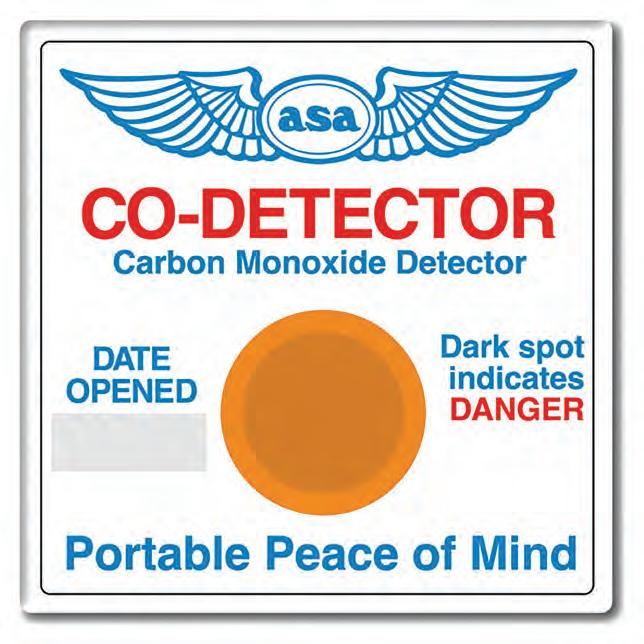
Above The familiar ‘Dead Stop’ CO warning card, which goes black in the presence of CO. Generally these cards last for no more than 12 months after opening, and some, once they’ve gone black, are no longer serviceable. This example from Aircraft Spruce and Specialty, returns to its neutral colour once the CO presence has ceased and can continue to be used. Make sure you date the card and replace it when its life has expired.


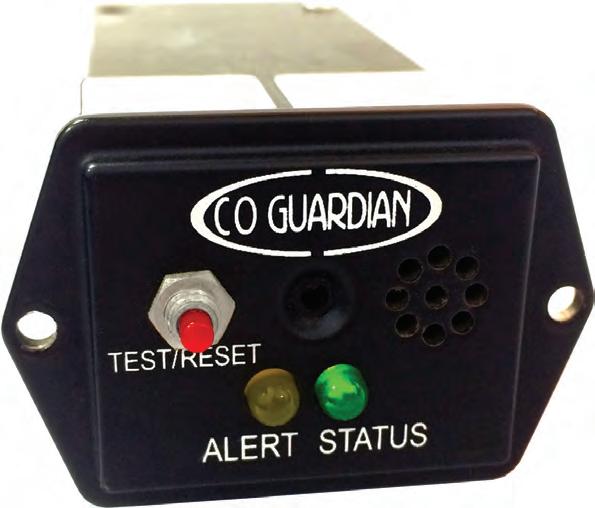
“If a warning device produces that slightly increased reading on the ground, it would be prudent to have the exhaust system checked over”
considered likely that the pilot would also have been affected to some extent by exposure to CO.
The July 2017 issue of Light Aviation included an excellent article by Doug Blair, entitled The Canary and the ‘silent killer’ , which I commend to all pilots. You can find it at https://tinyurl.com/wwlmspu . Coaches can not only remind pilots of the hazard but can also provide advice on the subject.
First of all, the hazard exists and cannot be detected until it is affecting you, hence it is vital to carry a device to warn of the presence of CO. The cardboard ‘Dead Stop’ devices, with the spot that turns black, do work and are inexpensive to buy. However, they have a relatively short life and are easily contaminated, so pilots should seriously consider carrying an electronic warning device. These are available in a variety of forms and from several sources, including ironmongers, eBay and many supermarkets.
Check the instructions carefully before buying, as some are designed for use in specific environments and may not be suitable for use in a cockpit. Those intended for use in caravans are probably fine. In any case, do make sure they give you a reading and not just a warning bleep, because a slightly increased reading can indicate the development of a small exhaust leak before the CO level reaches the stage when an alarm would sound.
If a warning device produces that slightly increased reading on the ground, it would be prudent to have the exhaust system checked over. However, it may not be as serious as that. Several years ago my own device was intermittently giving a notable indication almost as soon as the engine started. The exhaust checked out fine, but when we changed our operating procedure to close the
Above left This domestic detector, a FireAngel CO-9D, costs about £20 and is a sealed for life (seven years) unit that displays level of CO and will also display when it needs replacing. Downside is at 125mm x 72mm x 40mm it is larger than aviation specific detectors.
Above right Guardian Avionics make a number of CO detectors. This is their panel-mount Aero 353 which costs from $289 to $389, depending on specification. It takes up just 41mm x 32mm panel space but extends 96mm behind the panel.
Left This ‘FORENSICS’ CO detector is advertised as an aircraft and vehicle alarm and has a visual and audible alarm that triggers at 9ppm and 25ppm. It measures 73mm x 47mm x 12mm, it’s lifed for five years, it comes with a stick-on mount and Amazon sells it for £89.90.
canopy before starting, we experienced no further indication. Wind gusting around the hangar had been blowing the gases back into the cockpit.
The most likely obvious symptom of carbon monoxide poisoning itself would appear to be a headache, although the smell of exhaust gases would be a good indication that CO was present. Any suspicion of CO in the cockpit, or a warning from your alerting device, should trigger a safety drill:
1. Fly the aircraft – trim to a safe speed
2. Get fresh air into the cockpit – turn off the heater, open ventilators and try to direct the air at the pilot’s face – many windows have rotating scoops to do that but a roll of paper can serve.
3. Head for a safe landing site – consider a long runway because the poison will affect your flying.
4. Call an Air Traffic Unit and ask for help – the poison will affect your thinking so let someone else assist.
5. Watch out for indications that leaking exhaust may damage other systems.
6. After landing, see a doctor but don’t drive; it takes a long time for CO to work out of your blood.
It is important to remember that any warning device has a limited lifespan. The cardboard ones last for a matter of months, but even the electronic devices lose their sensitivity after a few years. Check the instructions carefully and ensure that you have protection from the silent killer.
l Thank you to those coaches who managed to come to the Coaches Meeting at Turweston on 8 February. Notes from that meeting should have reached all coaches by now, but if they have gone astray, please contact the office for your copy. It may mean we have an incorrect address for you. ■
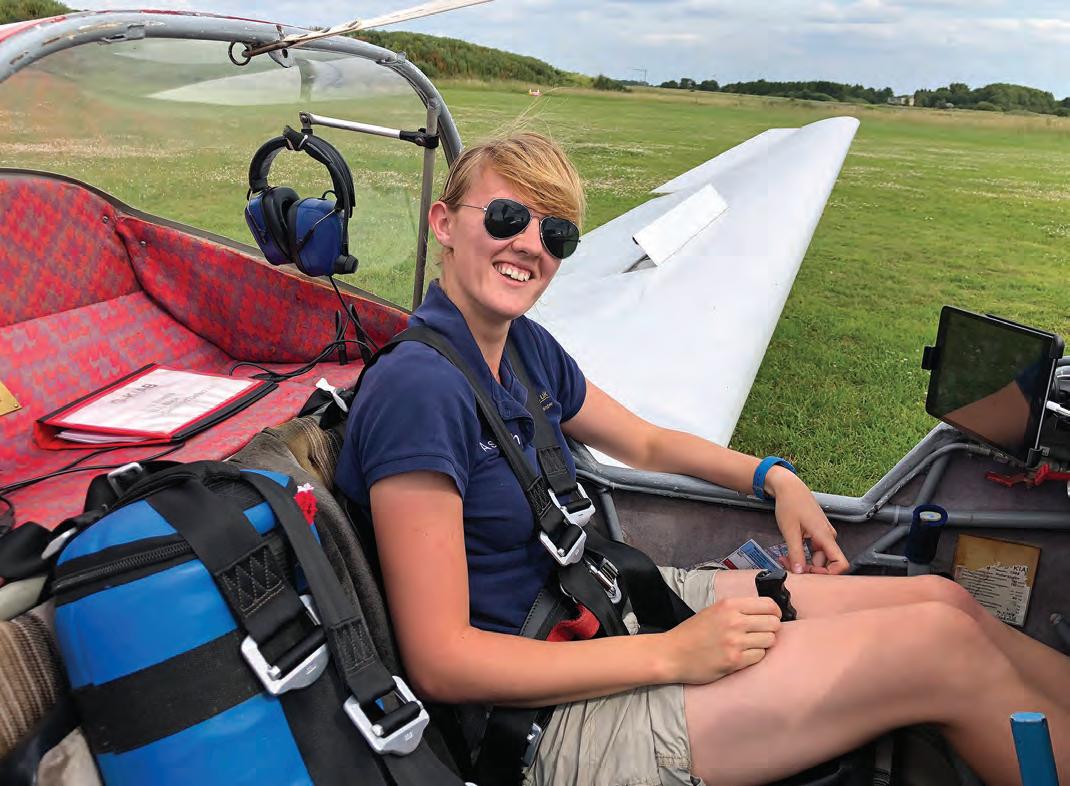
The Association’s Armstrong Isaacs Bursary scheme awards up to £1,500 to five lucky recipients to assist them in completing their PPL or NPPL. Applicants must be 30 years or under at the closing date for applications and have five hours solo, although we do allow some flexibility on the latter requirement. The 2020 crop of applicants exceeded 60 young hopefuls, many looking towards a future RAF or commercial aviation career, but with a healthy number simply wanting to fly for fun or become a flying school instructor.
Each applicant completed a questionnaire explaining why they were so keen to fly, how they had funded their course thus far, and previous involvement in aviation related groups etc. The four-person judging team independently marked each applicant to a total possible 20 points and then came together to compare scores and finalise the list of winners.
In light of the high number of very worthy applications and the difficulty of paring the list to just five winners, an additional bursary was added, resulting in a total of six lucky recipients in all.
Above Ashleigh Duggan
Right top Joshua Creese
Right middle Ryan Millen
Right bottom
Rebecca Norman
The panel also elected to make a special £500 award to a 15-year-old disadvantaged young man, who despite disabilities, is clearly keen to progress his ambition to learn to fly.
So, in no particular order, as those rather tiresome Saturday night talent shows are wont to say, we are delighted to present the winners of the 2020 LAA Armstrong Isaacs Bursaries.
Ashleigh Duggan. Oxfordshire, aged 23. I first began my flying journey at the age of 16 when I started to learn to glide.
Having grown up in an aviation background, with my father working for the Red Arrows, I had caught the flying bug very early in life and now have the ambition to become a flight instructor as well as to fly commercially.
I am currently working towards my PPL(A) SEP/TMG with MotorGlide, having achieved 40hrs of flying and completed my ground exams. I now need to do my solo navigation and work up for the flying test. Once I have the PPL under my belt, my next task is to build up hours and do my night and instructor ratings.
Joshua Creese. Essex, aged 19.
I’m a medical and PPL student, Senior Air Cadet and all-round aviation enthusiast.
My journey into aviation started when I was lucky enough to experience light aircraft flying with a family member. From that moment on I knew I wanted to be in that left-hand seat.
I joined the Air Cadets in 2014 and never looked back. I’ve had the privilege to undertake Air Experience flying in the RAF’s Grob Tutor (including aerobatics), take a flight in a Viking Glider and ride in the back of an open door Griffin Helicopter during a tactical flight with the Canadian Air Force during my time on a International Air Cadet Exchange in Canada. These experiences are just a snapshot of the hundreds of activities the Air Cadet Organisation has provided me with.
I decided to begin my PPL training as soon as I could log hours and first went solo two months after my 16th birthday. After a break, I am now in the last stage of my training, waiting for better weather – as I imagine most of us are.
With my PPL I want to give others the same thrill that I experienced during my first flight, as well as undertaking flying across the continent and developing my training with further ratings.
I am very grateful that the LAA has given me the opportunity to do this.
Ryan Millen. Cambridgeshire, aged 22.
I have always had an interest in aviation as a whole. I was in the Air Cadets at the age of 13 and was lucky enough to fly several times on air experience flights. This showed me the amazing sense of freedom that can be experienced from flying in light aircraft.
After this, it was clear my goal was to obtain my pilot’s licence. When I turned 17, I started working part-time while studying for my A-levels. The additional income allowed me to take up gliding. I shortly obtained my solo badge and then my Silver-C badge. I also take part in gliding competitions where time and money allow. I am keen to continue my gliding career alongside powered flying.
When I started my full-time career in IT, I found I had an increase in disposable income, this allowed me to pursue my dream of, one day, obtaining my pilot’s licence. I started with the training at a great rate and very soon, soloed on the Super Cub. I continued with my training to complete my qualifying cross-country.
Unfortunately, almost immediately after this, my financial situation changed, and I was unable to complete the rest of my training.
Thanks to the bursary I hope to complete my LAPL and continue flying.
Rebecca Norman. Surrey, aged 19.
I am a student pilot from Surrey. I was delighted to receive the Armstrong Isaacs Bursary which means I can progress with my PPL. After going solo last year, I am determined to finish off my PPL and gain my licence, which the LAA will allow me to do.
I am so passionate about flying and love every minute of being up in the sky. In the future I want to become a commercial pilot or a flying instructor to pass on my love for flying and to teach others.
I am so lucky to have such an amazing instructor where I train at Fairoaks and cannot wait to update LAA members of my future progress.

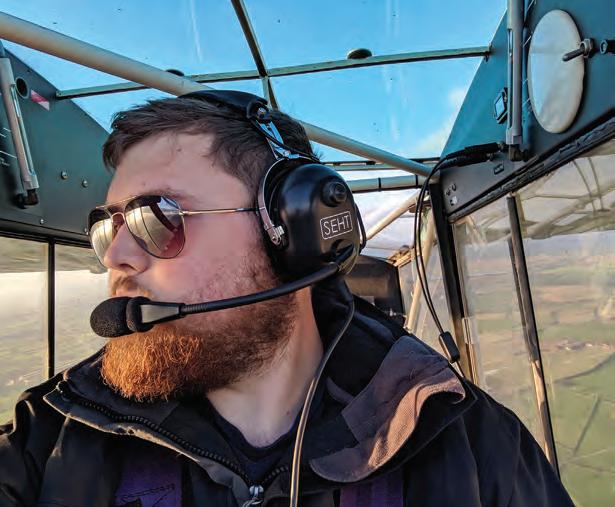

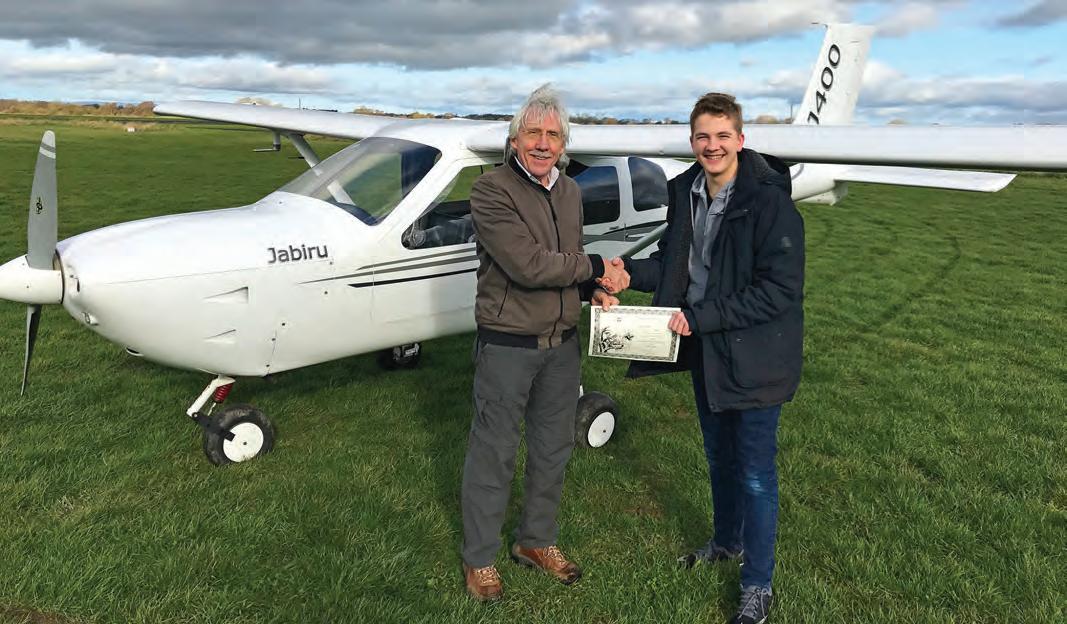
James Bowkett Cheshire, aged 17.
For as long as I can remember I have been fascinated with aviation. It all started when my dad took me for a flight in a Rans S-6 when I was just four years old. From then on, I was hooked and decided that I wanted to be a pilot. I started to fly remote control aircraft and later progressed to building flight simulators, which further inspired me to want to be a pilot.
As I became more fascinated with aviation I started to take the controls when I went flying with my dad. This led to me starting my flying training at the age of 15. It was difficult trying to combine studying for all the aviation exams as well as GCSEs at the same time, but I got there in the end. I was very fortunate to fly solo on my 16th birthday. My mum was worried about my flying solo at first, but she can see how seriously I take my responsibility as a pilot, and is fully behind me.
The costs of flying can soon mount up. I’m really proud that I won the bursary, because otherwise the cost would have slowed my progress, but it wouldn’t have stopped me. Flying is in my blood.
My goal is to one day fly for the airlines as I think it would be awesome to be able to have a seat in one of the best offices above the world!
James Gunn. Gloucestershire, aged 17.
I have always had a passion for aviation, with an aspiration of becoming a commercial pilot. I have been surrounded by aviation from a young age, as my father is a pilot. I was lucky enough to be taken up in a PA-28 at the age of seven, which sparked my aviation dream. Since then it has been the only hobby and career choice in mind. Over the last year I have started working towards my PPL, completing my first solo flight last summer, aged 16, and just preparing to move onto the navigation phase. I am currently in my first year of A-Levels, in which I am studying physics, geography, economics and business.
I have been a member of the Air Training Corps (Air Cadets) since the age of 13, this has given me an
Above James
Below James Gunn
overwhelming list of achievements, many of which have been the development of personal characteristics including leadership, teamwork, and confidence.
In the aviation field I currently work in Operations, on Saturdays at a local flying school. This has been a great opportunity at my age, it has allowed me to gain knowledge and opinions from a diverse range of people, along with developing my personal skills even further, and it certainly beats washing up in a local tearoom! This bursary will allow me to complete my PPL within a reasonable time frame, which without would have not been possible.
My aim is to have completed my PPL by mid- to end of this summer. I have some further motivation to complete this due to the LAA Rally in September, I hope to fly there myself! That would be an amazing achievement, and a milestone in an early stage of my aviation career.
n Congratulations to Ashleigh, Josh, Ryan, Rebecca, and the two James’ who will keep us up to date on their progress in the coming months. We wish them and all the applicants the very best for their future in aviation, whether as a career or a recreational pilot. n
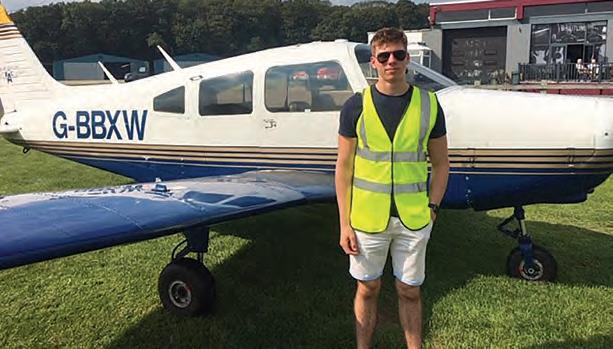
Last month, we discussed the instability and apparent inconsistency of the aviation insurance industry. Based on past experience, we will now consider what we can expect for the next few years.
Of course, I would like to tell you that I have the answer – but the truth is that I don’t, nobody does. However, my little crystal ball suggests that we are heading towards a rationalisation of the market, with fewer of the ups and downs as described in Part 1.
I wouldn’t bet my life on it but we do have some interesting clues to anticipate some of the trends in respect of covers, premiums and services.
More
cover Insurers used to give very extensive cover for some ancillary risks, either because they were a most improbable occurrence, or because although they were quite ‘claim active’, very small sums were at stake.
They now tend to focus on their core activity, which consists of covering damages in accordance with one of the main basics of risk management – ‘do not transfer a risk which will be more costeffective to retain’.
Three-digit hull damages and ancillary risks are typically the claims for which handling costs could amount to up to five times the cost of the indemnity itself, generating a negative impact on the global results and therefore on the premiums for everybody. So, today we are certainly heading towards a trend of more retention of smaller risks, higher deductibles, and fewer non-aviation ancillary covers.
The insurers would also tend to encourage lower liability limits. The higher layers of liability insurance have always been cheaper than the first layers, as they are meant to be less exposed, and they still are of course, but to a lesser extent.
Two major elements impact claims volume and therefore premium trends – frequency

of claims and severity of claims. On one hand, thanks to the valuable job performed by organisations such as the LAA, the CAA and GASCo to ensure and encourage optimum safety by focusing on prevention and training, and to an increasing reliability of the aircraft, frequency of claims is fortunately reducing through the decades.
On the other hand, aircraft are ever more being equipped with high technology tools and expensive avionics, which leads to increased hull claim amounts. More importantly, the litigious nature of today’s society has led to a significant increase of severity as far as liability claims are concerned.
Average indemnity for bodily injuries has evolved exponentially in the last decades, and although most claims are hull damages only, potential maximum loss in respect of liability coverage is what really worries the insurers. Insurers feel more comfortable with hull risks where loss amounts are pretty much under control.
We live in an accelerated world where time and effectiveness are crucial. You, as insureds, are rightly expecting to be able to apply for a quote at any time, and to get a swift reply from us.
The insurers are also expecting utmost handling efficiency from us, because new technologies enable us to provide this, and it is obviously something they need to substantially reduce their workload for smaller aviation accounts and thus make this sector of the business sustainable.
Digitalisation is therefore part of the answer to both quality of service and control of prices.
However, your insurance coverage and
advisory requirements as aircraft owners or operators, are much more heterogeneous than those related to the mass insurance markets. Thus, for this kind of policy, we do not believe in full digitalisation and lack of interpersonal communication. Besides, the feedback we get from you when we meet at the airshows confirms that you don’t want to talk exclusively to machines, and you appreciate personalised advice and attention.
From our side, it is also very important to listen to your specific needs. Thanks to this interaction, we have been able to continuously improve our products and services.
As a conclusion, we are more than happy to let the computer do what it does best, and we will continue to do the rest!
Part of our role as brokers, especially in the current adverse climate, is to arouse the insurer’s interest by addressing their concerns. For this reason, we create group programmes in order to gather the risks together, thus generating a better spread.
This results in less volatility and increased premium volume, thus making the whole portfolio more attractive and viable. We also ease the insurer’s life by administrating the policies for them, within a pre-agreed framework.
To ensure affordable insurance for pilots into the future, we must not only worry about risk spread and processing efficiency, we also need to reflect on how we can reduce the insurer’s costs (other than policy handling) in a way that minimises immediate impact for you, and act in your best interest in the longer term.
Creating a positive spiral of safety by rewarding training and other safety initiatives, is a way of working towards portfolio viability. Retention of non-costeffective cover is another one.
More than ever, group programmes for private owners make good sense and help protect the future of light aviation. And even more so, together we are stronger! ■
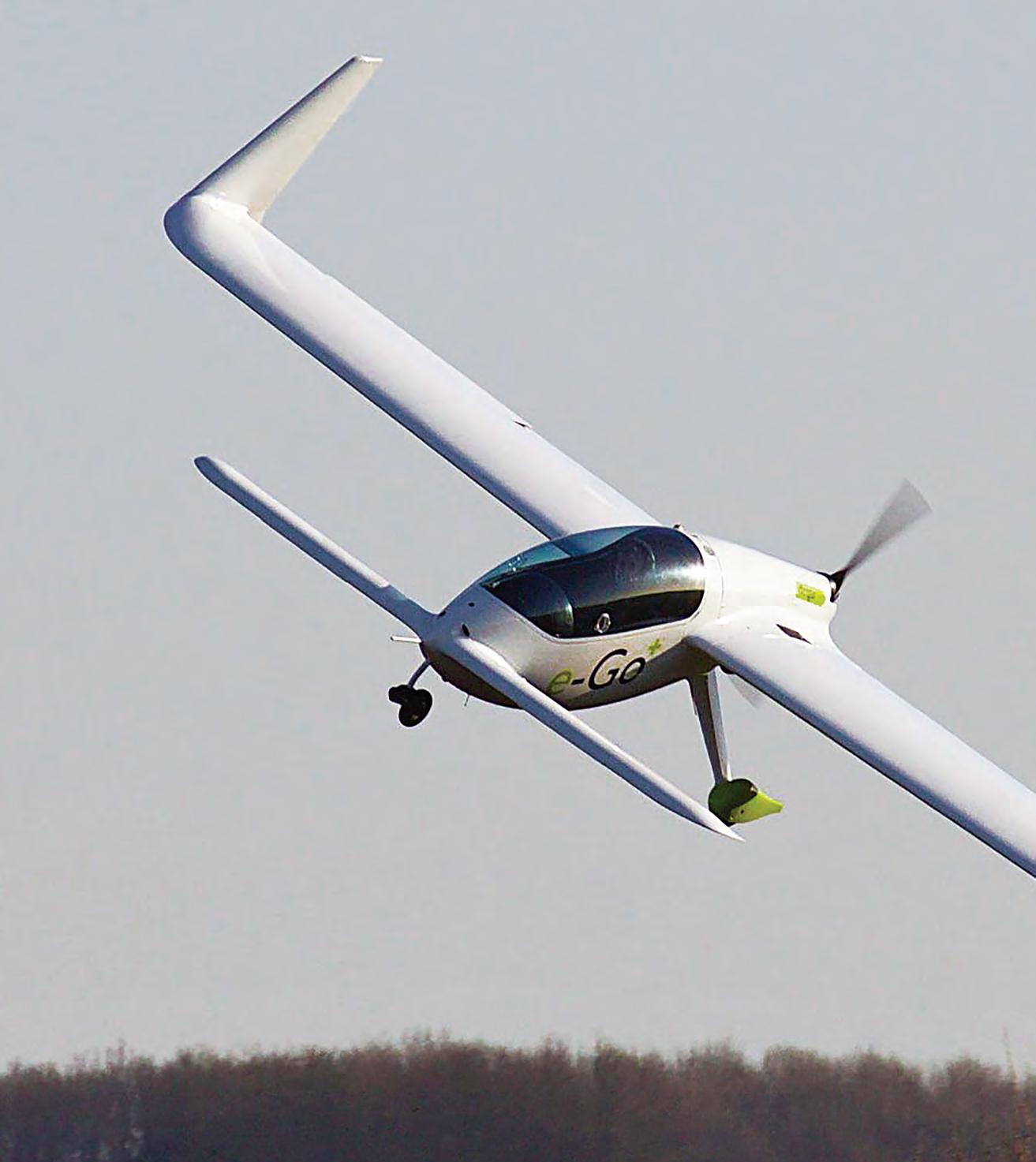

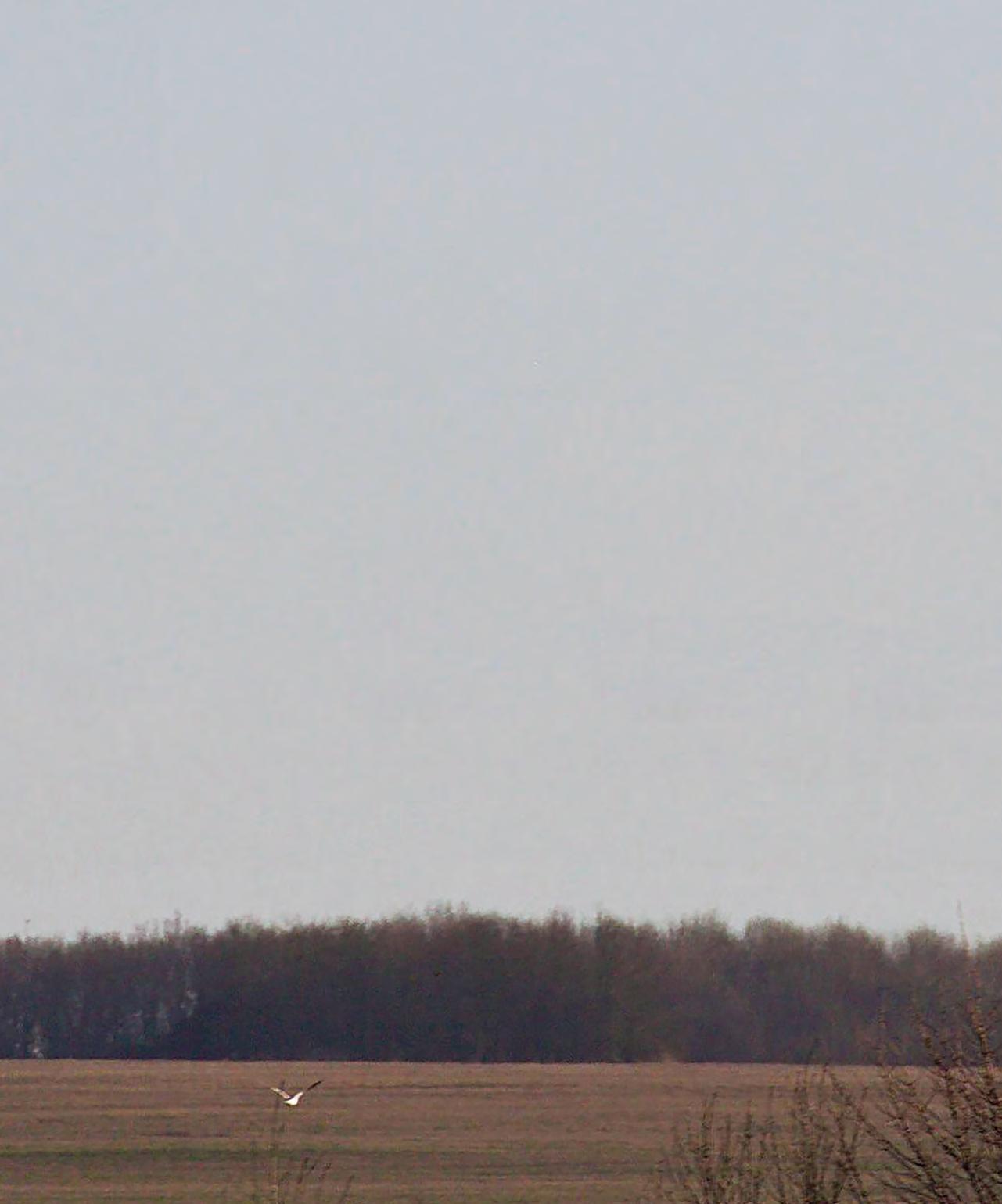
Francis Donaldson flies the e-Go, a bold attempt at a high-performance composite SSDR


Back in 2007, when the CAA chose to deregulate the airworthiness procedures for lightweight single seat microlights, the LAA (or PFA, as we were then) ran a design competition to try to stimulate activity in this new ‘SSDR’ (single seat, deregulated) category. Entries were many and varied and ranged from ‘ultra-simple retro’ to ‘modern-sophisticated’.
The competition winner in the state-of-the-art category is the subject of this month’s review, an all-composite canard initially called the e-plane. At that time only a ‘paper exercise’ that had demonstrated its prowess in the digitally generated output of Italian designer Giotto Castelli’s PC. Giotto comes from a background of professional aircraft design and certification in large aircraft, where he had done a stint working at Marshalls, and previously at Pilatus, Airbus, Raytheon and others. The aircraft, renamed e-Go, was a joint project between Giotto and entrepreneurial LAA’er Tony Bishop. Tony shared the project management as an active business consultant in consumer products and having past experience in the aeronautical engineering field. Also as co-owner of an MCR-01 which he built with Giotto, he brought a wealth of experience to the party.
The aim was to create a uniquely efficient SSDR, using composite materials to achieve outstanding performance, sleek looks and a comfortable, modern interior, in a package that would allow quick dismantling into small components that could be stowed in an enclosed trailer.
In the vacuum left by the demise of the UK’s onceproud light aircraft manufacturing industry, the two Cambridge-based enthusiasts found that their design had created a fair amount of interest and they set out to build a prototype. Work started initially in their homes where, on a passing visit, I saw a fuselage mock-up in the sitting room and early attempts to mould the wing skins in the garage.
As the project gained momentum, and the prototype took shape, a small industrial unit was set up in farm buildings at nearby Main Hall Farm Airstrip to progress the work. In keeping with the modern concept, finance, apparently to the tune of almost a million pounds, came from web-based crowd funding SyndicateRoom, and was topped up by local entrepreneurs determined to see the project fly. The number of people involved escalated rapidly to create a 10-strong team under the guidance of Malcolm Bird, experienced Cambridgeshire tech entrepreneur. They were backed by many volunteers, keen to lend their high-level skills and be involved with bringing the embryonic single seater from concept to flight.
The fact that the aeroplane was to be deregulated meant that the designers had scope to innovate to their heart’s content, knowing that they’d only have to justify their decisions to themselves – and if all went well, to
prospective customers. While Section S, the UK design code for microlights, was there for guidance, as an SSDR there would be no requirement to comply with it, and no regulators looking over the designer’s shoulders.
Nevertheless, Giotto’s team built sample structures and load tested them, and worked as far as possible within Section S, just as they would for an approved microlight. With the aerodynamics of a canard aircraft being less easily predicted than a conventional layout, the e-Go’s external form was tested and to a degree, optimised in Cambridge University’s large wind tunnel. A 1/3 scale radio-controlled model was also built and flown to check the likely flying characteristics.
The natural comparisons for the e-Go’s canard pusher form are inevitably Burt Rutan’s Varieze and Long-Ez of the 1970s and 1980s. Like Rutan’s designs, the e-Go enjoys a very short fuselage, just long enough to package the crew and engine, while main wing sweepback extends the aeroplane’s effective length.
The canard, which unlike the Rutan designs is low set, is unswept and of high aspect ratio, which is important in ensuring that at high angle of attack the canard will stall before the main wing, so tending to restore level flight.
The low-set position of the e-Go’s canard is interesting because this influences the way that the downwash from the canard affects the airflow over the main wing, which in turn affects the spanwise lift distribution on the wing, and hence its induced drag. When the inboard part of the main wing encounters downwash from the canard, the main wing’s incidence in this area is effectively reduced and it loses lift. Rutan’s designs include large triangular wing strakes alongside the fuselage, which in effect increase the wing chord and area inboard, helping to preserve the ideal elliptic spanwise lift distribution despite the downwash field inboard.
The canard’s placement also facilitates the e-Go’s more curvaceous fuselage more so than the Rutan designs, creating a more sloping canopy line, which gives it a better view from the cockpit. Despite the pilot’s seat base effectively resting on the fuselage floor, the small size of the cockpit and the modestly reclined seating position means that the fuselage has more of a belly than the Rutan types, giving the e-Go a rather
Below The e-Go is designed to dismantle into relatively small parts for road transport.
uniquely ‘fish-like’ side profile. The lowered nose also allows the noseleg of the e-Go to be much shorter than on the Rutan types, and with the nosewheel enclosed in a small spat, avoids the need for it to be retractable. Beauty is in the eye of the beholder, but the e-Go’s form seems to bring to mind the styling of exotic and very expensive sports cars from Giotto’s native Italy.
The original plan was to lay up the e-Go’s wing skins flat on a glass surface, using a Melinex release layer, which would create a smooth paint-ready surface on one side. The cured skin would then be wrapped around the spars and ribs to create a high-quality close tolerance wing. This, it was hoped, would save weight compared to a Rutan-style wet lay-up mouldless composite wing, and avoid all that soul-destroying work needed to fill and sand the surface finish, while also avoiding the cost of a conventionally female-moulded wing construction.
Conservatively, the wings, which were designed to quickly unbolt from the fuselage, incorporated a two-spar design which reduced the reliance on the wing skins to provide torsional strength, meaning that the skins didn’t need to be of sandwich cored type.
As it turned out, the wrapping of a flat skin didn’t work out. Counter-intuitively (for me, anyway) it was found that being able to wrap a flat skin round it would impose constraints on the choice of aerofoil profile and washout – unless the right aerofoils are chosen it would be like trying to wrap silver foil round an Easter egg without it creasing. Tony developed a computer program to solve that puzzle, but then it turned out that even with the right choice of profiles, the wrapped skin wouldn’t produce the quality of finish that the team were looking for – a finish that would do justice to the e-Go’s ‘super car’ style. The wing skin was therefore switched to being wet laminated on the prototype. The pre-production aircraft then utilised moulds for all composite parts but retained the internal structure of the prototype wing.
The engine selected for the e-Go was the Wankel rotary type Rotron 300 LCR water cooled, single-rotor unit, fitted with a belt reduction drive to the propeller.

Fuel injected, and with dual-plug ignition, this tiny unit produces 27hp at 7,300rpm for a weight of only 12kg (30kg dry installed), from a displacement of just 300cc.
This choice was no doubt driven by the punitive empty weight limit of 115kg imposed on SSDRs at the time the aircraft was designed, meaning that to allow the e-Go’s relatively sophisticated format, every kilogram had to be saved to keep within the limit of the regulation.
Unfortunately, ‘you don’t get owt for nowt’, and this little gem of a powerplant, sold normally for military drone applications, comes with a high price tag.
As it turned out, by the time the prototype e-Go was nearing completion, the CAA were already considering eliminating this empty weight limit for SSDRs and expanding the class to include all single seat microlights, meaning a max loaded weight of up to 300kg was available. Fortunately, the e-Go had been designed with some extra strength and wing area in hand which meant that it was possible to clear it with an empty weight that slightly overshot the original 115kg target.
The e-Go team were very fortunate in recruiting professional test pilot Keith Dennison as the project pilot, bringing the professionalism so important in this dangerous element of the project, but also the enthusiasm to resolve the inevitable challenges that would be faced in developing the canard’s handling. Keith had experience of a huge range of aircraft types (including Shuttleworth’s priceless fleet), and critically as it turned out, a good ‘pair of hands’.
When the prototype first took flight, in October of 2013, it was found to be incredibly sensitive in pitch, while also challenging laterally at its minimum speed due to a combination of low yaw stability and aileron drag – not a good combination! Keith was able to resolve a mild PIO in pitch after the first take-off, and despite these challenges, carried out a textbook first flight and landing – and a few days later, demonstrated the aircraft to the press!
The e-Go team set to and one by one addressed each of the handling aspects in turn – an elevator with a different hinge and leading edge slot geometry which gave much better ‘feel’ and normal pitch sensitivity, and
Previous page G-OEGO, the pre-production aircraft in flight. It is undeniably attractive and a high-quality product.
Below left The pre-production model’s nicely trimmed cockpit is reminiscent of a contemporary sports car.
Below right The aircraft is ready to be put into production if a cost cutting exercise can be achieved.

seemed to make the aircraft ride out gusts better. Larger fins of a different shape to increase the directional stability. And ailerons with a different nose profile to reduce the yawing moments due to aileron drag.
On the second example of the e-Go, which was their pre-production aircraft, the main undercarriage was moved forwards so as to reduce the static weight on the nosewheel, which allowed the canard to lift it off the ground at lower airspeed, giving a shortened take off run. Engine cooling was also improved, using an electric fan to blow air through the engine’s cooling radiator when the aircraft was on the ground.
Fully sorted, the e-Go was displayed very energetically by Keith at several airshows in 2015-16, showing itself (after confirming that CAA had no objections) fully capable of effortless looping and rolling. It was, it seemed, ready to go into full production after the pre-production e-Go was handed over to lead customer William Burnett, in June of 2016.
Sadly however, despite all the effort, and with plans for multi-seat derivatives, electric-powered versions, pilotless and even military applications, the e-Go company ran out of funds in late 2016 after expending a reputed £1.7m, being unable to raise the additional finance to enter production.
After the staff were laid off, designer Giotto Castelli bought back the rights to the design, along with the prototype aircraft and the tooling and CNC programmes.
Since then, Giotto has sought alternative ways of putting the e-Go into production, using parts manufactured outside of the UK to reduce costs and allow a lowering of the aircraft’s price to a more attractive level. He is also designing an electric power option and thinking about other derivatives, including the lucrative market for aircraft in the pilotless surveillance role which would better fit with the relatively high cost Rotron engine.
Having watched the e-Go’s story develop over the years, visited the Main Hall Farm base, seen the prototype demonstrated and lamented the company’s financial demise, I was delighted to get a call from Giotto in late




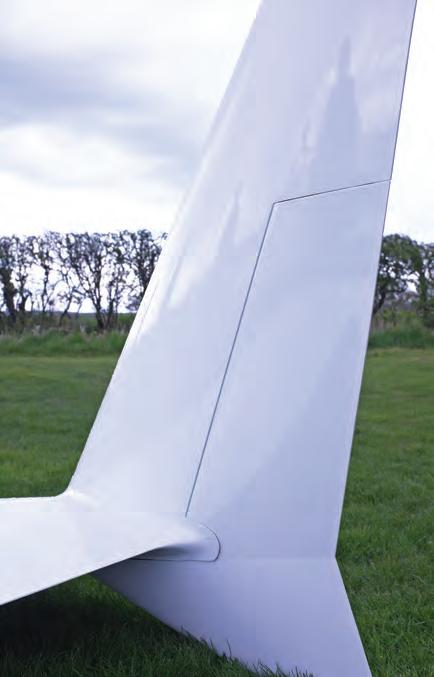
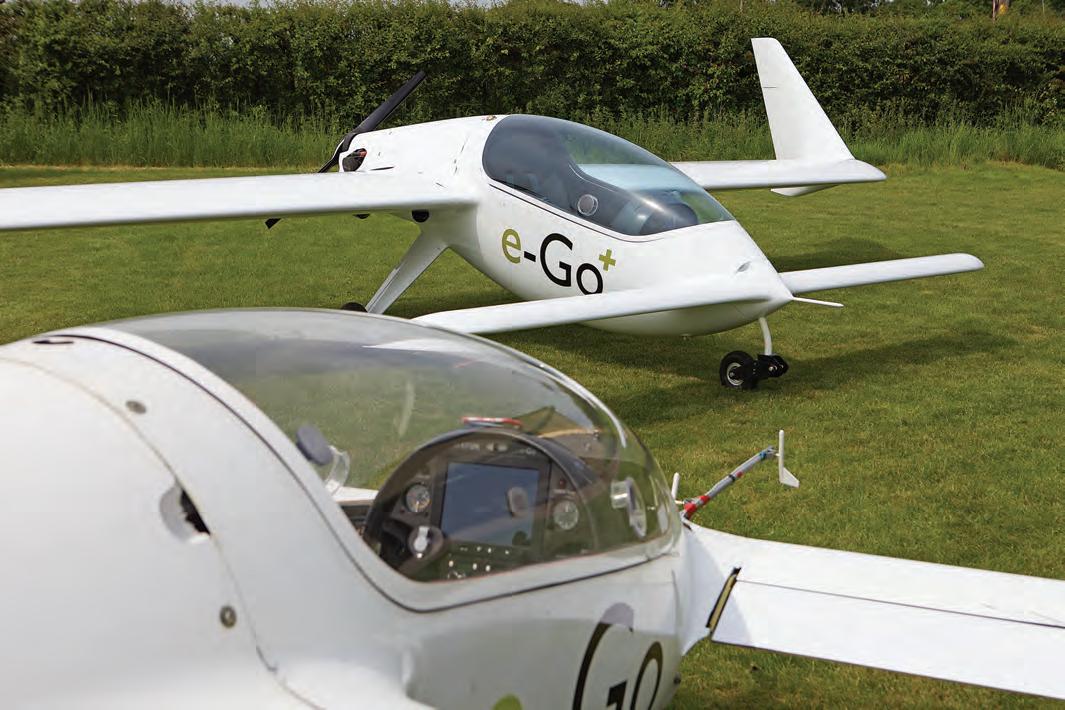
2019, telling me that he had got the prototype flying and inviting me to fly it. As one of those who had ploughed through all the paperwork as one of the judging team for the PFA’s SSDR design competition back in 2007, I was particularly interested to see how the aircraft performs in real life, a dozen years later. While the company had been enthusiastic in copying me their newsletters over the years as the project came together, they had been consistent in keeping anyone other than their company pilots from flying it, thus there had been no independent magazine reviews. Not surprising, perhaps to keep the precious prototype safe – but then again, might the aircraft’s handling be harbouring some terrible defect?
I’ve been lucky enough to fly a number of SSDR machines over the years, including the Eindekker, miniature Cub-like Escapade Kid (now the TLAC Sherwood Kub) and the swan-necked, ride-on Vierra. None of these machines have any pretentions of high efficiency, so a better comparison with the e-Go would be the Colomban Luciole, which achieves similar cruise speeds to the e-Go on the 25hp of a converted four-stroke industrial vee-twin.
The Luciole has only 4.6 sq metres of wing to the e-Go’s 11.5 sq metres, making the Luciole an SEP rather than a microlight despite having an empty weight of less than 100kg. The Luciole thus has a wing loading twice that of the e-Go, meaning a higher stall speed but, on the plus side, a smoother ride in turbulence. Would the e-Go seem very rough in comparison?
Giotto and I met up at his home base of Gransden on a rather overcast day, with a chill wind blowing from the east, favouring the main runway in an uphill direction. During a comprehensive brief, Giotto was kind enough to de-panel the machine to show me the works – after half a lifetime checking designs of sport aircraft, I wasn’t going to fly it without having a good look over it first.
The structural heart of the aircraft is the main moulded carbon bulkhead behind the cockpit, which integrates the wing attachments, main undercarriage and seat belt attachments. Glued to the fuselage, forward of this bulkhead is the moulded seat pan. This itself is a work of art, which also integrates with the fuselage shell to create not only a very strong crash cell but also a sculptured cockpit interior with built-in apertures for the pilot’s bits of kit – car interior-style. While in the prototype example the cockpit is untrimmed and bears many signs of its required function, and the scars of development changes, if smartly trimmed, together with the moulded instrument panel unit this could clearly be a cockpit of a style and quality to match its sports car image.
Giotto quizzed me about my weight while I did the walk round, and in response decided to remove some of the lead ballast that normally lives in the nose. With
Opposite top far left
The prototype, G-EFUN, as flown by Francis for this air test..
Opposite top left
The beautifully faired main undercarriage, hydraulic disc brakes and composite legs are used.
Opposite middle far left The rear fuselage of the pre-production aircraft. Note substantial main spar/undercarriage / seat belt anchorage, belt reduction Rotron engine, and fan assisted twin engine cooling radiators.
Opposite middle left The rudders act independently for yaw control and together to act as an airbrake to steepen the approach.
Opposite bottom
Thus far the only two e-Gos in existence, the prototype G-EFUN in the foreground, and the pre-production aircraft, G-OEGO behind.
such a lightweight aircraft as this, where the pilot weighs almost as much as the aeroplane, such things are crucial to proper cg position – the more so with a canard in which you’re sitting well ahead of the empty cg.
To climb aboard the prototype, the transparent cockpit cover detaches altogether, so once seated one really needs outside help to re-fasten it. Later examples would have hinged canopies. Once enclosed, it’s noticeable that for such a lightweight aeroplane, the cockpit is generous in size and there’s no feeling of claustrophobia under the bubble. There’s a central stick and a rather lightweight pair of rudder pedals combined with brake pedals. These are about the only thing I rather took exception to, being seemingly flimsy and spongy and not inspiring confidence. They have since been re-designed.
Looking around for the throttle, Giotto pointed to an electrical slider, like something off a music console, on the left side of the cockpit, which operates the throttle via a model aircraft servo mounted alongside the throttle body in the engine compartment – and it worked! This would be the nearest I have yet come to ‘fly-by-wire’ –such are the freedoms of the SSDR category.
On the right-hand side of the cockpit was an array of miniature switches to do with managing the electrics, primarily the engine. On this prototype, it was somewhat sobering to see that these tiny and identical switches, which have labels that, looking rather obliquely, I was hard-pressed to read, control not only my master electrics but also the fuel pump (without which the engine will stop); the electronic ignition (without which the engine will stop); the water pump (ditto – but more expensively) the oil pump (you’ve guessed it), and the engine cooling fan (which I must activate if the engine gets hot, otherwise…)
There’s a simple mechanical pitch trimmer, but no flaps of course, for flaps on a canard’s wing would act like elevators and cause a big change in trim. Instead, if you press both rudder pedals simultaneously, both of the rudders move outboard, creating extra drag and steepening the glidepath – the e-Go can fly so slowly anyway, but despite its fixed gear is so clean that extra drag is the only thing you’d want of flaps anyway.
Being the first flight of the day, the rotary engine took a few presses of the electric starter to spring to life. The engine sounds a bit uncertain of itself below about 3,000rpm but smooths out beautifully when you open it up. Taxying out on Gransden’s wet and tussocky grass, I was pleasantly surprised how well the little wheels coped.
With no propeller slipstream acting on the twin wingtip rudders, steering on the ground relies completely on the differential brakes, which were rather

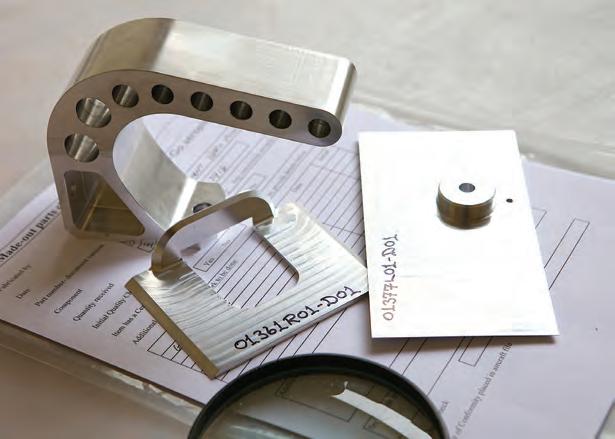
ineffective, partly because of the not very satisfactory brake pedal arrangements. Exactly as predicted, the red coolant temperature caution light came on as I got to the hold, so I activated the cooling fan which quickly brought the temperature back in range.
Checks complete, I turned to point up Gransden’s grassy slope, and unleashed the full ‘27 horses’. Acceleration was modest, clearly held back by the soggy grass, and I watched the miniature ASI with more than usual interest as we slowly accelerated up the hill. I had been told the canard wouldn’t lift until over 50kt, and until it lifts the wings won’t fly her off. Passing what felt like the runway’s half-way mark, the speed seemed to be creeping through 40kt all too slowly, and with the far hedge now looming in the windscreen, and uncertain of the brake effectiveness, I decided to abort. If in doubt – ask.
After a quick conflab with Giotto, in which he confirmed that I was getting full power, and suggesting I make sure not to inadvertently ride the brakes, I had another go using a strip of shorter cropped grass up the centre of the runway. Gritting my teeth while boring past the halfway mark, this time the speed did indeed keep rising, knot by knot. It takes willpower to keep the elevator neutral, knowing that to deflect it prematurely will only cause extra drag and prolong matters further, and you feel a bit redundant just sitting there waiting for the speed to rise.
Then as the speed nudged 50kt, in an instant all concerns were dismissed as the canard lifted a couple of inches – six inches – and then the main wheels unstuck and we were away.
Mindful of the early reports, I was wary of finding a sensitive elevator or shopping trolley-like directional characteristics as we climbed out, but was happy to find that the e-Go felt perfectly at home now that it was in its natural element.
Climbing at 60kt and 7,000rpm, the rotary engine felt smooth, willing and not overly loud, taking us to circuit height at something over 500ft/min. Levelling out under the low overcast, the speed rose to just over 80kt at 7,300rpm, although at this speed we were being bounced around too much for comfort (the effect of that low wing loading) so we were happier (and presumably burning a lot less fuel) at a more modest 70kt at 6,500rpm. Visibility was excellent, other than the relatively small bit of real estate masked by the narrow canard – one’s conscious of the elevators in front of you, moving in unison with your stick movements. At a sensible height you can bring the speed back and back and see the canard working to keep holding the nose up, but eventually the nose will sink gently of its own accord against full back stick, speed indicating about 30kt, with no inclination for either wing to drop. Open the throttle again and she will climb with the stick kept right back – better not try that with any conventionally configured aircraft!
I had seen videos of Keith Dennison manoeuvring the e-Go with gusto, and when you fly it that temptation’s clearly strong, thanks to the combination of powerful but not overly light aileron and elevators, the stall-proof behaviour and the wonderful panoramic view. Rudder and aileron are easily coordinated in lock-to-lock reversals of bank, and with max ‘alpha’ available with no risk of departure, the e-Go is a lot of fun. Or of course, you can cruise straight and level…
Landing
When it came to the landing, I was expecting to find difficulty with a very flat glide, and carefully managed my energy to void overshooting. I need not have worried –with the rudders turned out as airbrakes, and looking for an approach speed of 50kt, we ended up needing to use a bit of power to ‘rumble in over the hedge’ as pre-war fliers used to put it. Which was no bad thing, I prefer to avoid approaching with the engine at idle in case of oiling up the plugs, or with a carburetted engine, icing it up –neither of which helps if you have to unexpectedly go-around.
Taxying back to a grinning Giotto, who freed me from the canopy with the ego-crushing news that I was probably the heaviest pilot to fly an e-Go to date! Knowing Giotto of old, I comforted myself that this was meant as a scientific statement and not intended as a side swipe – I had, after all, just joined a very small elite group of e-Go pilots! Now how to get out? Only then did I realise that the cockpit’s sills are quite high, and raising yourself out will be reminiscent of exercises on the parallel bars in the school gym… actually it turns out to be a non-event, when you can step on the seat. It might be more challenging with classy trimmings and muddy shoes.
Perhaps the most remarkable thing about the e-Go was how ‘normal’ it felt in flight, despite its very light weight and canard layout.
Opposite top left The complex seat moulding is typical of the quality carbon moulding.
Opposite bottom
left The alloy parts are also nicely designed and produced.
Once in the air, it lacks none of the penetration of a ‘proper’ aeroplane, for this is one SSDR which can buck into a reasonable headwind and still reach its destination without running out of fuel on the way.
Overall, I was very impressed by this confidenceinspiring airframe, the powerplant, the cruise performance and the handling. While the controls might seem sensitive when transitioning from a C152 or Cherokee, I didn’t think they stand out as such when compared to those of other single seat homebuilts. With the better brakes now incorporated, the repositioned main gear to shorten the take off, and the other changes the e-Go team had already made, my impression was that the aeroplane would be truly ‘customer ready’.
If only it could be made for that elusive thing, a sensible price, I’m sure it would find many takers – and that is something Giotto is currently researching, so keep an eye out for possible announcements in the not too distant future. ■
General characteristics
Crew: One
Span: 8m (26.3 ft)
Wing area: 11.5 m2 (123.8 ft2)
G limits: +4, -2
Min empty weight: 150kg (303lb)
Gross weight: 270kg (594lb)
Powerplant: 27hp Rotron e-Go
Fuel capacity: 27 litres

Performance
Stall speed: Vs 35 KIAS (65km/h)
Cruise speed: Vc 90
KIAS (167km/h)
Max level speed: Vh 90
KIAS (167km/h)
Never exceed sp. Vne
120 KIAS (222km/h)
Climb rate: 900ft/min (4.6m/s)
Range @ 100 TAS
396nm (733km)
@ 66 TAS: 424nm (786km)
Ceiling: 10,000 ft (3050m)
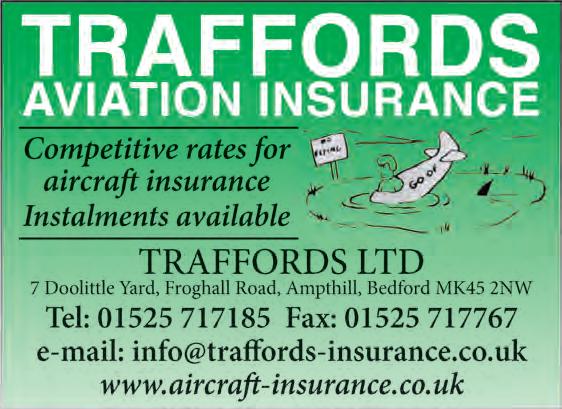

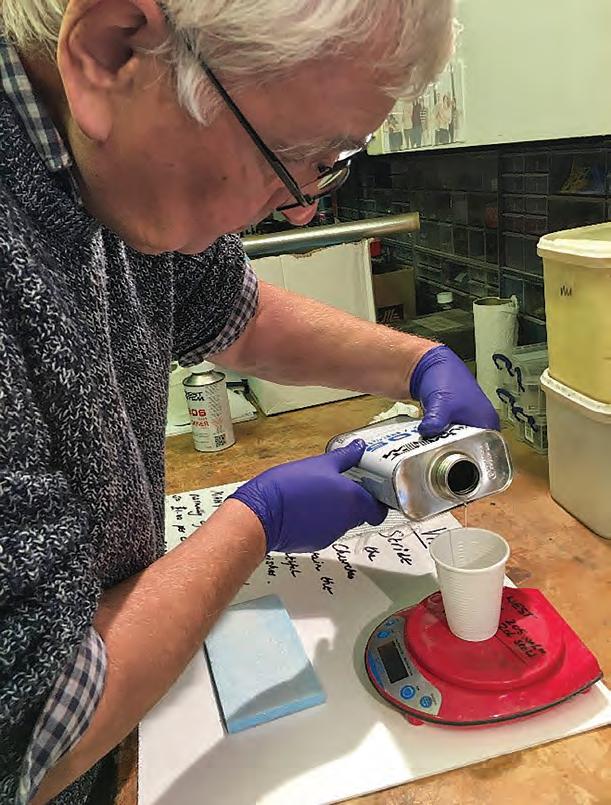

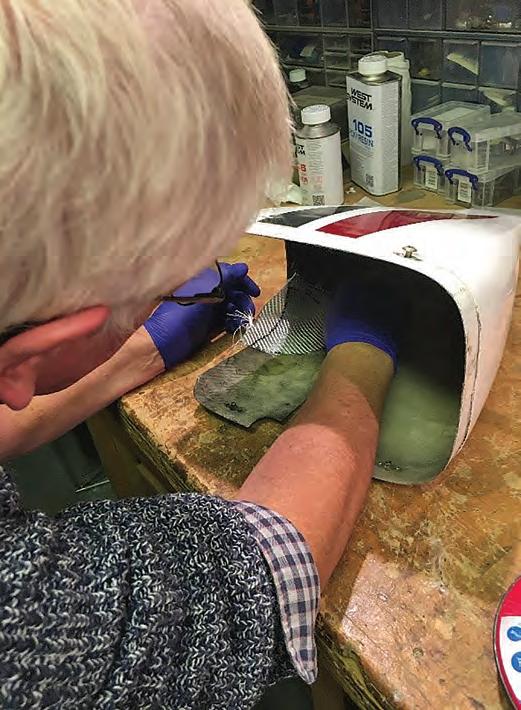
A trio of friends, who met at their local Strut many years ago, get together for a spot of fibreglass revision – and more besides –as Phil Hall reports
Back in September last year, I was fortunate enough to be invited by my fellow Gloster Strut member and friend, Tim Houlihan, to join him on what turned out to be a wonderful tour of France, Spain and Portugal, with the Europa Club, in his tri-gear Europa G-RIXS.
With many landings on hard as well as grass surfaces, the spats inevitably get a fair amount of rough treatment and, as with so many fibreglass spats, they develop cracks that need repairing. This is not just a weakness on the Europas of course, I have had my RV-7 spats repaired twice – and now have a spare set in reserve as back up.
Fortunately, Tim and I have a very good friend, John Bean, also a Gloster Strut member, who had been telling me I should revise my fibreglassing skills. I am the Inspector for his Europa and I hadn’t done any ’glass work for over 10 years. In fact not since he had finished his mono-wheel G-VPSJ.
As John’s wife was away on a cycling holiday, John invited Tim and I round for a weekend ‘glassing’ course which, as it would include an overnight, would also include a few different ‘glasses’ in the evening. As usual, John had prepared everything to perfection…
1 Preparation of the workshop
Ensure the workshop is insulated, and warm (at least 20°C) and ventilated.
2 Understanding fibreglass cloth
Discussion took place around car repair fibreglass mat, then BID (woven bidirectional cloth) ideal to drape round complex compound curves; UNI (unidirectional cloth) which has strength in one direction only (the line if the fibres); bi-axial cloth which is woven with its fibres layered at 45° – effectively two UNI’s, and final a brief discussion about carbon fibre cloth, which we were not going to use on this course.
We then discussed the importance of sharp scissors and knife blades for cutting the cloth to size for any job. I soon relearned that wearing gloves and rolling up your sleeves is a good idea. Fibreglass cloth is not very pleasant material, which can get into your pours very easily and can cause an allergic reaction.
Top far left Cutting cloth, without gloves, not a clever idea. Like resin it the glass fibres can cause an allergic reaction!
Top left Careful resin weighing, lesson learned, and gloves worn.
Below far left Three practice examples using the different cloths – and many used mixing pots
Below left Laying up the first sheet of glass to practice the methodology.
3 Resin, mixing and thermal runaway
The merits of polyester and epoxy resins were next on the agenda. Most importantly, they must never be mixed, to do so will result in weak bonding.
Great emphasis was placed on correct mixing of the resin and hardener and getting them to the right ratios using sensitive scales. Also, mixing pots should preferably be those with a wide base to help with the avoidance of thermal runaway once the two liquids are mixed – the resin and pots can get surprisingly hot! Gloves are also essential here as an allergic reaction to the epoxy is even more serious.
4 Fillers and strengthening
Microballoons (Micro) and flox are as the principal fillers to mix with the resin. Microballoons have no structural strength, whereas flox, made from ground cotton fibre, gives great strength when mixed into the resin.
5 Unwaxed dacron (peel-ply)
When laying up fibreglass it leaves a very shiny surface, which has poor mechanical bonding qualities and is poor for painting or other further processes. To avoid this, unwaxed Dacron is used, known as peel-ply. This is wetted (applied) to the surfaces and once dry, is ripped
“
Wearing gloves and rolling up your sleeves is a good idea. Fibreglass cloth is not very pleasant material, which can get into your pours very easily and can cause an allergic reaction”
off – leaving a nice matt surface with very good surface texture, giving a good mechanical bond ideal for further layups or other ongoing processes.
To ensure a full understanding of the use of the various materials and for practical experience, John got me to produce a sheet of fibreglass, cutting out two UNI cloths, preparing the correct mixture and quantity of resin and laying them up. To help remove it from the working surface we laid it up on a cling film backing, and used peel-ply on the final surface. We then progressed onto building a flat structural plate and a curved shape using BID.
Once we had finished the revision of the basics of fibreglassing, we continued to repair Tim’s spats which, after the brush up and practice we’d had, proved to be pleasantly straightforward.
“Strangely, we were not working at the same speed as the previous day – it had nothing to do with a very convivial evening, you’ll understand…”
We cleaned up the damaged area with a Dremel and removed a previous repair that had been made with polyester resin and had clearly not adhered well to the epoxy resined spat. We then set about following the same procedures as described above for the repairs.
It worked a treat and was done surprisingly quickly. While waiting for the glass to harden we would inevitably have a coffee and cake break, where serious philosophising took place – such as the discussion on why, when your wife makes a wonderful looking cake do you get told off for eating it! Surely the point of a warm and inviting cake is to eat it…
The following morning was spent cleaning up the spats and rubbing down to make the job look good and inspect it for final quality and strength. Strangely, we were not working at the same speed as the previous day – it had nothing to do with a very convivial evening, you’ll understand…
John explained how to identify a crack on a finished surface like a wing or tailplane and what type of repair would then be required. By marking it with a quickdrying, fade-resistant Sharpie felt tip pen, if on grounding down the gelcoat the ink has gone then the crack was only in the surface finishing gel coat, but if it bleeds into the fibreglass structure then a fibreglass repair is needed.
At the end of John’s mini-course I left with three different examples of fibreglass work that I had fabricated and Tim left with repaired spats, which will last him for another season or two, but most importantly a whole lot of renewed knowledge and some great memories.
All in all, it was valuable revision with a good practical purpose – and great fun, which had its origins in three good friends’ original meeting many years ago at our local Strut – thanks to the LAA. ■

Left A happy Tim finishing off a spat before repainting and refitting it to his Europa.
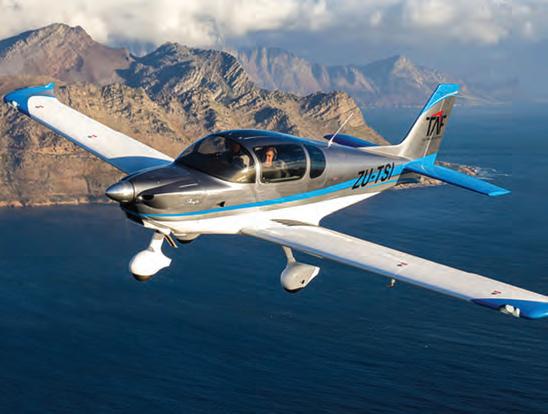


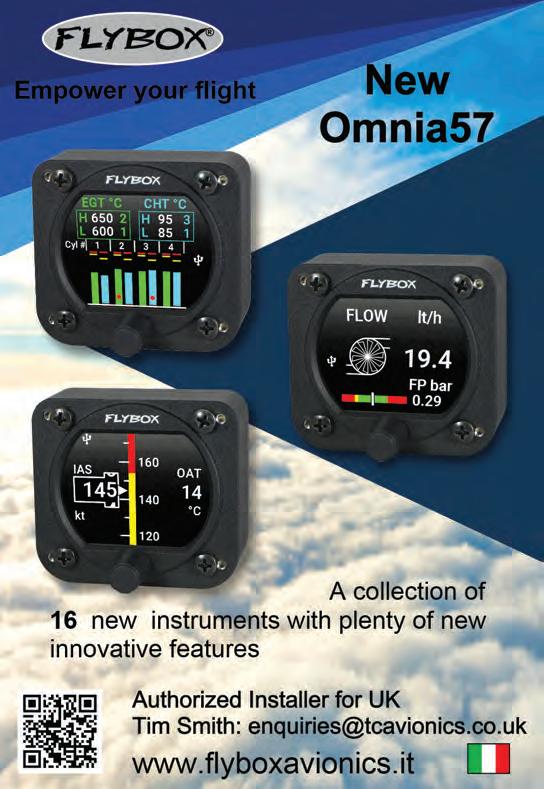




























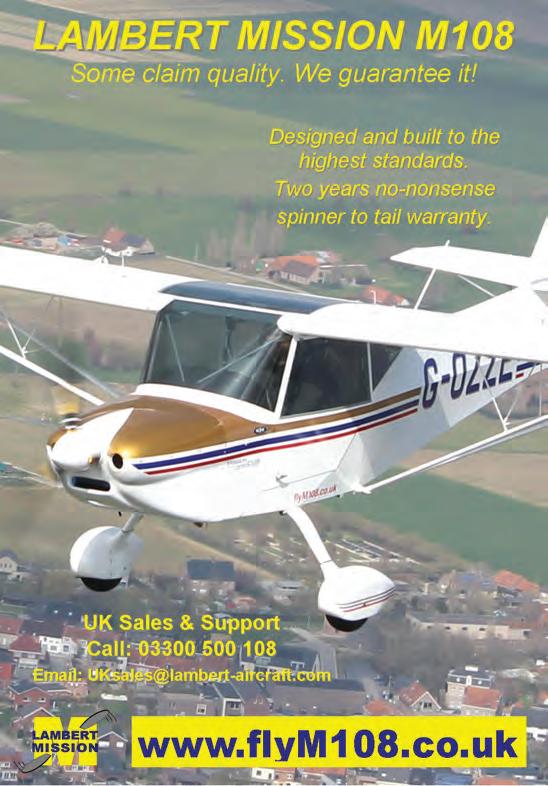


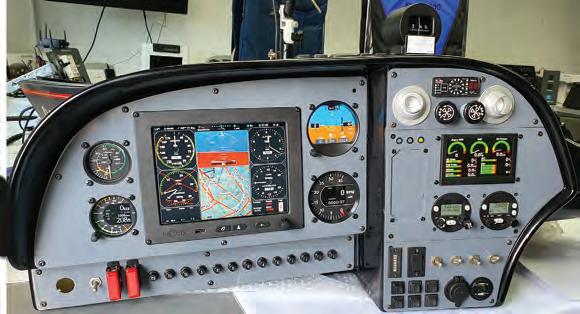
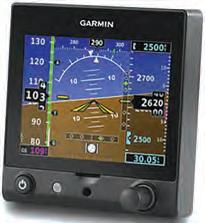

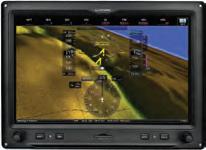
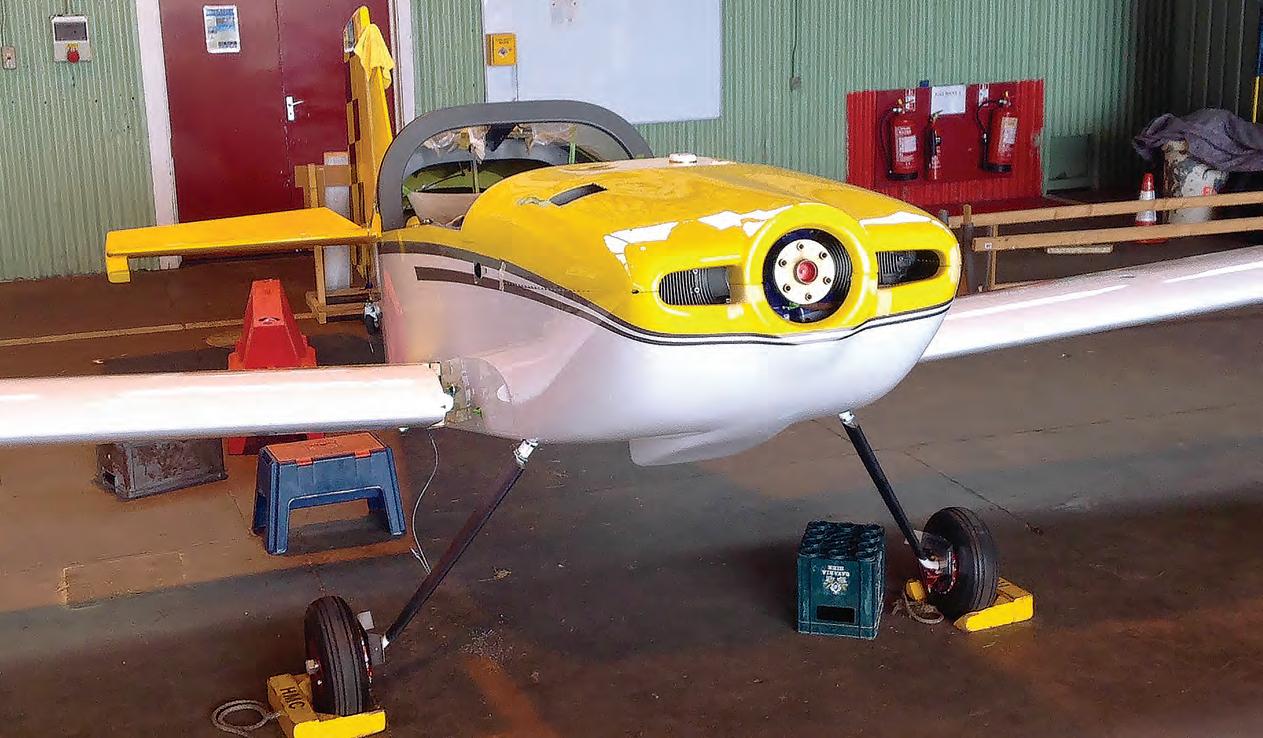
In summer 2019, we looked at the British attempt to beat the World Speed Record for Circumnavigation of the Earth by serving Royal Air Force Officer (and LAA member of 25 years), Group Captain Mark Manwaring. The aim was to depart Biggin Hill on 20 August 2019 in a cutting-edge (and highly modified) Van’s RV-7, returning approximately 18 days later, thereby smashing the current 26-day by a comfortable margin. So, what has happened since then?
Mark explains: “This was always going to be a stretch-date for this World Speed Record attempt. At the start of 2019 it was evident that absolutely everything had to be right first time and, unfortunately, a number of out-sourced elements of work, the sort of things that homebuilders are neither equipped or qualified to do, came in late and sequentially compounded each other. By the end of June, just three months before departure,
Main The sleek lines of the RV-7 promise significant performance (once the canopy and propeller are fitted!)
we found ourselves three months behind the schedule! Despite continued blood, sweat and tears, we are sad to announce the 12-month slip of this World Speed Record attempt.”
Flight Safety and flying supervision has been at the heart of Mark’s 35-year career as a fast-jet navigator in the RAF, and he is typically military in his approach to debriefing safety issues.
“The only person putting pressure on myself was myself. As far back as April I had discussed the potential of a 12-month slip with the team, and all were totally signed-up to the prospect. I knew at the time that the requirement to complete the project in 2019 was artificial and self-generated. From a date perspective, it was an aspiration to mark the 100th anniversary of the first non-stop transatlantic crossing by Alcock and Brown, plus the centenary of the RAF Benevolent Fund. I must say that throughout this period my extensive team of
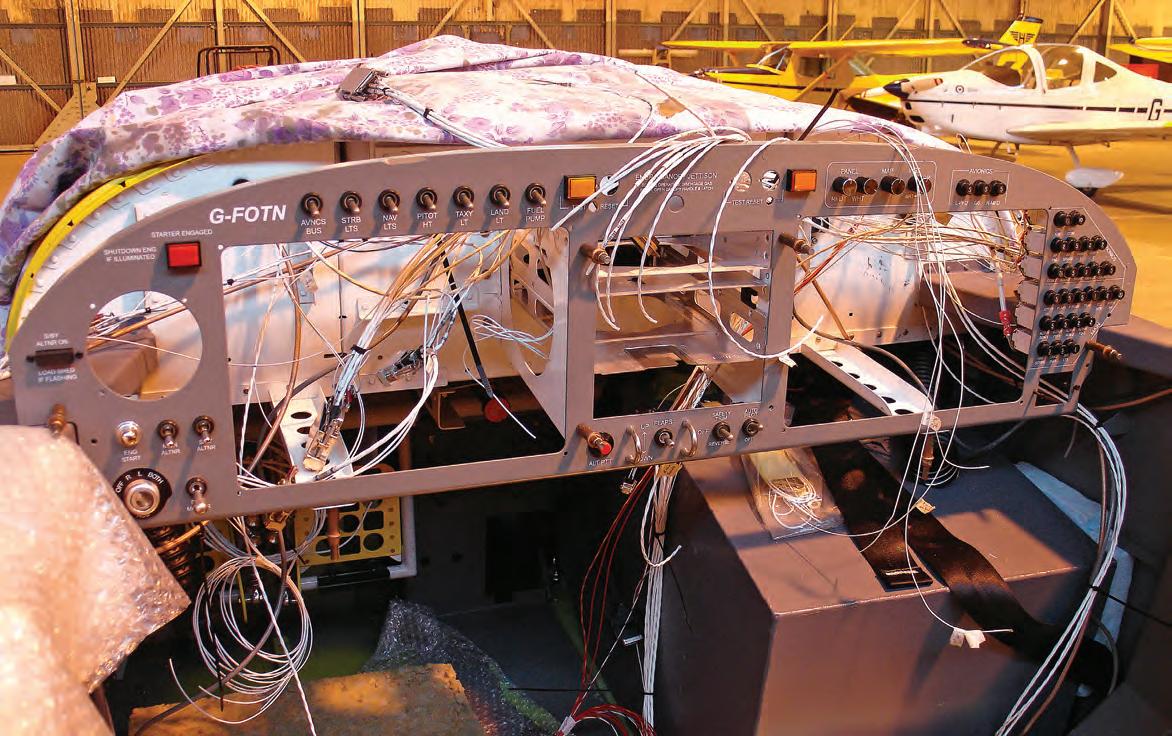
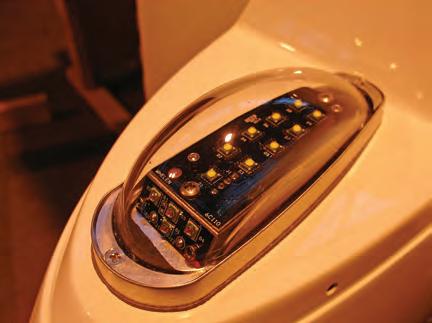
sponsors, including Garmin, Survitec and Biggin Hill Airport, has been totally fantastic in their continued support.
“I have always been aware that I work best when under pressure. In fact, the 500 hours invested into the aircraft (bringing the total build time so far to 2,850 hours) over the summer months was only possible due to that pressure. However, at no point was the pressure allowed to circumvent best build practices. To be honest, my obsessive attention to detail and perfection is part of the reason why the build has far exceeded the time that most other builders take to complete their RVs. There was one occasion that I had a run of paint on an internal rear bulkhead that would never have been seen again. It irritated me so much that I had to strip the paint and start again… Well, that and the fact that it is a transatlantic, night/IFR, full glass cockpit, integrated autopilot-equipped, SATCOM-equipped, CS prop-
Above The righthand
tank will carry 80 litres of fuel and has been purpose built to fit under this beautifully designed panel.
Left Full LED lighting will enable a low power drain while meeting the requirements of the LAA Night/IFR Clearance
Right With so much ‘Garmin Glass’ filling the panel, this centre console houses other essential controls.
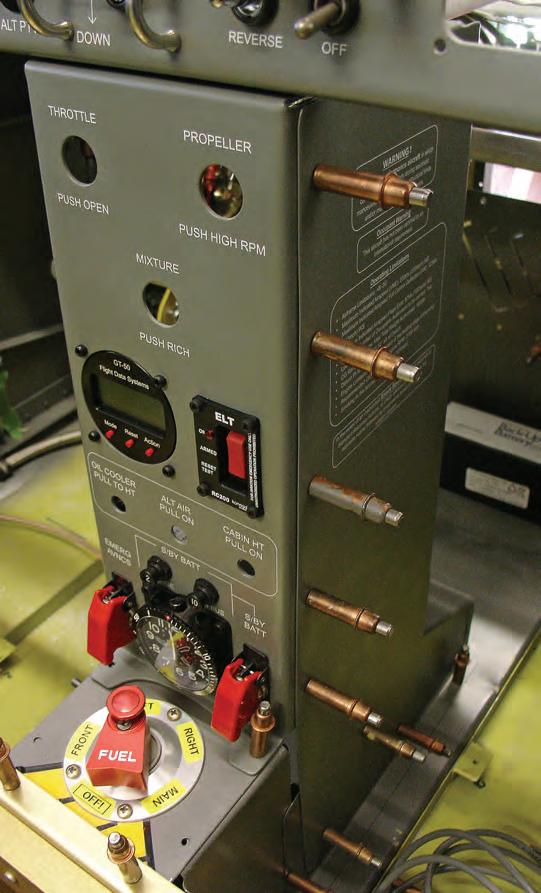
equipped, oxygen-equipped, survival system-equipped aircraft!
“Five hundred hours of work on the aircraft since June has not been enough. However, the decision to delay is a ‘no-brainer’ and will allow the team to optimise the outcome of the record attempt; provide the best science, technology, engineering and mathematics programme for the RAF Air Cadets – and maximise the charitable fund-raising for the RAF Benevolent Fund.”
Mark has met Jon Johansen, a previous Class C-1-B World Speed Record Holder and has discussed the Project numerous times with the current UK Speed Record Holder (and Garmin Avionics expert), Manuel Quiroz. He says that the books of Jon and Manuel have been hugely inspiring in his journey so far. However, from a safety perspective, it is the tragic death of current world speed record holder Hans Schmidts’ accident report that has provided the best learning points.
“I have read the Swiss AAIB Report many times and asked why did this happen? I have dissected the background story, occurrences and AAIB findings and have shaped the Safety Case of the flight test schedule and circumnavigation around it. The message is simple, there is a comprehensive and incremental 90-hour flight test schedule that will not be cut short. Until it is completed to a satisfactory standard, the circumnavigation will not be attempted!”

So, the schedule is set and it looks like an exciting prospect for British and international aviation enthusiasts alike. At the moment, Mark is concentrating on route planning and the final modification submissions and says that attention will turn to having the aircraft finished by the end of March, and the first flight is expected in May.
As part of the test schedule, there will be an attempt to beat the circumnavigation of the UK record in late June and appearance of the aircraft at UK airshows, which will be announced soon. The LAA is using this as an ambassadorial event for our Association and it should put UK General Aviation firmly on the map at a time where this is critical for our future.
We will bring you news as it happens, meantime checkout the website and Facebook page, which has all the video logs, photos and detail at www.raffotn.org.uk and www.facebook.com/raffotn ■
1 Break the UK and World Speed Records for Circumnavigation of the Earth (Class C-1-B)
2 Raise £100,000 for the Royal Air Force Benevolent Fund
3 Inspire the ‘Next Generation’

It has been a real pleasure to join the Andover Strut at Popham on several occasions. Our first encounter was a couple of years ago at the Strut evening, when David Collings and I gave a presentation on the Prototype Beagle Pup, G-AVDF. The evening was particularly memorable as a Chinook decided to call in for fuel halfway through the talk!
Travelling to Popham Airfield by road can, on soggy occasions, be a little challenging, but the welcome is always warm and friendly and the cafe’s ‘all day breakfast’ is irresistible! The Vintage Aircraft Club has also recently used the new Conference Room for our Aerial Adventures talks, and this facility is absolutely ideal.
Alan Lovejoy, VAC, LAA and Strut member, reminisces about the beginnings of the Andover Strut:
“The Strut came into existence in the late 1960s and, as the name might suggest, its catchment area was predominantly Wiltshire and Hampshire. The Strut’s initial meeting place was Thruxton, hence the ‘Andover’ connection. At that time, staunch member Jim Espin had the vision of our own airstrip, and the project was born with Jim purchasing a strip of wooded land adjacent to the A303, being part of Popham Copse.
Five years later EGHP was born. The first structure, a wartime Nissan hut still stands, and that hut hosted the first Strut meetings at Popham. The hut had no floor covering, and heating courtesy of the Honda generator was the norm for many months.
Meetings moved up several notches when the present club rooms were built. Once again this was on a DIY basis with the buildings being offered free of charge, provided we dismantled them and took them away!

Throughout the 1970s and 1980s, the Strut expanded, with a membership of around 60 for many years. Many will remember our annual Strut Fly-in, joining forces with the Solent Strut for the Hampshire Rally, hosted by the Army Air Corp at Middle Wallop.
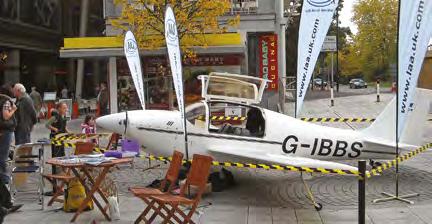
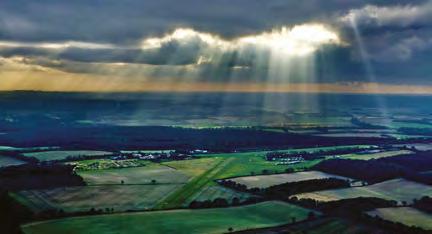
Top The Strut’s annual Barton Ashes fly in and BBQ highlights LAA’s grassroots appeal.
Photo: Alan Lovejoy.
Left Promoting the Association in Basingstoke town centre.
Photo: Alan Lovejoy.
Below left The Strut has been associated with Popham airfield from the very start, founder of the airfield, Jim Espin, was a Strut member.
The event came a close second to the annual Sywell Rally, certainly in aircraft numbers. It became a weekend affair complete with campsite and the notorious campfire sing-song into the early hours.
As a Strut we were lucky to have a veritable Strut Squadron. Annual Strut fly outs across the Channel to various rallies became the norm, taking in Lelystad, Budel, Stauning, St Omer and Schaffen to name but a few.
Andover Strut is probably known throughout the LAA as the Strut providing the Rally Campsite. We took on this task when the Rally moved to Leicester (in the late 1970s) and we’ve been doing it ever since! Today the campsite reflects the changing face of the Rally. The heady days of Cranfield saw us hosting many family groups with Struts offering all sorts of incentives for us to group their caravans and tents together – happy days!
Our Strut year focuses around our home airfield, Popham, with two annual fly ins, one of which is held on the nearby strip of Barton Ashes, always an enjoyable day reflecting our grassroots flying. As with most Struts, we enjoy more structured meetings during the winter months, with my good self-seeking out interesting, and hopefully memorable, guest speakers.
During the summer our meetings usually take the form of a relaxed evening of chit chat. Notably though, the June meeting is given to our annual ‘bums-onseats’ evening whereby our non-flyers get an opportunity to enjoy the local area aloft, courtesy of fellow Strut members.
We have heard from many of the Struts that they are not able to proceed with planned talks for April and probably May. Consequently, we have removed the planned events from the list but left the contact details so you can remain in touch with the Strut and find out what is happening locally.
Andover Strut: Spitfire Club, Popham Airfield, SO21 3BD. Contact: keith.picton@ntlworld. com
Bristol Strut: BAWA Club, Filton, Room 4.
Contact: chairman@bristolstrut.uk www.bristolstrut.uk
Cornwall Strut: The Clubhouse, Bodmin Airfield. Contact: Pete White pete@aeronca. co.uk 01752 406660
Devon Strut: The Exeter Court Hotel, Kennford, Exeter.
Contact: david.millin@sea-sea.com
East of Scotland Strut: Harrow Hotel, Dalkeith.
Contact: inrgibson001@btinternet.com 0131 339 2351
East Midlands Strut: The Plough, Normanton on Soar, LE12 5HB.
Contact: tonyrazzell2@gmail.com
Gloster Strut: The Victory Club, Cheltenham.
Contact: harry.hopkins@talktalk.net
Highlands & Islands: Highland Aviation, Inverness Airport.
Contact: b.w.spence@btinternet.com 01381 620535
Kent Strut: Cobtree Manor Golf Club, Maidstone, Kent.
Contact: Brian Hope bfjjodel@talktalk.net 01795 662508
We will continue to share the Struts4U stories and hopefully things will return to normal before too long. In the meantime, stay safe and keep in touch!
I am always happy to hear your news, views and stories so do feel free to contact me at struts@laa.uk.com
Trent Valley Strut: Trent Valley Gliding Club, Kirton Lindsey. pilotbarry1951@gmail.com http://linsystrut.wixsite.com/website
North East Strut: Aviator Café, Fishburn Airfield. Contact: alannixon297@btinternet. com
North Western Strut: Veterans Lounge, Barton, Manchester.
Contact: cliffmort@btinternet.com 07813 497427
North Wales Strut: Caernarfon Airport, Dinas Dinlle. HEMS Bistro Café. Contact: Gareth Roberts gtrwales@gmail.com, 07876 483414
Oxford Group: The Duke of Marlborough, Woodleys, Woodstock, Oxford. Contact: LAAOxford@gmail.com www.oxfordlaa.co.uk
Redhill Strut: The Dog and Duck, Outwood, Surrey, RH1 5QU. Contact:david@milstead. me.uk
Shobdon Strut: Shobdon Airfield. Contact: Keith Taylor bushebiggles@sky.com
Southern Strut: The Swiss Cottage, Shorehamby-Sea. Contact palmersfarm@sky.com Strathtay Strut: Scottish Aero Club, Perth
Below Strut fly-ins as well as monthly meetings will be victims of Covoid-19, but hopefully we can soon get out to enjoy the company of friends and fellow members.
Airport, Scone. Scone Clubhouse. Contact: keith.boardman@peopleserve.co.uk 07785 244146
Suffolk Coastal Strut: Crowfield Airfield Clubhouse. Contact: Martyn Steggalls events@suffolkcoastalstrut.org.uk 07790 925142
Vale of York Strut: Chocks Away Café, Rufforth East Airfield. Contact: Chris Holliday 07860 787801 cwaholliday@gmail.com
Wessex Strut: Henstridge Airfield Clubhouse. Contact neil.wilson@laa.uk.com
West Midlands Strut: Navigator Café, Halfpenny Green Aerodrome. Contact Graham Wiley westmidlandslaastrut@ googlegroups.com Stuart Darby stuartdarby134@hotmail.com or wmstrut.co.uk
West of Scotland Strut: Bowfield Country Club, Howwood, PA9 1DZ. Contact: nkg@barnbeth. demon.co.uk 01505 612493
Youth & Education Support (YES) Contact: Stewart Luck captainluck@hotmail.com
NB: Some Struts make a small charge towards costs for members, but all are welcome to attend the gatherings. Please check with the Strut contacts above if you have any queries. Let me know of any changes to contact details for your group asap please. (struts@laa.uk.com). Thanks to Strut co-ordinators and newsletter editors for the continuous flow of information. ■


Hello everyone, as you’re beginning to read this April edition of Safety Spot. Such is the variety of the occupations of our members I’m aware, as I put pen to paper, that you could be reading this in an allotment shed, after a hard morning’s tillage or taking a break… Perhaps you are in your workshop, pondering whether to fit this or that part to your embryonic aircraft now or, fiddling with that pencil behind your ear, leave it until later – ‘Will I still be able to get that rivet in?’.
Wherever you are, whatever you’re doing, welcome. I hope that your life hasn’t been turned completely upside-down by COVID-19 and, as always, we hope that all’s well with you and yours.
I’m writing this edition of Safety Spot, as you would expect, in mid-March – on the day that the World Health Organisation announced that the COVID-19 outbreak has officially been classed as a pandemic. The impact nationally is fast-moving, but thus far at least, the team here at our Turweston HQ are unaffected. But plans are in place as required.
I say this because if some of the ‘in-the-pipeline’ Alerts and Bulletins may not have reached the website as you read this, other things may have got in the way. However, it’s definitely worthwhile keeping your eyes on the online Alerts often, although a specific issue sits as the basis for the document, the actual subject matter is discussed in broader terms and may resonate with your particular operation. A couple of cases in point are two recent Alerts which, although targeted at owners of a specific type, contain good advice for all aircraft owners.
The first relates to two LAA Alerts affecting the Van’s RV-12, LAA/ AWA/20/02 – Inspection for Cracks in the Nosewheel Fork and LAA/ AWA/20/03 – Nose Undercarriage Leg Replacement. These Alerts were created because of the issuance of a couple of Service Bulletins, respectively SB 19-08-23 and SB 19 08 23, both relating to issues affecting the nose undercarriage of the RV-12 and mandating parts changes. Not mandatory devices in their own right, we didn’t feel that we should enforce them by issuing an LAA Airworthiness Information Leaflet (AIL) for a number of reasons, principally because the failures that led to these Bulletins affected only very high-hour aircraft.
Nonetheless, very well done to Van’s for flagging-up these issues. Keeping a close eye on the undercarriage of your aircraft makes good sense and, importantly, building regular deep inspections into this area of the airframe makes for a safe operation.
A recent incident involving a leaky fuel pipe on an EV-97 Eurostar though did reach a threshold where an AIL (and therefore an Alert) needed producing – more about this below. Naturally, after we create an

Above As the season progresses, so too does the number of LAA Airworthiness Alerts (AWA). Two recent Alerts are about issues the manufacturers of the Van’s RV-12 have had with a high-hour Van’s RV-12’s nose undercarriage fork and, shown in the picture, a recent publication from the CAA on the subject of carbon monoxide. A number of other AWAs are in the pipeline so please keep your eye on the Engineering section of our website. Photo: Malcolm McBride
Alert, we send a letter to all affected owners letting them know. The Chief Inspector follows this up by sending a link to the online version to all LAA Inspectors and, importantly, the affected aircraft’s TADS are updated to include a link to this new information, as this acts as an information portal for owners old and new.
We’ve just received a report from EV-97 kit builder, Martin Child, explaining that, after a pretty deep inspection, the reason for a fuel smell in the cockpit has been discovered. He sent us a picture of the culprit – a faulty fuel filler pipe.
He was quite surprised because his aircraft had only completed a dozen or so flying hours, but the pipe had clearly perished. I contacted Martin and we had a long and enjoyable chat, so let’s start nearer to the beginning of this story than the end. Martin first registered his EV-97 kit

with us in 2009 but, for all sorts of personal reasons it didn’t take to the skies until 2019. In fact, when it was very nearly completed, he negotiated a space in a hangar so that he could fit the wings. Then, well it’s a long story, but the aircraft finally got completed and, once test flown and in possession of a brand new Permit to Fly, Martin decided to sell it. After all, he had another aircraft and he was fairly sure that he wouldn’t be able to fly two aircraft.
Martin found a potential purchaser and began the process involved in the sale – first of which was that the aircraft had to be moved to a new home. It was on this re-positioning flight that the pilot, a microlight instructor, noticed a very severe smell of petrol.
After landing, he got his tools out so that he could de-panel the aircraft and find the source of the smell, which was powerful enough to suggest a bad leak somewhere in the fuel system. I don’t need to say here that the cause of any smell of petrol in an aircraft needs to be investigated and the source found. For goodness sake, don’t fly an aircraft with a cockpit that smells of petrol. Nobody needs an engine or cockpit fire, and that will be the inevitable eventual result of a fuel leak.
Anyway, after the seat was removed and the rear panel was lifted, our microlight instructor was surprised to find a torch lurking around the control circuits – origin unknown. Eventually, the cause of the fuel smell was found, see the picture of the rubber component but, after spotting the torch, and the perished fuel hose, Martin decided to carry out a full inspection of the whole airframe, which was exactly the right thing to do.
Naturally, by the time you read this we’ll have (fingers crossed) issued an Airworthiness Information Leaflet (AIL) requiring owners of EV-97 aircraft to check this fuel pipe, a natural response I hope you agree. But, after a year ‘in Permit’, how come the failure – and what about that torch? Well, for me, this is a classic ‘human factors’ issue. First the pipe. I don’t know the sequence of the build but, for sure, this pipe came with the kit, so we know that it is at least 12 years old. We don’t know where or how it was stored during this period, but issues of materials degradation normally involve both temporal and environmental factors. Of course, there’s always the possibility that the component was defective at the start of its life, but this calls up the question as to why this wasn’t spotted when the part was first fitted.
As for the torch? Well, this really amplifies the problems of protracted, multi-person inspections. During the process of the build, various sections of the airframe were inspected in stages – it was only at the end of the process that one inspector took charge, though this
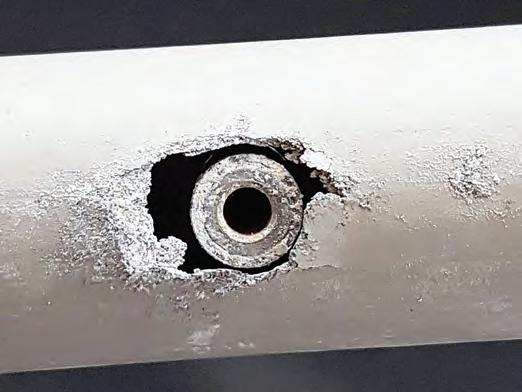
Left and above One of the AWAs that are in the ‘pipeline’ as I write this month’s Safety Spot relates to a Technical Information Notice (TIN-042020) issued by The Light Aircraft Company (TLAC), agents for the Ikarus C42. The TIN asks owners of C42 aircraft more than 10 years old to carry out a detailed inspection of the structure, initially of all the control surfaces, and within a sensible period, the rest of the airframe. The AWA offers access to this TIN. Photos: Paul Hendry-Smith


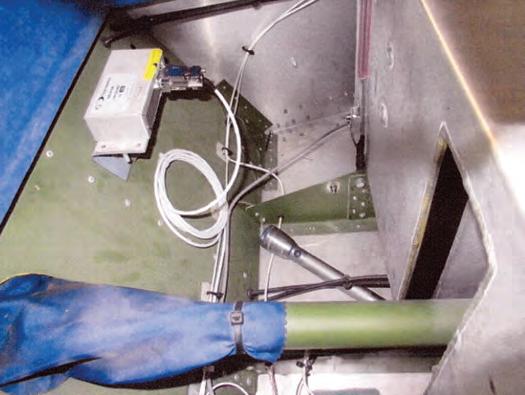
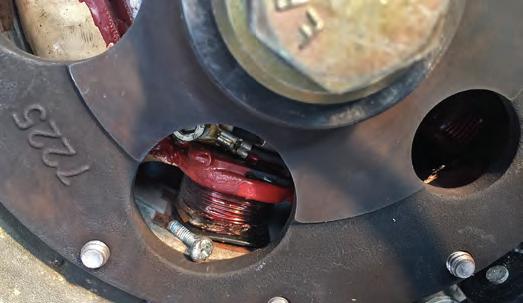
Top During the exploration into the reason for a very bad fuel smell in an EV-97, the cockpit trim and seats were removed to trace the source. As you can see from the picture, FOD (Foreign Object Debris) remains just as big a hazard now as when I first giggled at the term in the 1970s.
Above The reason why the pilot of a BMAA training aircraft had to carry out a forced landing for real – more FOD. It doesn’t take much FOD to spoil your day – keep tidy. Photo: Martin Child/Nick Stone
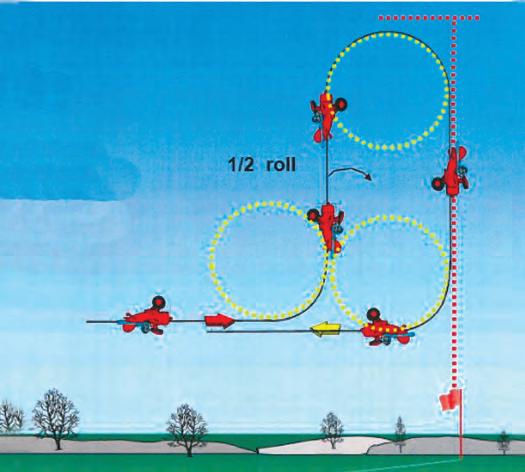
Above When Julian Doswell reported the failed flying wire, he explained that the failure occurred shortly after he’d completed a +5g to -2 manoeuvre called the ‘Humpty Bump’. I didn’t have a clue what that was, so I looked it up – apart from the fact that Julian approached the sequence the right way up, the sketch above illustrates the manoeuvre. Though this sketch implies that the aircraft is trying for a hole-in-one, I’m sure this isn’t the objective!

Above: I’m sure that you don’t need any ‘spotter’ qualification to recognise this aircraft, even though it is pictured at a strange angle! Yes, it’s an aerobatic Christen Eagle – this one has just landed after being flown back to base after an aerobatic sortie, to quote the pilot, ‘very carefully’. The reason, well, note the failed flying wire!
Photo: Julian Doswell
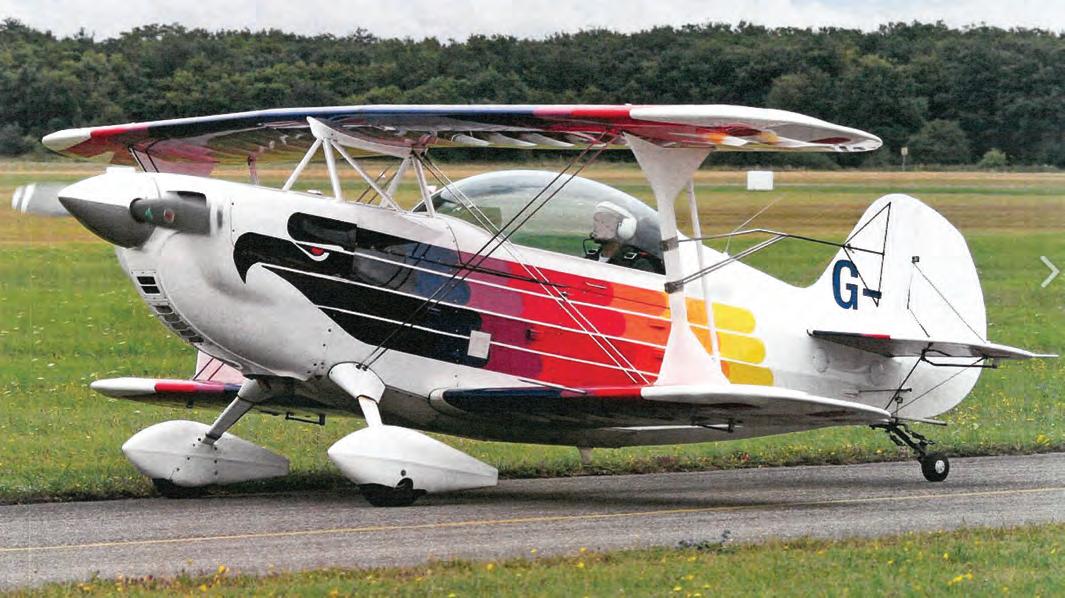
For
not
was something that for all sorts of reasons, ended up going on for quite some time.
Well done to the microlight instructor, who was only initially charged with the responsibility of ferrying the aircraft from one place to another, for not walking ‘on the other side of the road’ after smelling fuel. Had there been a fire in the air, a distinct possibility, it’s very unlikely that the cause would have been found, though the torch under the seat would have probably raised eyebrows. The lesson here? If you are going to carry out an inspection which is effectively going to release an aircraft for its first flight, check everything, especially if you note from the worksheets that the last inspection was completed many years ago.
I’m not sure about you but I’m not lucky enough these days to be flying anything that can actually turn upside down. Not so my long-term friend Julian Doswell who, along with a mate, operates one of those eyewateringly beautiful Christen Eagle kit-build aerobatic aircraft we all dreamed about building in the 1990s. Julian, whose more regular seat can be found at the front of a Boeing 787, has always been partial to the unusual. We first met at Enstone airfield where he, working with Gerry Breen, was trying to teach beginners to fly another Eagle – the ultralite version made by American Aerolights. All that was a very long time ago!
Anyway, Julian got in touch to explain that he’d just been practicing the Humpty Bump in his Christen Eagle when, just after the manoeuvre, one of the flying wires failed. He carefully flew back to base and took a full breath again as the wheels touched the ground. Now, as I’ve intimated, I’ve known Julian for many years, and one thing he isn’t is slap-dash. During the report I was expecting to hear that the failure had occurred from a corrosion pit; this being perhaps the most normal place for a materials failure of this sort to originate. But Julian was insistent that there wasn’t a blemish on the wires on his machine. He said, “After every flight I clean the wires down with an oily rag.” Just as it says in the book.
When we got the section of failed wire back at HQ and took a close-in picture of the fracture face, we were indeed surprised that the origin of the failure, clear in the pictures as you can see, didn’t come from a pit at all – though there was a darkened area which may have been an inclusion in the stainless steel stock bar before it was cold-rolled into its

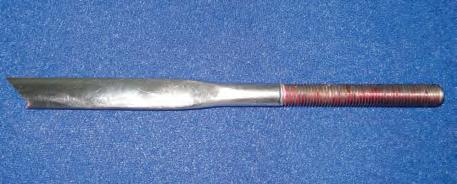

Top A section of flying wire surrounding the failure shows fairly classic overload ‘banding’, generally associated with high-cycle fatigue. Note that the failure starts from a point in the underside (lower face) of the wire, we think this is an inclusion in the material making up the wire as there’s no corrosion pitting in any other areas of the wire.
Middle The broken end of the Eagle’s flying wire – note the 45˚ angle at the fracture, a common feature in torsional overload failures.
Above Sent in by LAA Inspector Nick Stone, this flying wire was removed, quite rightly, from an Auster tailplane because of multiple corrosion pits.
final shape. These wires were most likely made in the 1990s, and, from the outside at least, were in perfect (polished) condition. The logbook shows that the aircraft had flown about 500 hours, 250 of these in the US where the aircraft was originally built.
I managed to have a chat with the extraordinarily busy de Havilland Support Ltd boss, Mark Miller; it’s always time well spent. Many of the de Havilland types currently flying under an LAA administered Permit to Fly have a wire-braced structure, so Mark was a good port of call in that a while back now, he wrote a Technical News Sheet (TNS CT (Moth) No. 23 Issue 4) discussing how best to look after flying wires.
Though aimed at DH-82 (Tiger Moth) owners, the information contained within applies to all aircraft with flying wires so, with permission, I pass on some of this info.
Mark writes: The few known failures of either carbon steel or stainless steel streamline wires on de Havilland aeroplanes (other than those caused purely by over tightening of the lock nuts) have occurred in the oval streamlined portion rather than from a thread root. Failures have been orientated at an angle of precisely 45° to the longitudinal axis, as viewed on the broad face of the wire. On the limited available evidence of in-service failure, it appears that fracture may be most likely at a point about 2-3ins (50-75 mm) along the streamline from either round end.” (Julian’s wire failed 70mm from the ‘round end’).
However, the respective causes of failure in service and static tests are quite different. Uniaxial tensile test specimens fail in overload on the

45° plane of maximum shear stress, whereas in-service fracture faces have shown fatigue striations which are the result largely of prolonged torsional vibration. It is alternating torsion which produces the characteristic 45° inclination of surface breaking cracks, and occasionally results in two intersecting crack lines which form a distinctive ‘X’ pattern.
An unaided visual inspection is unlikely to detect an incipient fatigue failure but the three main factors that might promote a failure (vibration due to improper tensioning or unfavourable angular position, mechanical damage to the surface, and corrosion damage) are readily detectable.
Pilots should be briefed to report vibrating wires and high priority must be given to rectification, possibly with brief test flights to assess the results. A detailed visual inspection for all forms of damage (whether on carbon steel or ‘stainless’ wires) is advisable at all scheduled maintenance opportunities.
There’s a couple of points worth keeping in mind when flying an aircraft with flying wires, and it is only when flying that a pilot can see whether the structural system is working correctly. It’s a bit like a yacht, you can only rig the mast after seeing what the leeward wires are doing when hard pressed against a good blow. Note though that the Eagle has a wire braced system designed to take an equal load when inverted, and also that these wires are doubled up – which was excellent news for Julian of course. However, this can introduce rigging problems, especially with regard to ‘on-load’ tension – one wire will almost certainly
Left and below Investigative work some time ago revealed an interesting mode in which flying wires fail – intuitively, one would imagine that a wire will fail if it is subjected to too much tension. Of course, if a wire is asked to carry more than it is able, it will fail in pure tension. The picture on the left reveals that all is not as it might first seem – note the 45˚ angles in the cross-hairs, this picture was taken by Mark Miller from a wire that had failed elsewhere along its length, the red is an area of cracking highlighted by dye penetrant. The picture (below) taken from DHSL’s exposition on flying wires (TNS 23), gives de Havilland engineers some visual advice about what is (and what isn’t) acceptable.
Photo: de Havilland Support Ltd.
be carrying more than the other, and it’s likely that the wire carrying less load will be prone to vibration. Pilots feel this as a ‘buzz’ and Mark suggests: Any significant loss of wire tension should be investigated and corrected as soon as identified
If torsional vibration was the cause of the wire failure on the Eagle, and this seems likely, then it’s also likely that during some points in the flight profile the wire was ‘buzzing’ – even a correctly tensioned streamline wire may be seen to ‘buzz’ in flight. This condition may be detectable only by a slightly blurred appearance, but it is highly damaging. A slight rotational adjustment to the ‘incidence’ of the vibrating wire, made at the nearest fork end to the problem area, should suppress any tendency to oscillate. If not, it may be that some engine, propeller or engine installation defect is inducing abnormal vibration
You have often heard me say, probably mostly through the printed word, that there’s no such thing as a single cause aircraft failure event (perhaps ‘scafe’ – a new term?). Such is the case with almost every Loss of Control – Landing [LOC (L)] event suffered by LAA pilots last year and, for accuracy every preceding year. We’ve learned between us, over the years, that distraction is a major precipitator in a LOC (L) event.
Another cause is what I might describe as a discombobulation event. In a discombob event, the brain is behind the situational reality by just a tiny fraction of time… and the arms and legs fall in line, just behind the brain. This is not, I might quickly say, a fault in the individual, latency is very normal for humans when faced with an unknown (or unpracticedfor) situation.
Such was the case with the first LOC (L) event of 2020, which occurred to an LAA pilot flying a nose-wheel variant of the Eurofox. Our man, an accomplished pilot who flies regularly, was carrying out a short-field landing when, just after a normal touchdown, as would be normal when landing in a restricted space he went for the brakes and, while his right hand travelled to the cockpit-mounted ‘T’ brake handle, he clouted the throttle. Because the Eurofox is powered by a Rotax engine, the throttle is biased open. You can guess the rest – discombobulation.
The incident itself, which ended up with a broken nose undercarriage, would be considered a minor one in incident/accident terms, but this is very likely going to cost this member his flying season, so it’s a major loss to him… I feel his pain.
He felt that the cause of the incident was the poorly positioned

Above After any incident it makes sense to look at all the factors involved if lessons are to be learnt. A recent event where the pilot overran after landing on a rather short runway was due, in part, to him bashing the throttle open while going for the panel mounted brake. Cockpit ergonomics often take a while to get used to, and lack of space often forces designers into a corner where switches, levers and handles have to be placed in less than ideal positions.
‘T’ handle. Coupled with the bias in the throttle, I’d agree (partially) but I don’t think I’ve ever flown an aircraft that doesn’t have a few ergonomic ‘gotchas’. So, what’s the cure for discombobulation? Well, taking a little more care is all I can really advise.
I’m lucky enough to be able to fly the local club’s Piper J5 Cub, at least if my finances permit, so not this month as I’ve just had to get the bike through the MOT – another tale.
Anyway, the mixture control is right where I expect the carb. heat control to be, and vice-versa – I am more used to an aircraft with the levers in different places. So, I make a point of looking to see that I have my hand on the correct control before actually pulling it, as I’m not keen on stopping the engine by pulling the mixture instead of the carb heat as I come downwind.
That reminds me, I must practice some PFLs from within the circuit next time I go flying.
Keep safe. Fair Winds. ■
Change
Issue
Lost,
Latest
PLEASE NOTE: When you’re submitting documents using an A4-sized envelope, a First Class stamp is insufficient postage.

This month we talk to Binder Smaragd co-owners and Bristol Strut stalwarts Mary Leader and Trevor Wilcock
Welcome Mary and Trevor. Mary, can you tell us something about your career, please?
I was born and raised in Jersey with five siblings and was married there in 1973 to Ian. We moved to Bristol in 1974 and I worked in a local secondary school admin office until I retired following Ian’s terminal diagnosis in November 2007 of Motor Neurone Disease.
started your interest in aviation?
My first involvement was when I went with my elder brother to the model aircraft flying club in Jersey. Then later, when Ian was learning to fly model helicopters in the 1980s I also learned and was, at one time, the only female model helicopter pilot (in the country I think – and that was at a time before we even had gyros in them).
My first interest in powered flight wasn’t until Ian got his PPL in the late 1980s in Bristol. I flew with him purely as a passenger in a hired Cessna 152 from Bristol Flying Centre. Following that we had the use of a Jodel and then a Stinson at a local farm strip, until in September 2000 we bought a half share in Binder Smaragd G-DENS, a
German-built (and improved) variant of the Piel Emeraude. From then on, I took an active part in flights, helping with navigation, transponder etc.
After Ian’s death in February 2009, I kept the share in DENS and in 2011 I was persuaded to get my NPPL. This I did at Hinton-in-the-Hedges in a Slingsby T61 Venture motor glider. I undertook this by staying there for three days a week over six weeks, but although I had done plenty of flying with Ian I didn’t solo till 41 hours and gained my NPPL at 53 hours. Not so bad at the age of 59. I then converted that licence to an SSEA in DENS at the farm strip using the LAA Pilot Coaching Scheme. Landings have always been, and still are, my nemesis!
How did you hear about the PFA/LAA and become connected with the Bristol Strut?
Ian saw a leaflet about the PFA (as it was then) at an airfield we had flown into in the Club C150 and he said, “That’s the kind of flying I want to do.” We contacted the local Strut, then meeting at the Bristol and Wessex Flying Club – and the rest is history. I’ve been involved in the Strut for more than 25 years as secretary and newsletter editor.
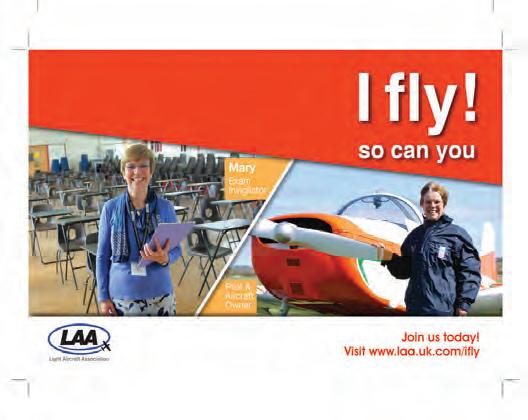
I’ve made loads of friends over the years and I had great support from them when Ian died, when they encouraged me to take my NPPL.
How many types and how many hours have you flown?
My logbook shows only G-DENS for the last eight years. However, I have flown in, but not piloted, many aircraft at the farm strip including a CAP10, which is what persuaded us to buy the Smaragd when it came up for sale – it’s the same basic construction.
Do you have a ‘favourite’ and ‘worse’ type flown?
My favourite is the Smaragd, obviously – it’s so stable yet responsive. For me the worst is either Cessna 152 or PA 28 as I can’t see over the coaming! Maybe also the Europa, as I found the cockpit very biased towards the pilot and not an interested passenger.
Is the Smaragd a good aeroplane to maintain and keep serviceable?
Yes, the Smaragd is straightforward to maintain and Trevor and I do the work for the annual permit together – he obviously has the engineering experience, but I’ve learned a great deal over the years. If you don’t have any technical background, it’s a great way to learn new skills.
Would you recommend sharing an aeroplane?
Yes – sharing an aeroplane is a brilliant scheme. The aircraft gets much more airtime than sole ownership and you also get to share costs, maintenance and flying together. Since being interviewed for this article we have been joined by a third partner, Neville Parton, an ex-RAF senior engineering officer.
Have you done any touring?
Trevor and I have been over to France many times to various fly-ins and it’s a wonderful way to meet fellow aviators. We’ve made friends from France, the Netherlands, Switzerland and Germany at our favourite foreign meeting at St Omer – only 15 minutes flying time from Calais and a very friendly event.
What has been your best aviation moment and flight?
All flights are special to me, but probably those rare totally smooth flights when it’s possible to take your hands and feet off the controls and be able to ‘bank’ the aircraft purely by shifting body weight are the most memorable. I also love climbing through holes in the clouds and being surrounded by cumulus, when still able to keep sight of the ground (obviously!).
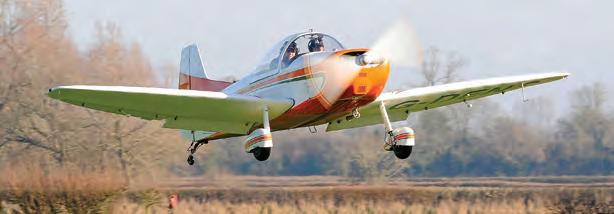
Above The Smaragd is a direct forerunner of the CAP 10, which shares its delightful handling.
Above left Mary featured in the Association’s ‘I Fly’ promotional campaign.
Have you experienced any ‘I learned flying from that’ moments?
Flying back from Kemble with Ian in late autumn and climbing above what was thin cloud, we got back to the strip, only a 15-minute flight, but the cloud had turned to fog, and we realised we couldn’t land. He climbed up again into perfect sunshine ‘on top’ and managed to contact Kemble, who said they had a hole above them, and we could return there. We then had to leave the aircraft there overnight and they kindly arranged car transport back to the airfield. I am always very wary now of flying in those late autumn afternoons when fog can form so very quickly.
Do you have any non-aviation hobbies/ interests?
I enjoy anything to do with thread and needles –- I knit, crochet, cross stitch and make lace. I also make sponge cakes and apple pies which I sell to raise funds for my local church, with which I’ve also been involved for over 45 years. I also invigilate at local secondary school mock GCSE and A-level exams in both the winter and summer sessions, which I’ve done for the past 10 years.
What advice would you offer fellow pilots?
I wouldn’t deign to think that I know as much as any other pilot to be able to give any aviation advice, other than to enjoy what you can, while you can, because you never know what life will throw at you.
Hello Trevor: What has your career entailed?
I was brought up in Stockport, close to Manchester/ Ringway airport. After university, I joined the Royal Aircraft Establishment at Bedford as a scientist, using a moving base piloted flight simulator to investigate the handling qualities of Concorde, the Lynx helicopter, the Tornado and other types before first flight. I was also involved with flight tests on BAC221 research aircraft and flew as observer in Hunter, Meteor, Whirlwind, Wessex, Auster AOP9 and transports. I also had 10 hours of instruction on the Scout and Sioux helicopters. After Bedford I had MoD postings in Washington, Paris and Munich and was involved in project management of Tornado, Typhoon and Future Carrier-Based Aircraft (now F-35 Lightning), but I’ve been retired since 1999.
What started your interest in aviation?
I followed my elder brother into spotting at Ringway Airport, and went on to join the school ATC.
In what, where and when was your first flight?
It was in around 1951 in Auster G-AGXN, owned by Airviews at Ringway – I was the fourth person in a three-seat aircraft, perched on a ledge behind the
third seat! That Auster is now owned by a fellow Ringway spotter.
Where did you learn to fly?
I started gliding with the school ATC at Hawarden, first flights one weekend, solo the next weekend. I continued gliding at a rather low level at Oxford, Cranfield and Husbands Bosworth. Then, fortunately, the RAE thought it would be of value to me to have power flying experience, so in 1973 I was funded for a PPL at Sywell on Beagle Pups, during which I also managed to convert onto the Auster and Cessna 172. I continued flying in the US (PA28), France (Rallye 100) and the UK, and resumed gliding after my retirement in 1999.
How did you hear about the PFA/LAA
When I joined an Aeronca Champ syndicate at Popham, later replaced by a Piper Vagabond and a Morane-Saulnier Rallye.
How long have you been in the LAA and the Bristol Strut?
Not sure when I joined the LAA but have been a member of the Strut from around 1997. I have been coordinator/ chairman for seven years. The Strut was very useful to me as it broadened my knowledge of Permit aircraft operation and led to my joining my present aircraft syndicate.
How many types of aircraft and hours do you have?
I have more than 700 hours power, more than half on my present aircraft. A modest 15 types, and around 150 hour gliding on some 19 types.
Do you have a favourite and ‘not so’ type?
Favourite by a long way is my current aircraft the Smaragd; exemplary handling, excellent view, great tourer. Worst type was a Schweizer 2-33A glider, it was like sitting in a deep bucket, clutching a long broomstick, which was only vaguely associated with the aircraft’s control surfaces.
What do you see as the advantages of group ownership?
Affordability, work sharing, better aircraft utilisation and the enjoyment of shared experiences.
What has been your best aviation moment?
As a passenger it was low level in a Hunter T7 through the
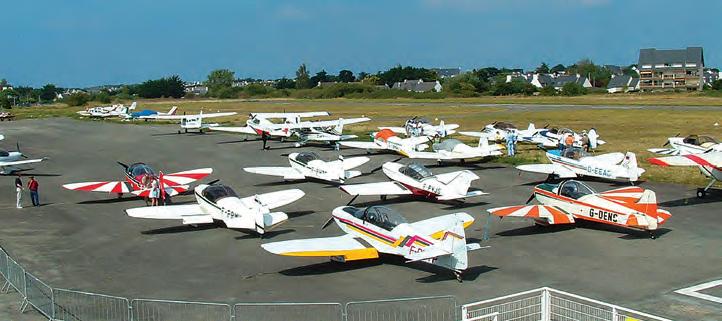
Above On one of their French trips, this one a Piel Fly-in at delightful Quiberon in the Golfe du Morbihan. Credit: Graham Wasey.
South Wales valleys. As PIC none particularly stands above the rest, but the satisfaction of organising and achieving various overseas flights puts them high up the scale.
Where have you been touring?
We try to take G-DENS across to France once or twice per year. So far that has included St Omer, Joigny, Cosne-surLoire, Amiens, Abbeville, Quiberon, Belle-Ile, Persan, Enghien-Moiselles (within the Paris CTA), Verchocq, Calais and Le Touquet.
Do you have any aviation heroes?
Capt. Eric ‘Winkle’ Brown (once chief test pilot of my RAE unit, Aero Flight, but before my time) for his flying and analytical skills – and memory! Listen to his talk to the RAeS at https://tinyurl.com/rjytsd9
Have you experienced any ‘hairy’ aviation moments?
A return flight from St Omer in not very good weather was ‘interesting’. After landing at Lydd for UK entry, we made three more landings before getting back to Garston Farm. Lesson implemented was have a Plan B, but be prepared to change even that!
Do you have any non-aviation interests?
Not non-aviation, but I support the professional development of Aerospace engineers applying for registration status through the RAeS. I also enjoy birdwatching.
Would you recommend any aviation books?
‘Winkle’ Brown’s Wings on my Sleeve in which of particular note is his account of getting to know the Sikorsky R-4 at Liverpool. And Harald Penrose’s Airymouse
What advice would you offer to pilots?
Never stop learning and always see what you can extract from analysing your most recent flight. ■

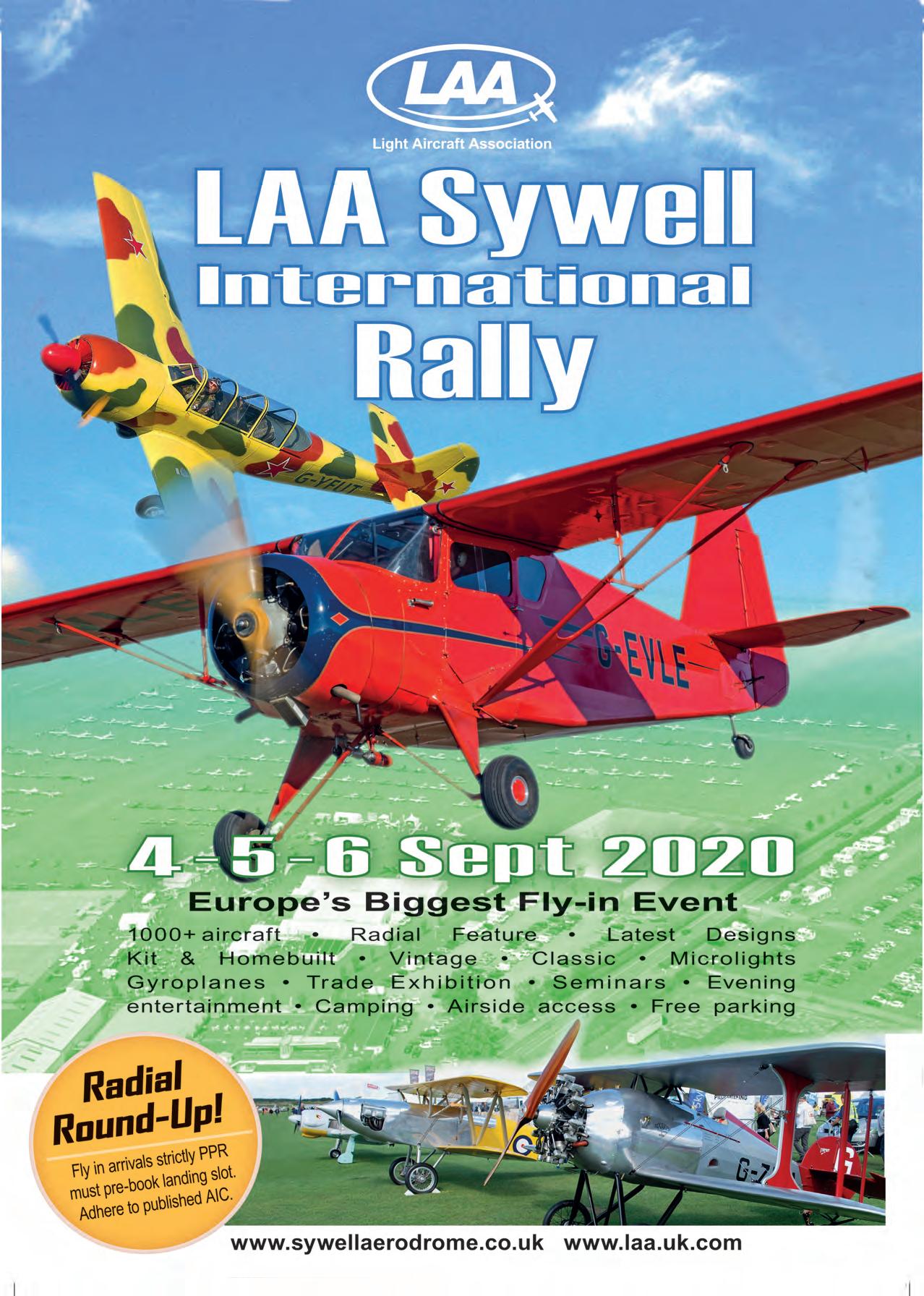
We cannot ignore the impact of the coronavirus or COVID-19, on all our lives. Much of our time has been spent in the past weeks making sure that the LAA HQ team have resilient back-up systems to ensure we can handle permit administration, engineering support and enquiries, ahead of reducing office staffing to the minimum.
As you’ll read in the News section, we made plans based on three contingency levels: normal service, reduced staffing, and a full closure of our offices. As I write this in mid-March, we moved to ‘Level 2’, with fewer members of staff in the office and others working from home on rotation. By the time you read this, we may have activated ‘Level 3’, with the office closed and all the HQ team working from home.
We shouldn’t forget our inspectors. While there is a low risk of COVID contact during any inspection, some inspectors are in the ‘at risk’ age group and should self-isolate.
For those that wish to continue, we’ve already secured a dispensation from the CAA to allow those who were due to revalidate their approvals at training events this spring to maintain their current status until September.
None of us know how long any ‘lockdown’ may go on, but thanks to the efforts of all our staff and volunteers, we’re determined to maintain our services and continue to act as a communal ‘hub’ for our shared passion for flying. One major concern is whether any further virus control measures might curtail sport flying completely. We are in daily contact with the CAA and DfT on this and have made the case against any prevention of GA flying, unless there is clear and pressing evidence of health or safety implications. So far at least, they are happy that VFR flights can continue.
Currently countries including Belgium, Norway and Italy have closed their airspace to VFR flights. VFR flights in Spain and France are not specifically banned but are impacted by their overall curfews on non-essential movements outside individuals’ homes. (i.e. You can’t get to an airfield anyway).
Here in the UK, many airfields have closed cafes and flying clubs and restricted contact between pilots and airfield staff. Many flying clubs and schools are now restricting dual instruction, which may have a future impact on PPL revalidation and licence renewal flights. We’re working with the CAA to seek mitigation on tha t.
In other news, In other news, the announcement by the CAA that they have been unable to secure extensions to the exemptions that currently allow pilots holding NPPLs or UK PPLs, or those with EASA licences flying with a self-declaration of their medical fitness, to fly EASA-Certificated aircraft in the UK after Wednesday 8 April 2020, is unwelcome and very unfortunate.
The exemptions that allow this in the UK can only be renewed
 By Steve Slater
By Steve Slater
if the European Commission extends the relevant derogations and, in the post-Brexit transition, it appears that European heels are being dug in. The only good news is that pilots flying non-EASA certificated aircraft, such as LAA Permit types, with NPPLs, UK PPLs or medical self-declaration in the UK are not affected.
Having met with those involved at the CAA, I know they have tried every way they can to find a way around the impasse. However, EC law means that the UK cannot legally issue a further exemption without risking a heavy fine.
Meanwhile the CAA is still working with the Department for Transport (DfT) to try to find an alternative approach. I fear though that some of us will face a restriction on what we would regard as a natural and safe means of flying until the Brexit transition period is over and we assume full independence from EASA and the European courts at the end of December.
The announcement by Transport Secretary, Grant Shapps, that the UK plans to ‘go it alone’ outside of EASA was a surprise to many, but from an LAA point of view there may be opportunities.
We’ve already proposed to the CAA that we can assist with their increased work load by potentially transferring aircraft operating on EASA Permits to Fly into the LAA system and in the future other aircraft such as ‘orphan’ types which have been held under EASA jurisdiction may be able to transition to national permit status, and could be overseen by the LAA.
If you wonder why we haven’t spoken much about the BMAA/LAA merger discussions in recent months, well sadly, there wasn’t much to say. In the absence of recent meaningful dialogue, we have elected to suspend the merger discussions.
The LAA Board have signalled their readiness to enter into further discussion as and when a unanimous BMAA Council position has been established on the subject. Let’s hope that can happen, otherwise I think we might miss out on a huge opportunity (see News for further details).
Back to COVID again and a plea to make sure we all keep in touch with our flying, and maybe ex-flying friends, offering help and support to those who might need to be isolated, particularly if they live alone.
It is at moments like this our network of friends, Struts and our Association itself can do much more than promoting fun flying. Let’s look after ourselves, our friends and fellow flyers.
Oh, and by the way, while we’ll keep the situation under review, we’re still progressing with our plans for the LAA Rally at Sywell on 4, 5, 6 September where the themed marquee this year will feature radial-engined aircraft through the ages – something to look forward to. See you there!! ■
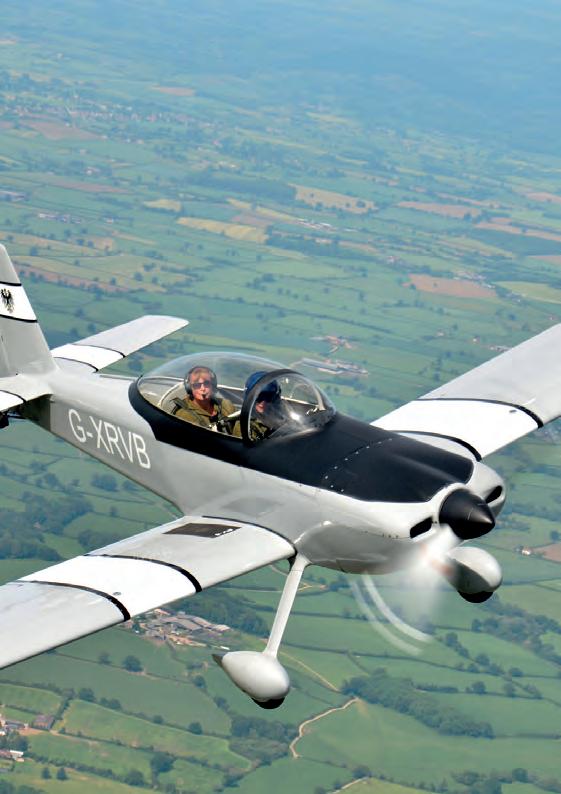




For all display or commercial advertising enquiries please contact Neil Wilson: 07512 773532 neil.wilson@laa.uk.com
You can email your classified advertisement direct to the LAA at the following address: office@laa.uk.com
Deadline for booking and copy:
21 April 2020
If you would like to place an aircraft for sale advert please see details below:
MEMBERS’ ADVERTISEMENTS
Up to 30 words: £6; 31-50 words: £12
Up to 50 words with a coloured photo: £45
NON-MEMBERS’ADVERTISEMENTS
Up to 30 words: £22; 31-50 words: £44
Up to 50 words with a coloured photo: £60 www.laa.uk.com
AIRCRAFT APPROVED? Members and readers should note that the inclusion of all advertisements in the commercial or classified sections of this magazine does not necessarily mean that the product or service is approved by the LAA. In particular, aircraft types, or examples of types advertised, may not, for a variety of reasons, be of a type or standard that is eligible for the issue of a LAA Permit to Fly. You should not assume that an aircraft type not currently on the LAA accepted type list will eventually be accepted.
IMPORTED AIRCRAFT? Due to unfavourable experiences, the purchase and import of completed homebuilt aircraft from abroad is especially discouraged.
TIME TO BUILD? When evaluating kits/designs, it should borne in mind that technical details, performance figures and handling characteristics are often quoted for a factory-produced aircraft flying under ideal conditions. It is wise, therefore, to seek the opinion of existing builders and owners of the type. You should also take your own skill and circumstances into consideration when calculating build times. The manufacturer’s build time should be taken as a guide only.
AMATEUR BUILDING All LAA aircraft builders and potential builders are reminded that in order to qualify for a LAA Permit to Fly, homebuilt aircraft must be genuinely amateur built. For these purposes the CAA provide a definition of amateur built in their publication CAP 659, available from LAA. An extract from CAP 659 reads “The building and operation of the aircraft will be solely for the education and recreation of the amateur builder. This means that he would not be permitted to commission someone else to build his aircraft”. An aircraft built outside the CAA’s definition could result in an expensive garden ornament.
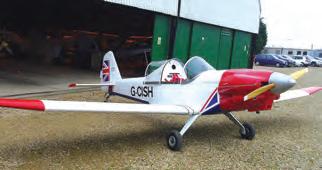
Thatcher CX4 G-CISH This all aluminium new build single seat aircraft can be seen at Fenland Airfield, Lincs. It has a current permit to fly with 40 hours TTE, a Revmaster 2100 engine with Revflow carb, cruising 80 - 90 knots on 9 litres per hour, Icom 8.33 radio. £17500 contact Peter on 07557 140 620. Can deliver
1943 Auster Mk V. Normandy veteran 1944. Equipped with 8.33 radio, ADF, transponder, long range fuel tank. Current permit. Spares negotiable. 01283 760303.
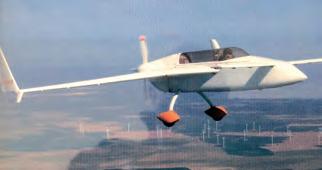
Rutan Varieze G-BIMX. Two owners since 1983. Engine Continental O-200, 604 hours. Airframe 604 hours.Radio, new b.33, Mode C transponder. Have flown BIMX for 27 years, time to let someone else enjoy her. £15,000 ono. Call David Crew on 07940 838476 or email david.crew3@yahoo.com
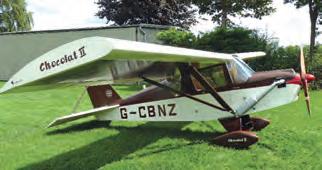
Team Himax 1700R - SSDR Microlight (microlight licence required) – 405 hrs. Built as LAA permit a/c with hangerage available Worcs. Rotax 447 CDi. Newton prop, pull start in cabin. Instruments include Airbox Aware, Pilot lll GPS, ICOM 8.33kHz radio, plus Lynx headset. Full service history. Quantity spares/tools etc. Inspection/offers invited. Contact owner/builder/pilot:aj@apsjohn.net or 07770 210642
France, Loire. Montrichard private airfield. Hangarage for two aircraft, four-person cottage. Package designed by flyers for flyers. £700 per week. www.lachaumine.co.uk Tel 07802 217855 or 01424-883474.

EAA Biplane G-AVZW. Will be sold with a new permit. Offers invited. Contact Chris 07973 627715.
Aeronca Champ 7DC rebuild project. Some work done. Complete aircraft 01283 760303.

Pazmany PL4 project. Single seat aluminium. VW 1776. Minimally inspected but documented. Not flown but engine run. On trailer. derrick.hills@talktalk.net
GROUP FLYING

Waltham based hangared RV6, 1/4 share for sale. Built 2003, TT 850+ Eng.650+ 160hp. 150Kt cruise. 30 Lph, capacity 140 Lts. Fixed Sensenich cruise prop. Dynon Skyview SE. Two-axis autopilot with auto level. Two iPad mini mounts with power. Trig Ty91 8.33. Mode S with ADS-B out. PilotAware. Two Lightspeed Zulu headsets. PLB, cover, tie downs. £19,500. Further details contact Dave 0791 722 5013
Email: davelisterc5@gmail.com
Tiger Moth Wings, overhauled, covered and Released for Service. Available now. Also, other components. Currently in first coat silver will just need topcoat.
Telephone David 01732 822 686
Light Aircraft Weighing Service in East Yorkshire and surrounding area. For details contact Demraview Ltd. Email: Demraview@gmail.com. Mob: 07984 810761.


